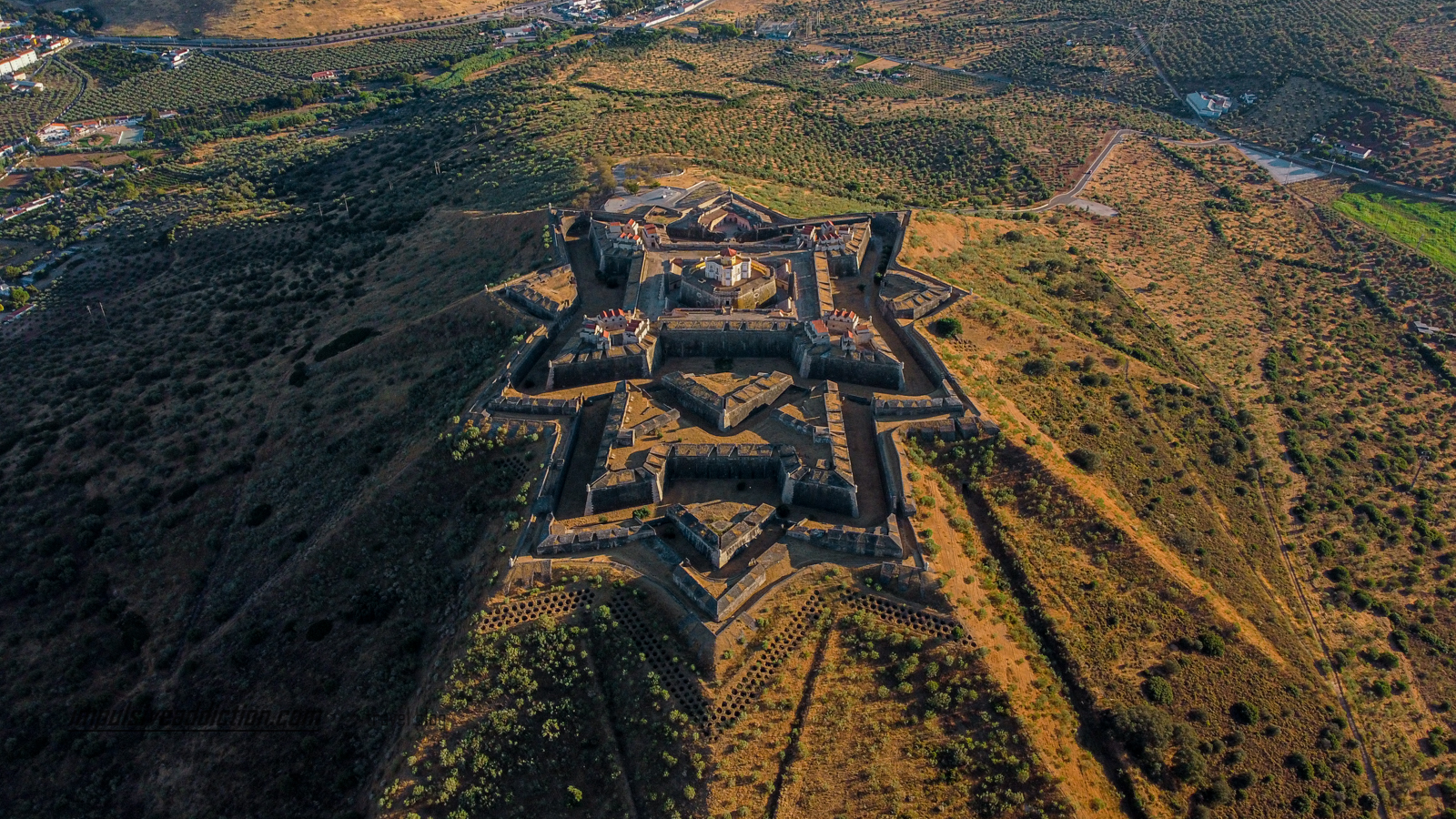Elvas is considered by many to be the Queen of the Border, but for me it is also the Queen of the whole Alentejo region, being the most fortified city in all of Europe, with fortifications that are the largest in the world, in the bastioned style, and a UNESCO World Heritage Site since 2012.
Inexplicably, Elvas isn’t included in the 7 Wonders of Portugal, but its Graça Fort, for example, deserved one of those places, being for me one of the most extraordinary and unique monuments in the country. Valença do Minho doesn’t come close, and the same goes for Almeida, which is one of Portugal’s 12 Historic Villages.
In this article, I’ll give you a detailed itinerary of everything there is to see and do in Elvas. You’ll be amazed by the rich history of this Alentejo town, so read on!
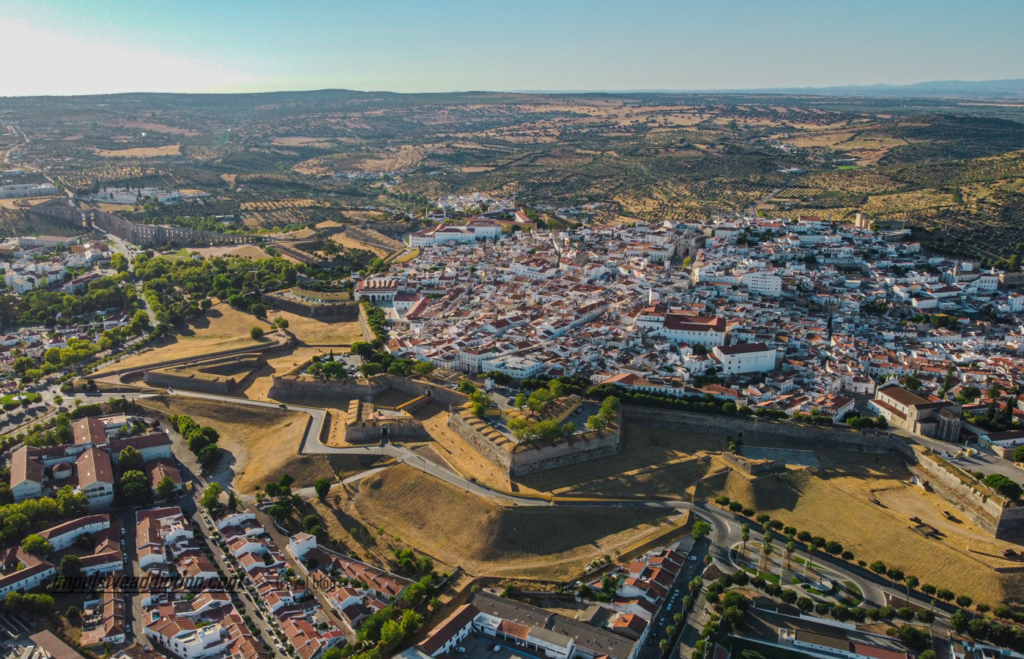
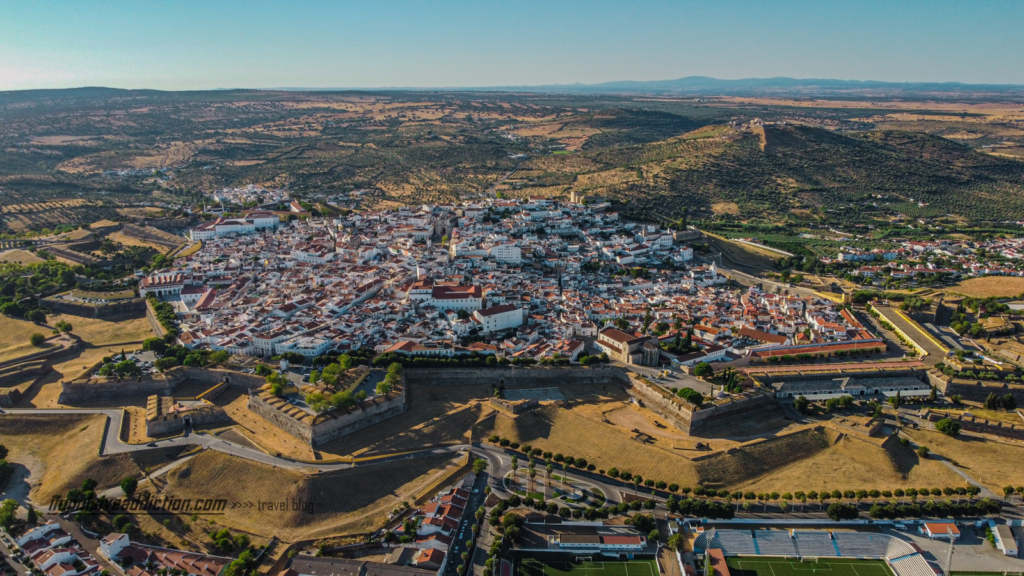
Where is Elvas located, in Portugal?
Elvas is located in High Alentejo, right on the border with Spain. To the north is Serra de São Mamede Natural Park, and to the south is the Great Lake of Alqueva.
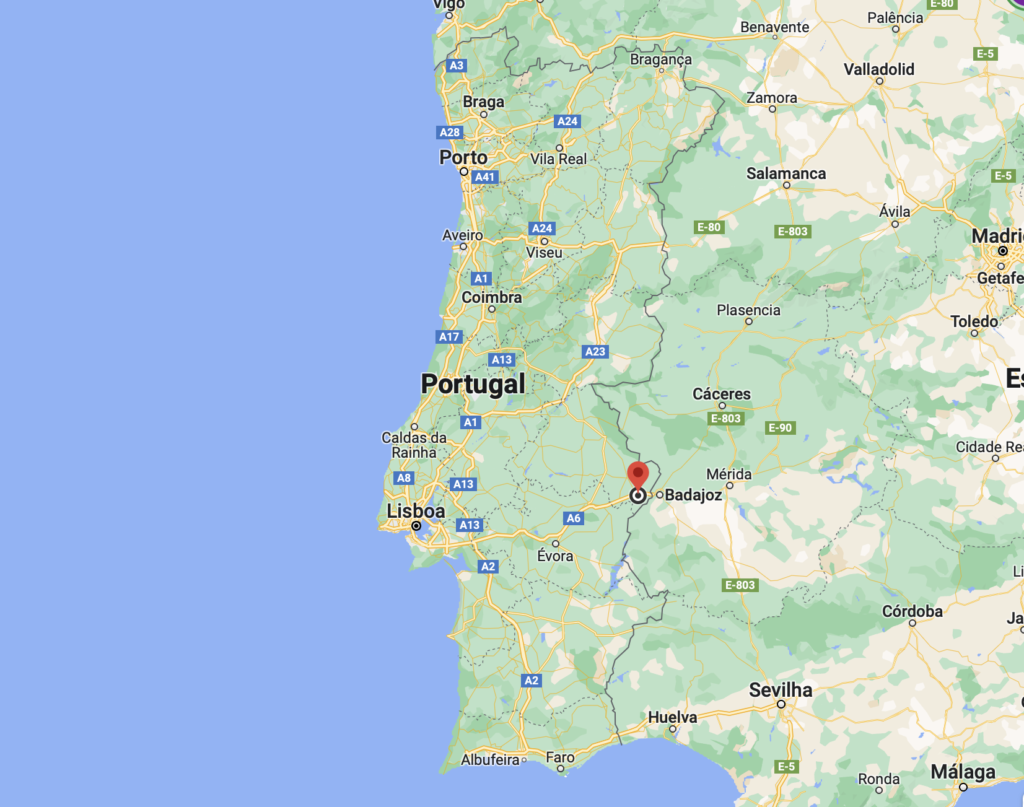
MORE ARTICLES FROM ALENTEJO AND ALGARVE: - Best Costa da Caparica beaches - Best beaches in Setúbal - Best Beaches in Sesimbra - Visit Ribeiro do Cavalo Beach - Best beaches in Tróia, Comporta and Melides - Best Beaches in Alentejo and Vicentine Coast - Things to do in Odemira and Vila Nova de Milfontes - Things to do in Marvão - Things to do in Estremoz - Things to do in Vila Viçosa - Things to do in Monsaraz & Alqueva Lake - Things to do in Porto Covo and Sines - Things to do in Arraiolos - Things to do in Évora - Things to do in Mértola and Guadiana Valley - Things to do in Beja - Algarve Road Trip Itinerary - Best Beaches in Algarve - Things to do in Sagres - Things to do in Lagos - Best Beaches in Lagos - Things to do in Portimão - Things to do in Armação de Pêra and Silves - The Seven Hanging Valleys Trail - Best beaches in Carvoeiro and Lagoa - Best Beaches in Albufeira - Things to do in Vilamoura and Quarteira - Things to do in Faro - Things to do in Tavira - Things to do in Olhão - Things to do in Monte Gordo
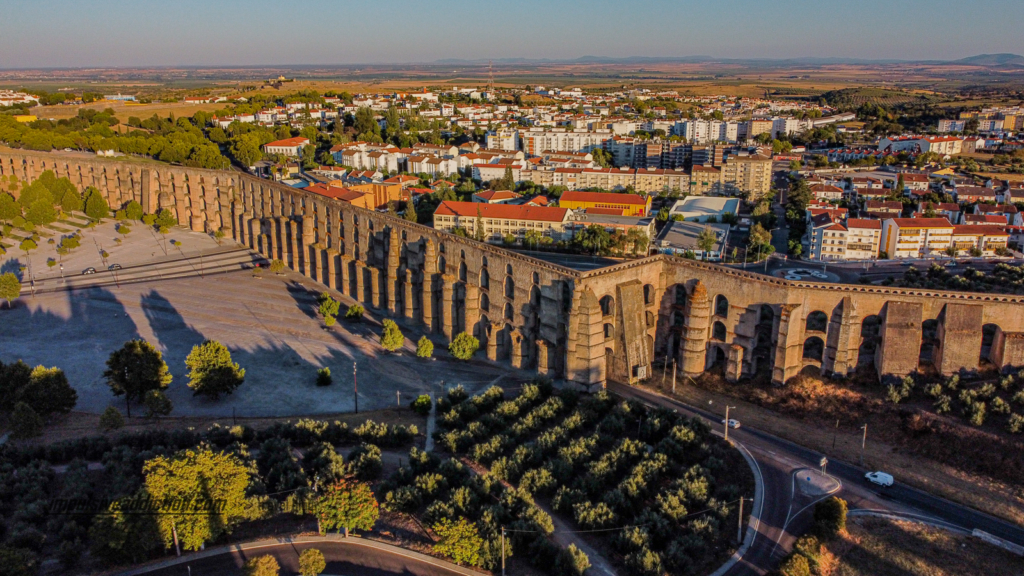
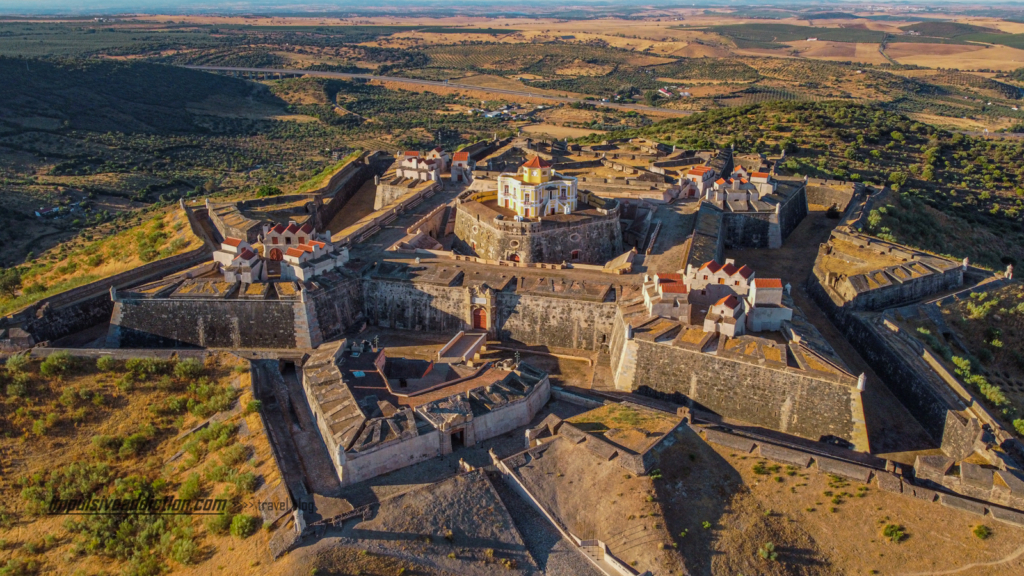
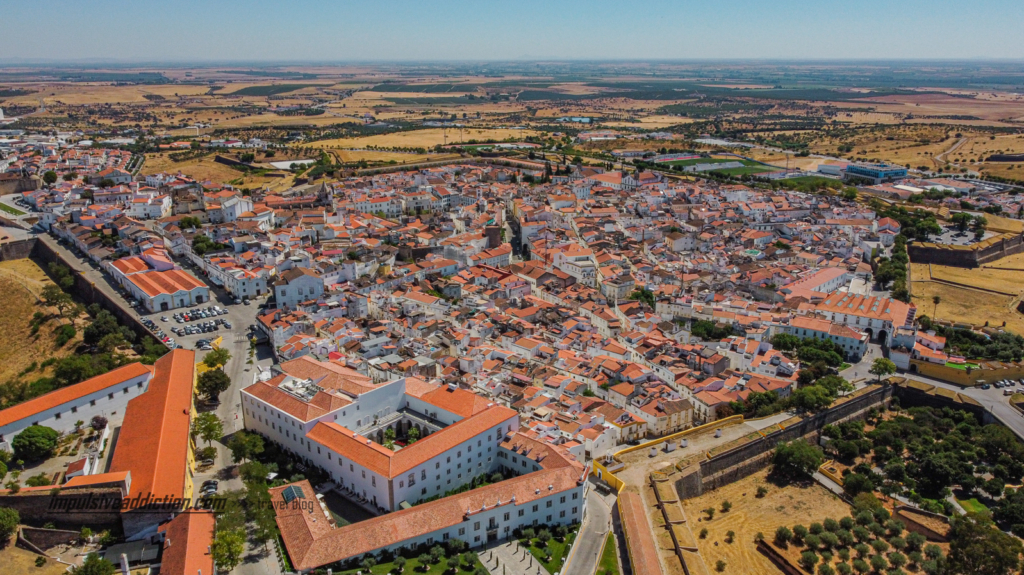
When to visit Elvas?
I’ve had the opportunity to visit Elvas three times, and always in different seasons. In my opinion, Elvas should be visited in spring or early fall, avoiding the hellish summer months in the Alentejo and at the same time the coldest months of the year.
You should also take into account the festivities that take place there. For example:
- Elvas Medieval Festival, in June.
- São Mateus de Elvas, in September.
- Elvas International Folklore Festival, in August.
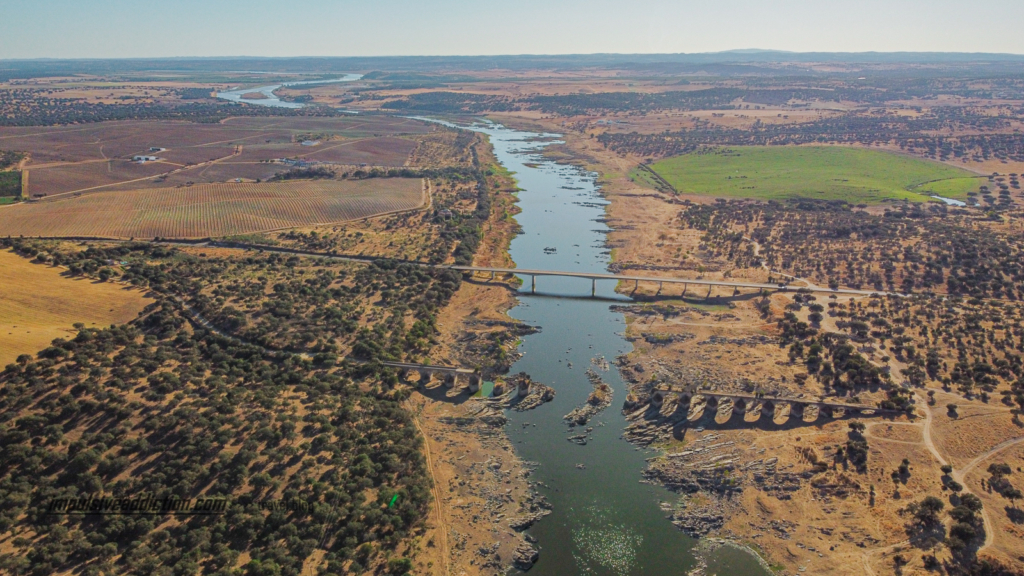
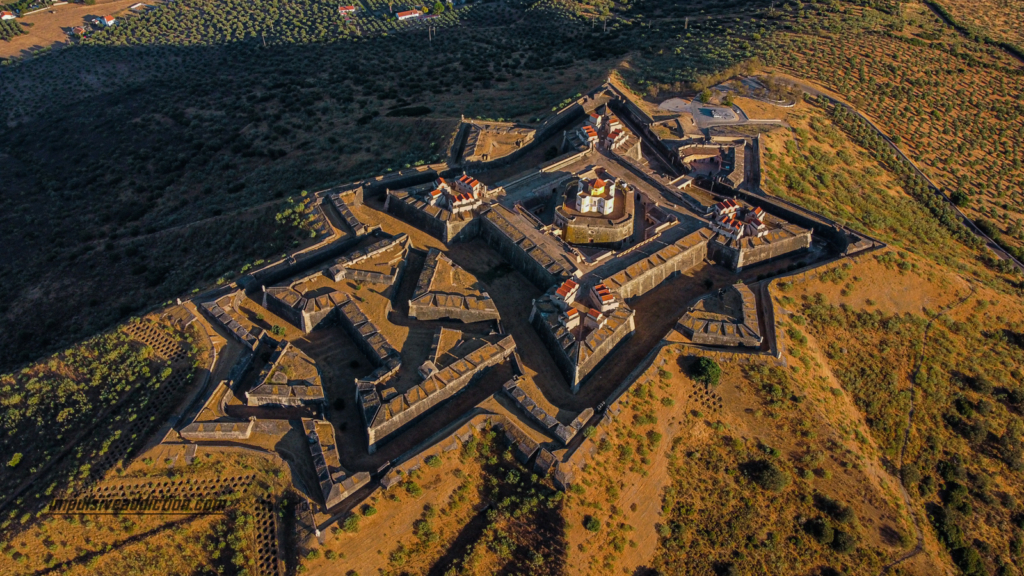
Travel Insurance + Car Rental
Having a car is a must for your itinerary in Alentejo. If you don’t have a car, rent one with Discover Cars, which allows you to analyze and compare prices between different rental companies until you find the best deal.
Likewise, travel insurance should be taken out without fail when you visit Portugal. We are all subject to bad luck. 😐 Opt for Travel insurance with World Nomads.
Gastronomy and Restaurants in Elvas
When it comes to gastronomy, Elvas will certainly surprise you:
- You must try Bacalhau Dourado, typical of Elvas and made with eggs and fried straw potatoes.
- There’s the traditional Alentejo bread, and then the Black Pork with the famous migas.
- How about Açorda Alentejana or Lamb Stew?
- For dessert, Sericaia accompanied by Plums from Elvas.
- Restaurants: Acontece, O Lagar or A Adega Regional
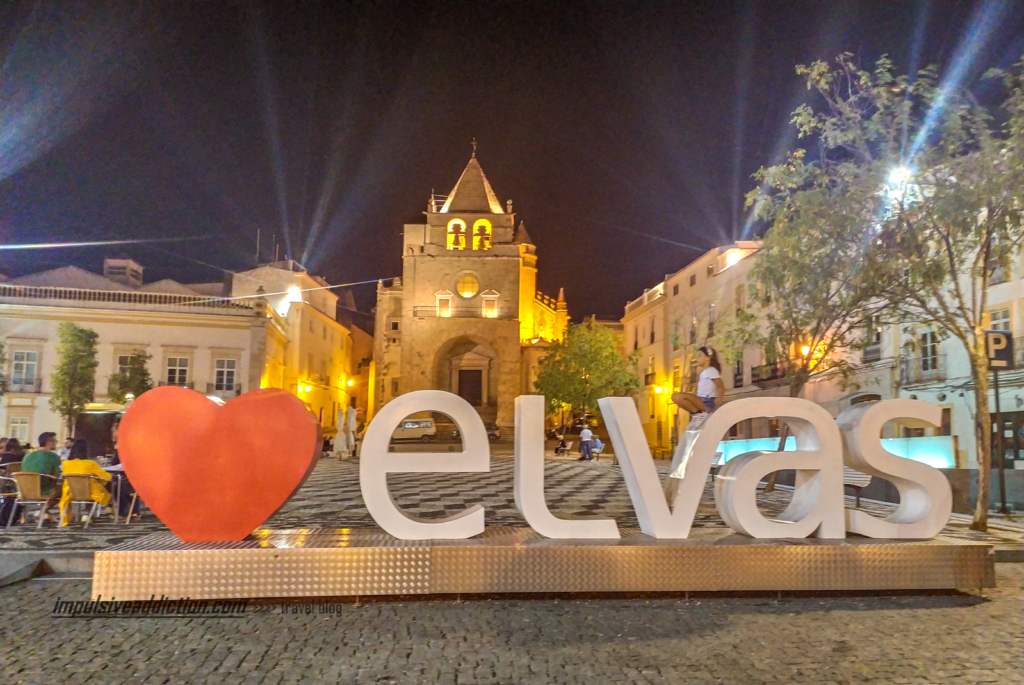
Accommodation tips to visit Elvas
| Accommodation | Score | Location |
|---|---|---|
| Very Typical Hotel | 9.0 | Elvas |
| Elvas the Queen Residence | 9.4 | Elvas |
| Largo da Vizinha Bia | 9.1 | Elvas |
| Casas de Alcamim | 9.2 | Elvas |
| Vila Gale Collection Elvas | 8.9 | Elvas |
| Travassos 11 | 9.5 | Elvas |
| Monte da Provença | 9.2 | Elvas |
| Casa do Forte de Elvas | 9.0 | Elvas |
Things to do in Elvas | Portugal
Here’s my suggested itinerary for 2 days visiting Elvas. If you only have one day, you should focus first on the Fort of Graça, then move on to the historic center of Elvas, aqueduct and Military Museum.
I’ll start by leaving you with a map that can help you plan your route, which also includes places in Badajoz and Campo Maior, located near Elvas. If you only intend to visit Elvas, focus on the points in red.
Map with things to do in Elvas
Visit the Historic Center of Elvas
In this first stage, I recommend that you visit Elvas from inside the walls of its fortress: there is so much to explore! On foot, I suggest a quick tour of the city’s main sights, stopping off at the best museums and the castle. And, of course, you can’t miss the Amoreira Aqueduct.
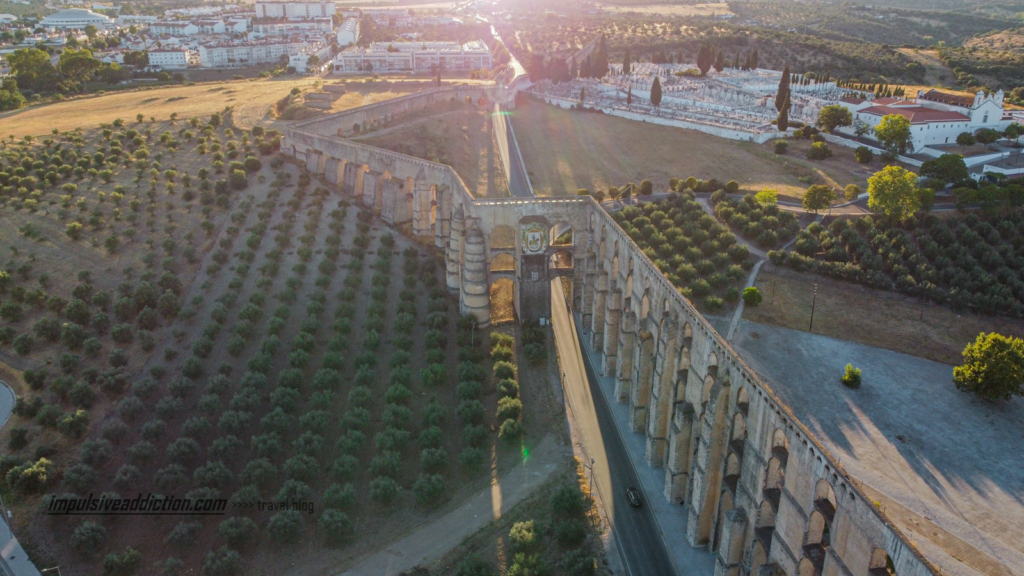
1. Amoreira Aqueduct in Elvas
You’ll see the aqueduct from a distance, of course, from various viewpoints along this route. But nothing will compare with the view you get up close from its arches, or even when you arrive in Elvas by car. You’ll feel tiny because the aqueduct is very large indeed, and is in an excellent state of preservation.
The Amoreira Aqueduct was built during the 16th and 17th centuries and has an underground length of almost 1400 meters, to which a further 5500 meters must be added on the surface. At some points it is over 30 meters high, which facilitated the supply of water to the walled city, bringing water to the fountains inside the walls. It is the largest aqueduct on the Iberian Peninsula.
Unfortunately it’s not possible to walk over it, as you can in other aqueducts in Portugal. When I visited Elvas for the first time, I left the car parked outside the fortress wall, in a parking lot next to the Amoreira Aqueduct, and walked close to it to the access road to Porta da Esquina, where I started my tour of the city.
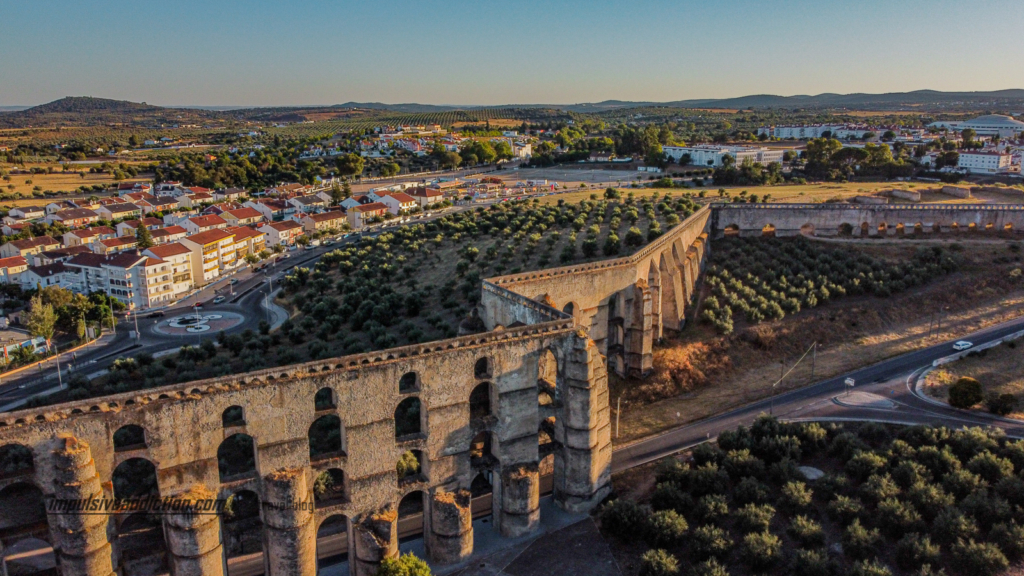
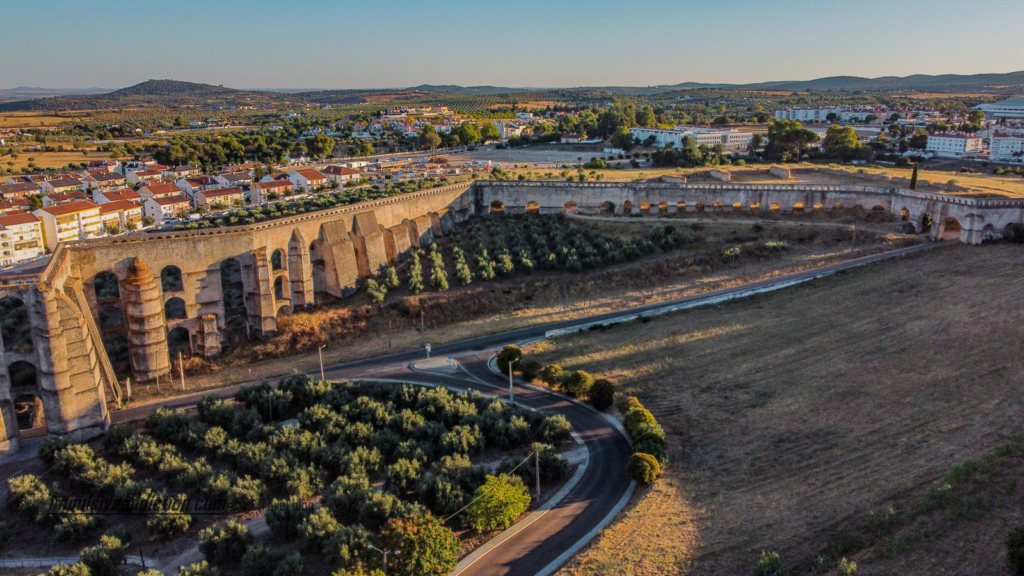
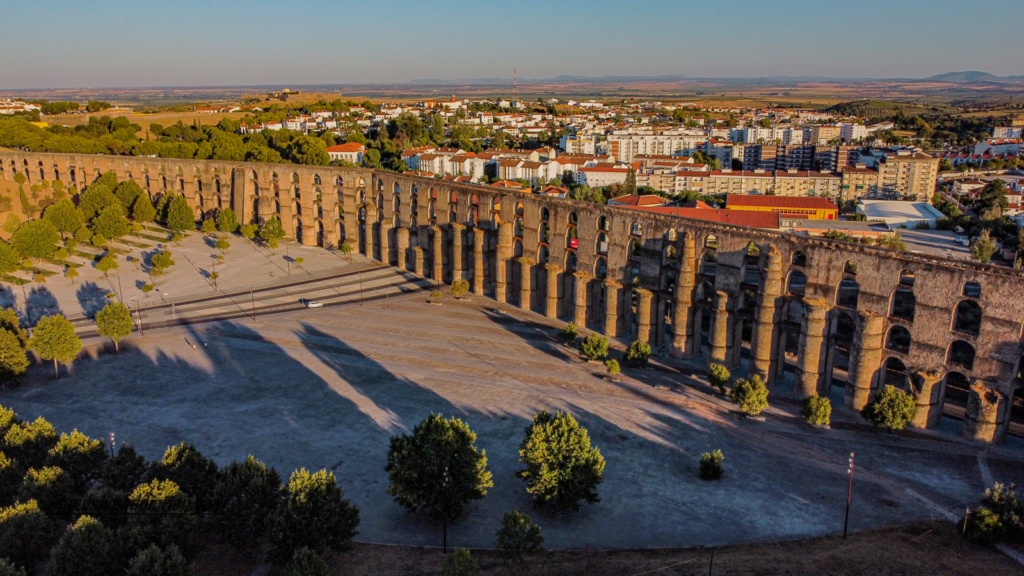
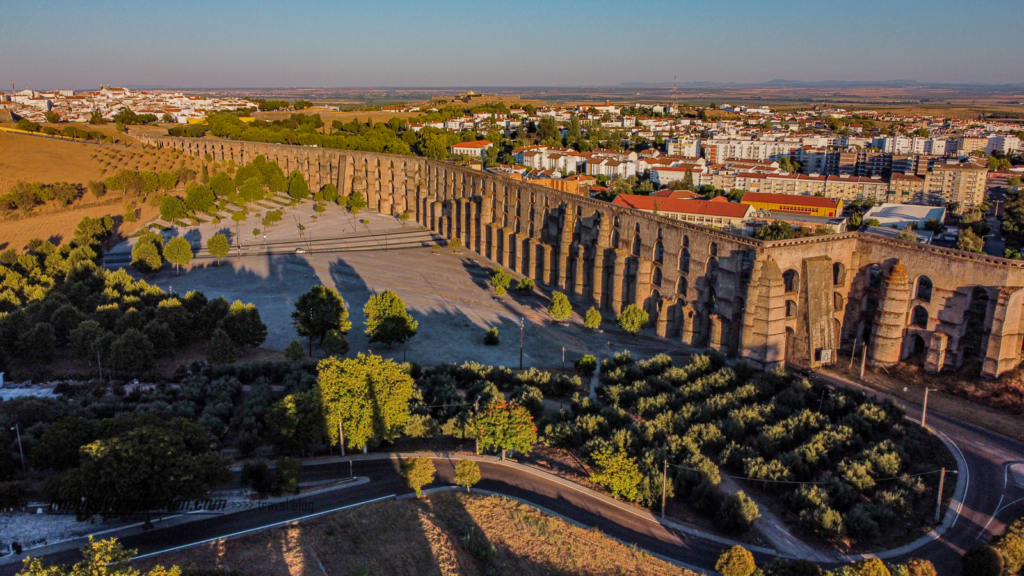
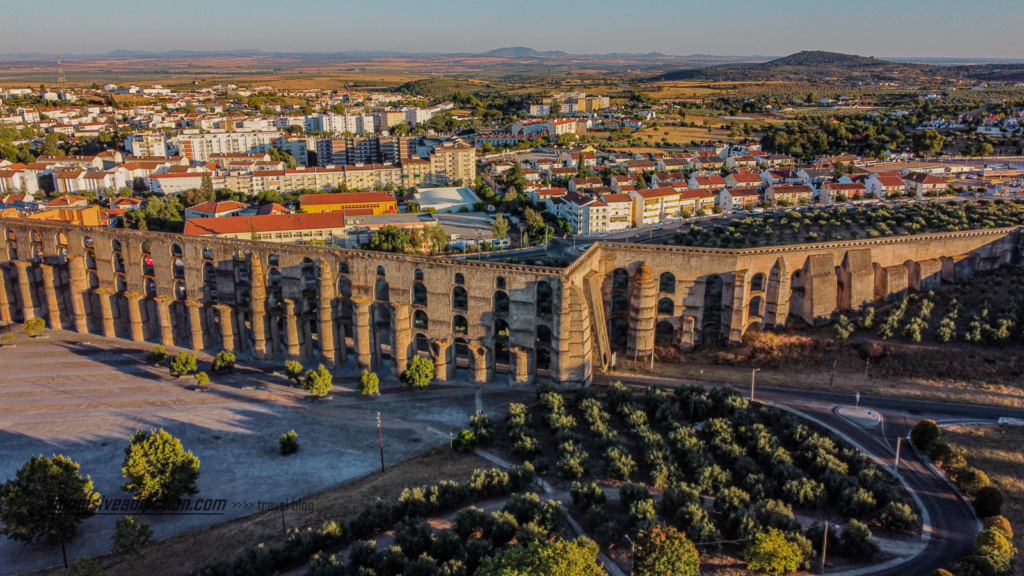
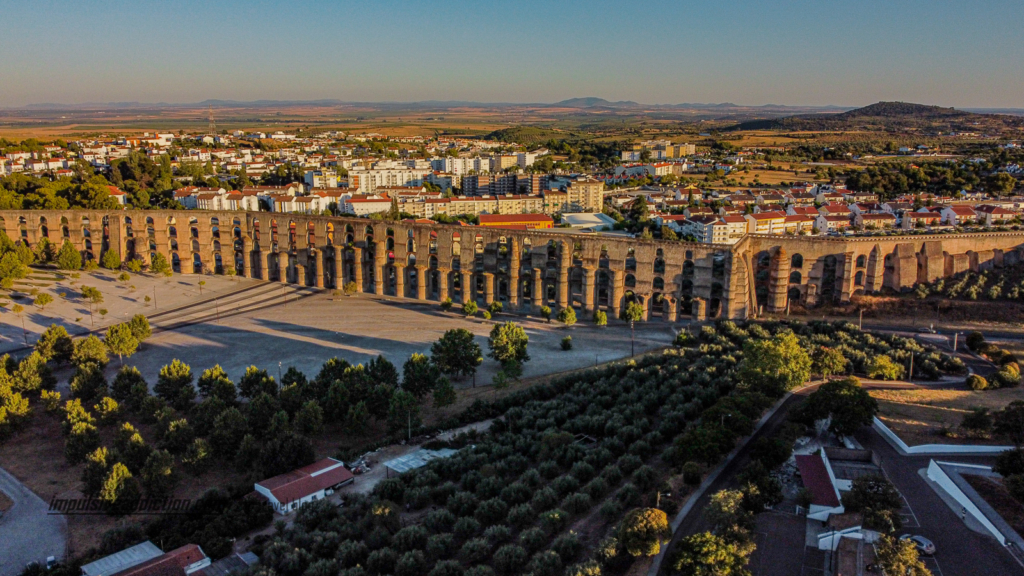
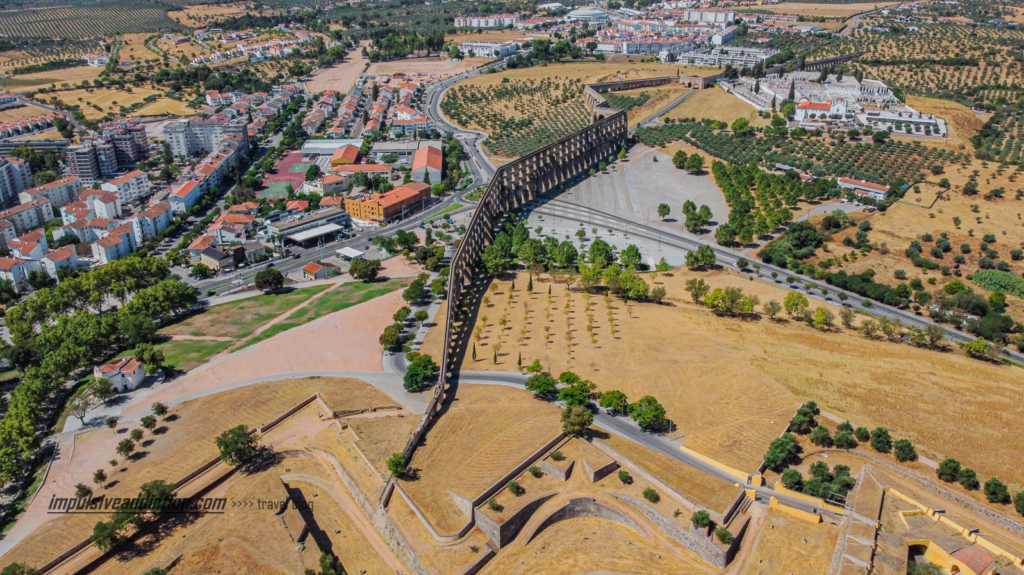
2. Paiol da Conceição and Church of Nossa Senhora da Conceição
After crossing the fortress gates “Porta da Esquina“, you have to go up the ramp immediately on the left, which gives access to the Church of Nossa Senhora da Conceição and Paiol da Conceição. Both were built in the 17th century, and while the former was intended to ask for divine protection for the fortification, the latter was built to store gunpowder. The towers of the Paiol da Conceição are actually lightning rods to prevent it from exploding for that reason: a serious risk at the time.
At this entrance through the Porta da Esquina (Corner Gates, in English), you’ll have the chance to take a closer look at part of the 17th century fortress of Elvas and one of its bastions, learning that it is Dutch-inspired. The walls have 7 bastions, 4 half-bastions, and three double gates (one of which is the Esquina).
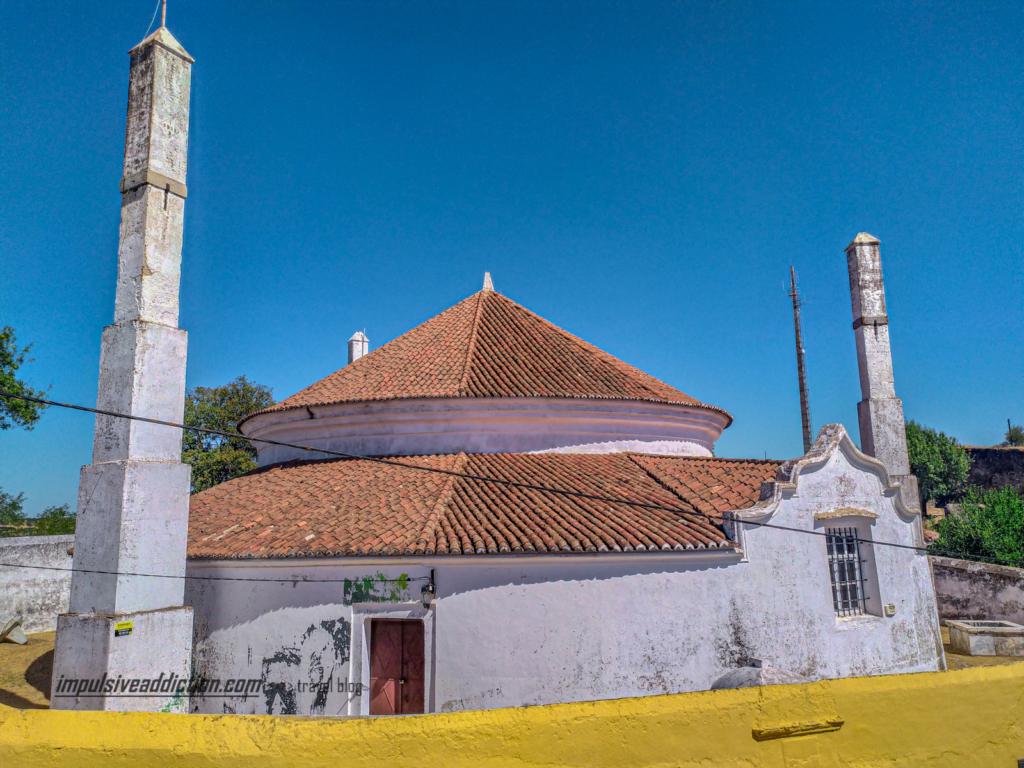
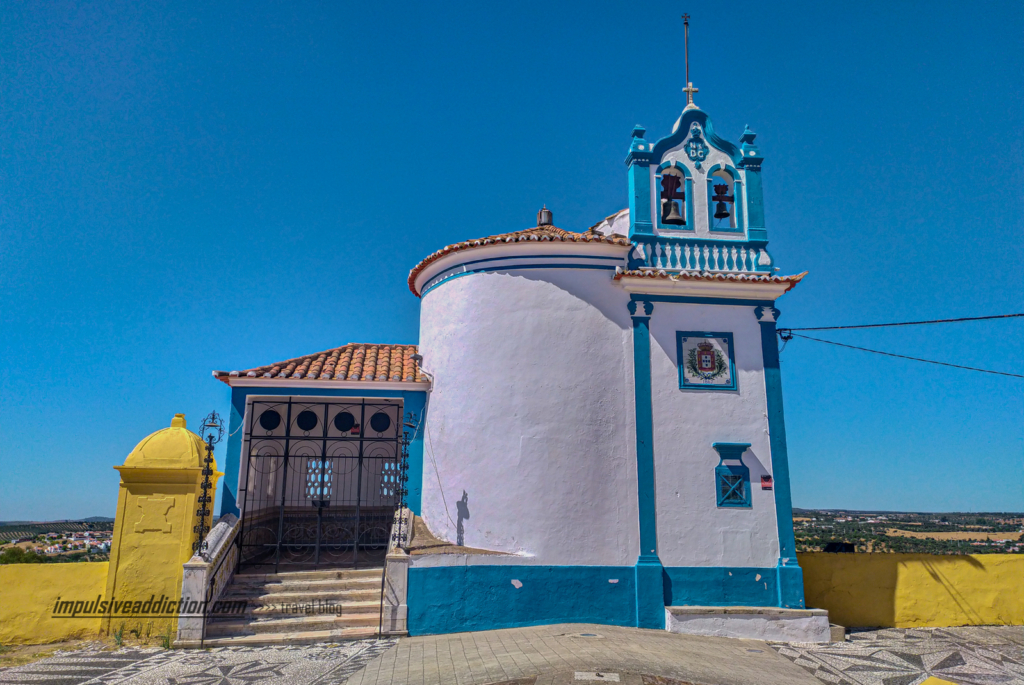
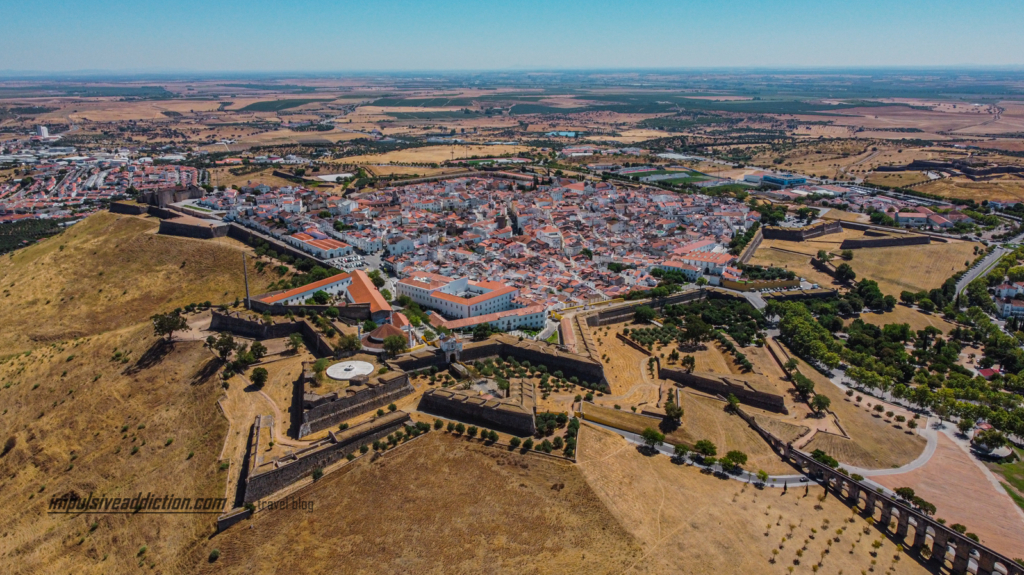
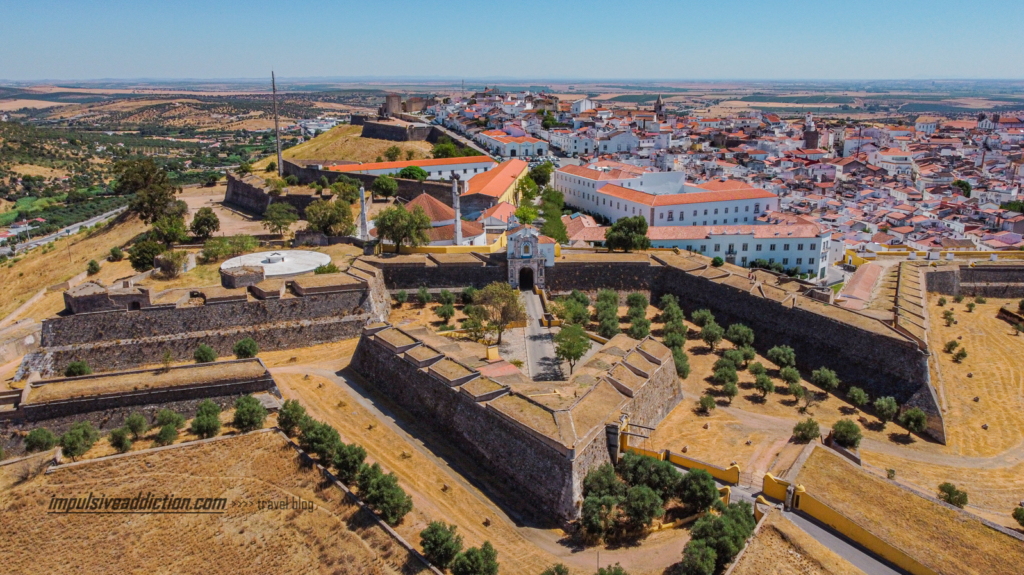
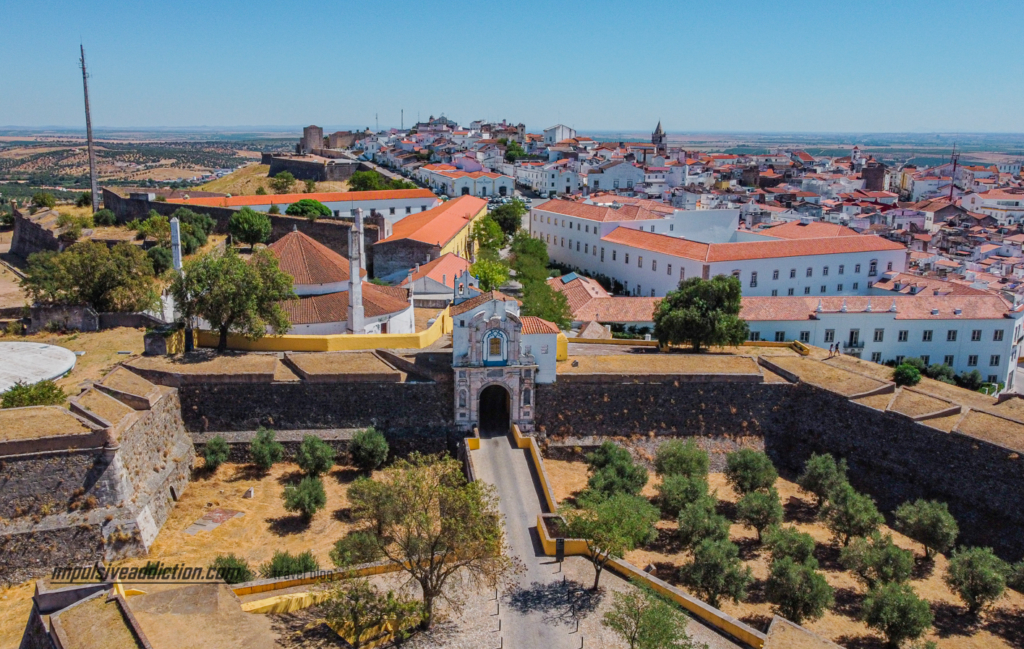
3. Casa das Barcas, the municipal market of Elvas
From Porta da Esquina to the municipal market is a short walk along Avenue 14 de Janeiro. Casa das Barcas can be visited from Tuesday to Saturday morning.
It was built at the beginning of the 18th century to store boats to be used for military purposes when crossing the border. It was once a political prison, became the city’s theater, even a cinema, and was finally converted into a municipal market. Don’t miss a visit inside.
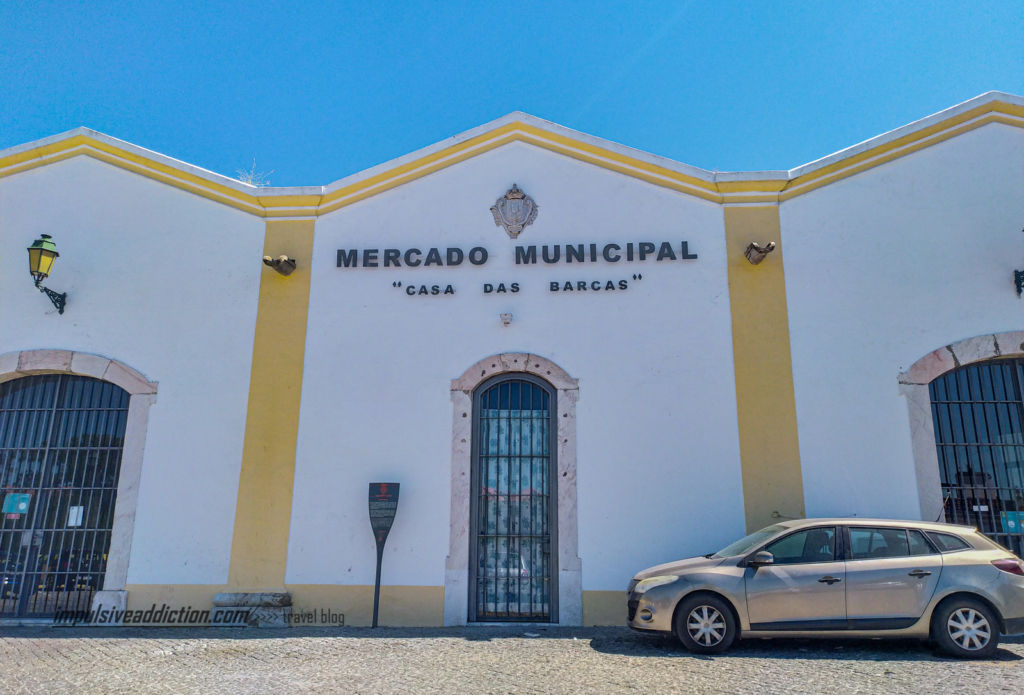
4. Elvas Castle
Following Rua dos Quartéis and then Rua Baluarte do Príncipe, you’ll come close to Elvas Castle. From there you’ll be able to see the hill where Graça Fort stands in the distance, the best tourist attraction to visit in Elvas.
But now for the castle! It’s older than the 17th-century walls of Elvas, as it has Islamic origins and was rebuilt in the 13th and 14th centuries. Access to the square inside the castle walls is free, and there’s a small bar you can enjoy. Access to the top of the walls is paid.
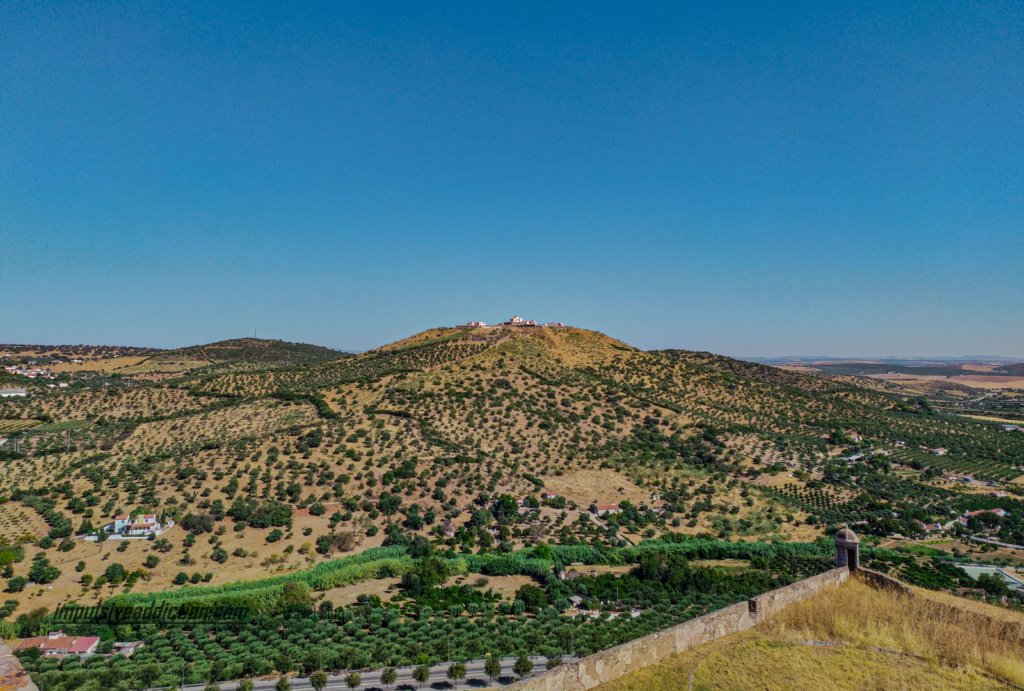
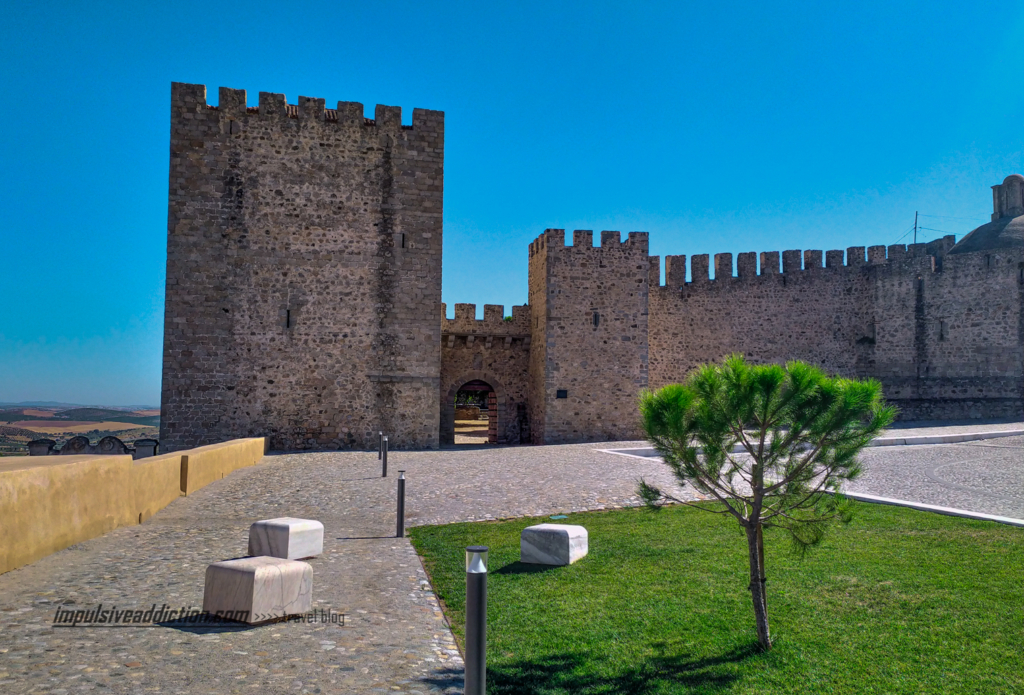
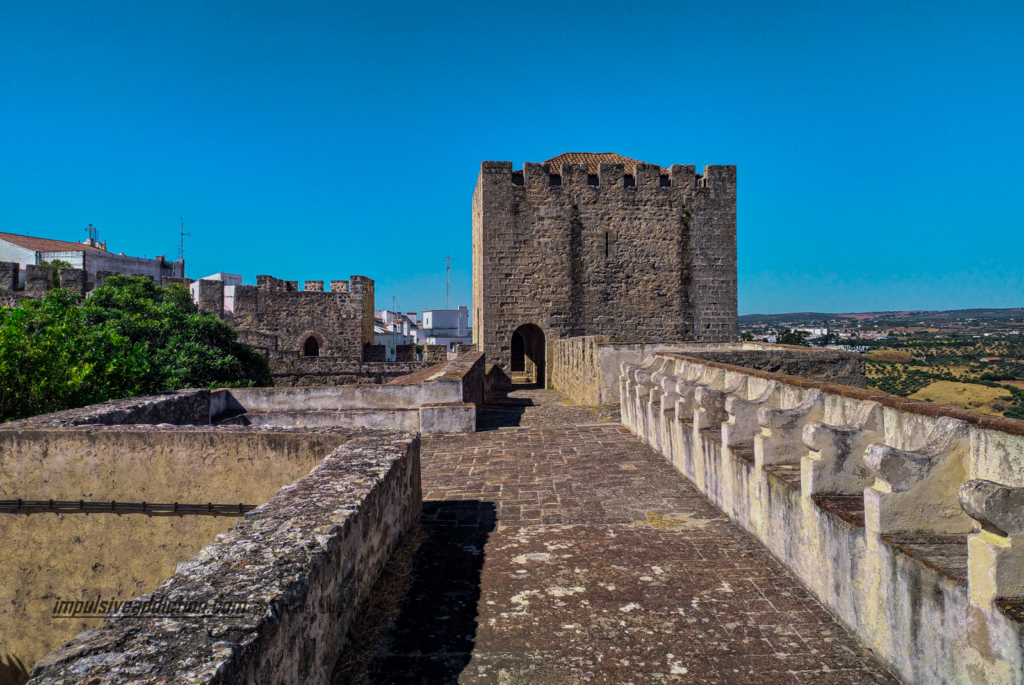
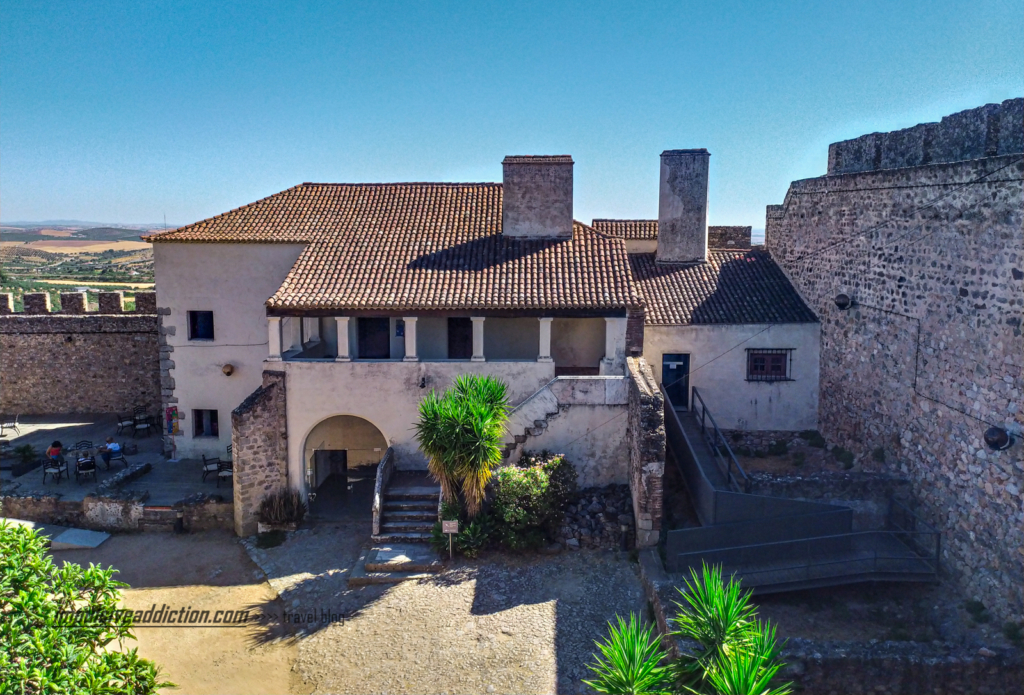
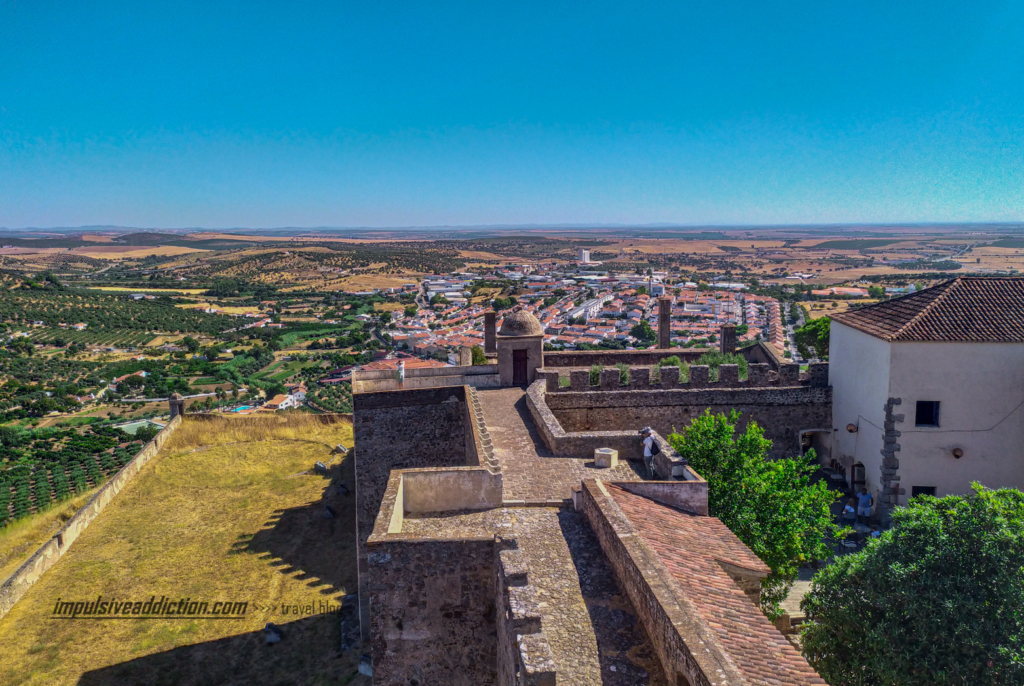
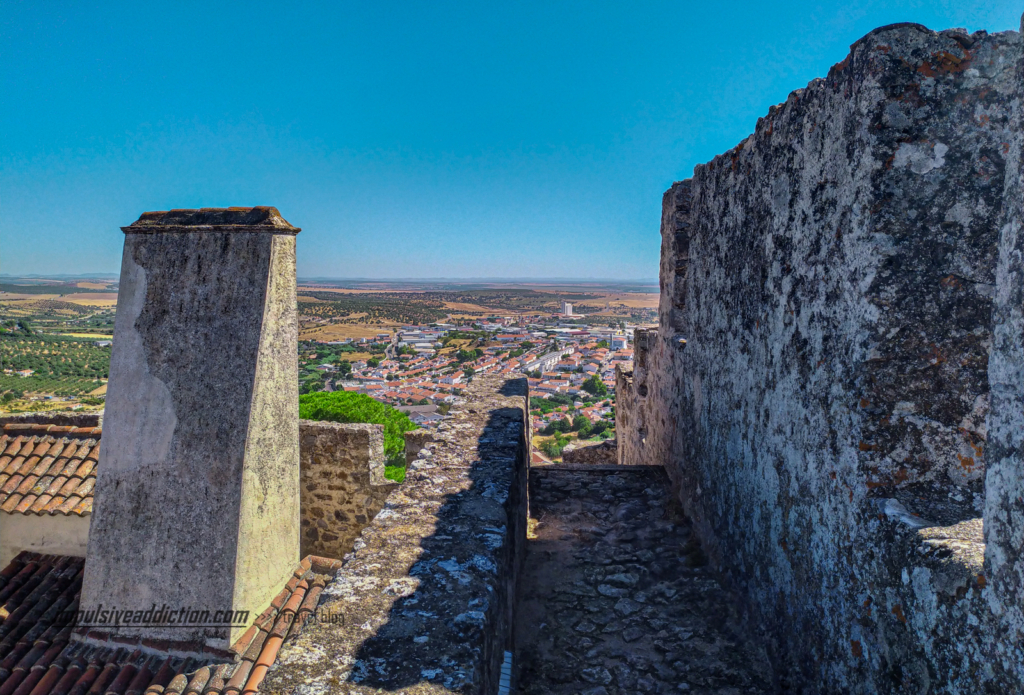
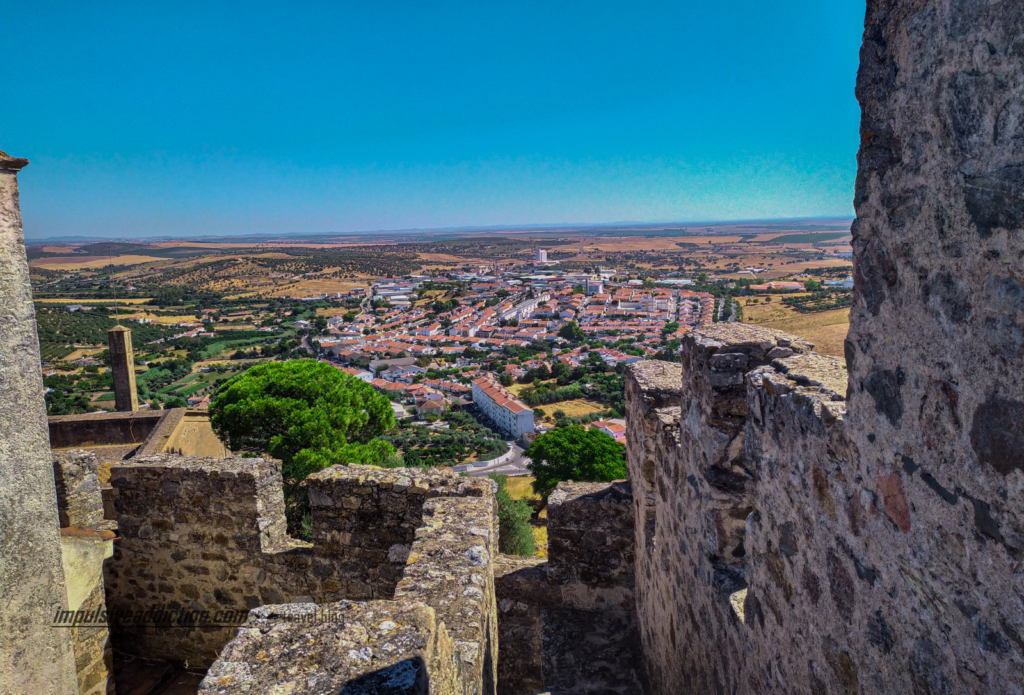
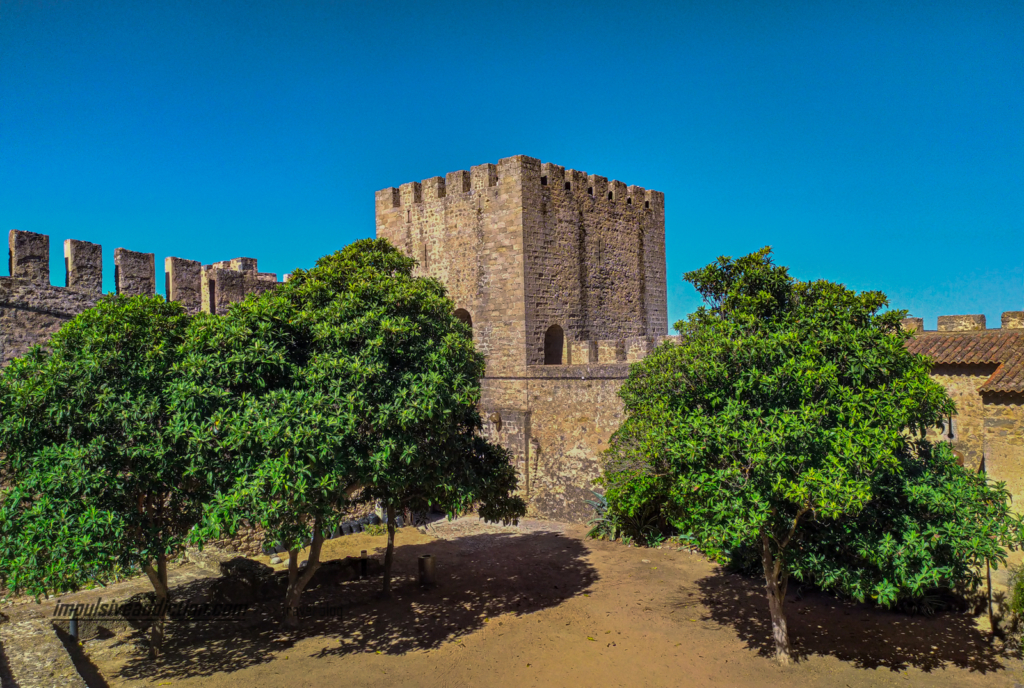
5. Elvas Telescope viewpoint
If you don’t want to pay the entrance fee to the castle walls, that’s fine: to the right of the castle is a large space from which you can enjoy equally incredible views of the city of Elvas. The observatory even has one of those coin-operated tourist telescopes.
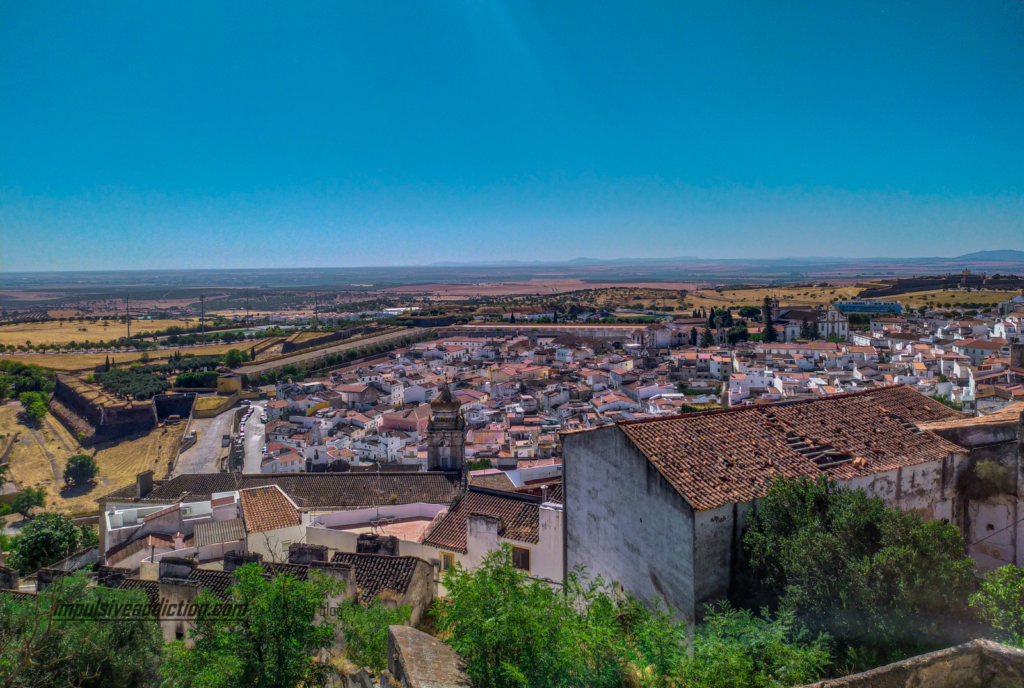
6. Miradeiro Arch and English Cemetery
I think it’s going to be hard to ignore Rua das Beatas, lined with flower pots: it’s probably the most beautiful street in Elvas. But trust me, leave that road for later. Cross first the Miradeiro Arch, part of what remains of Elvas’ first Islamic fence. It was one of its three gates, dating from the 8th century.
The English Cemetery dates back to the early 19th century and was built to bury the English war dead who, for religious reasons, could not be buried in traditional cemeteries. Next to the memorial you have a pleasant little garden with excellent views and shade to relax while reading a book.
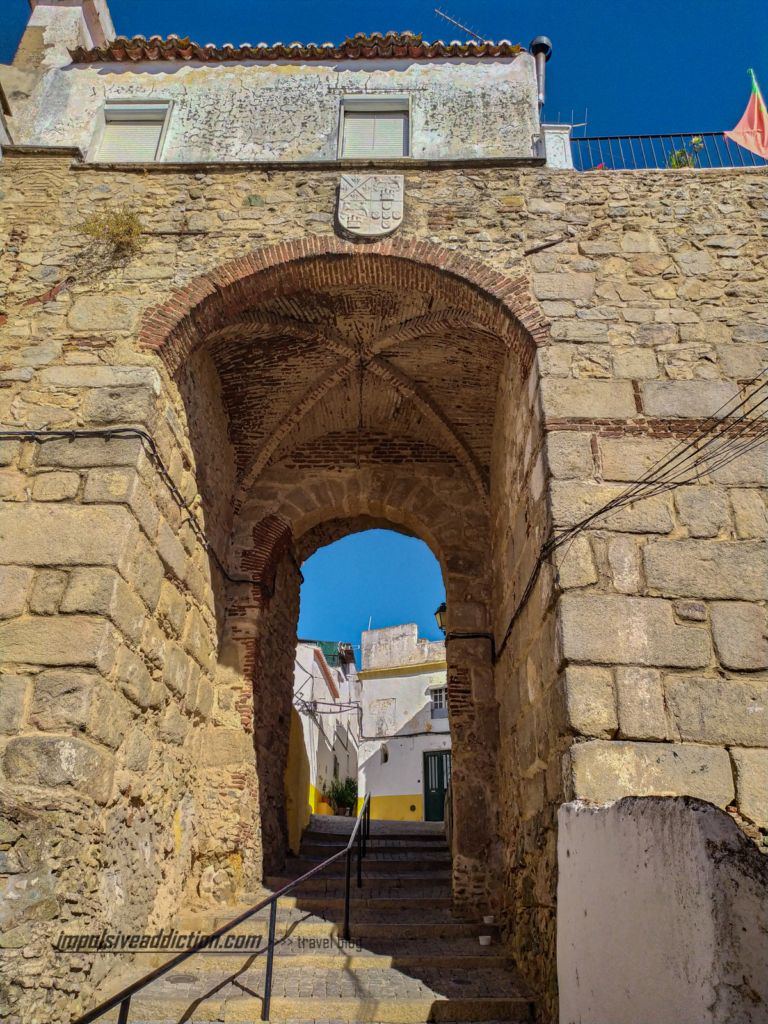
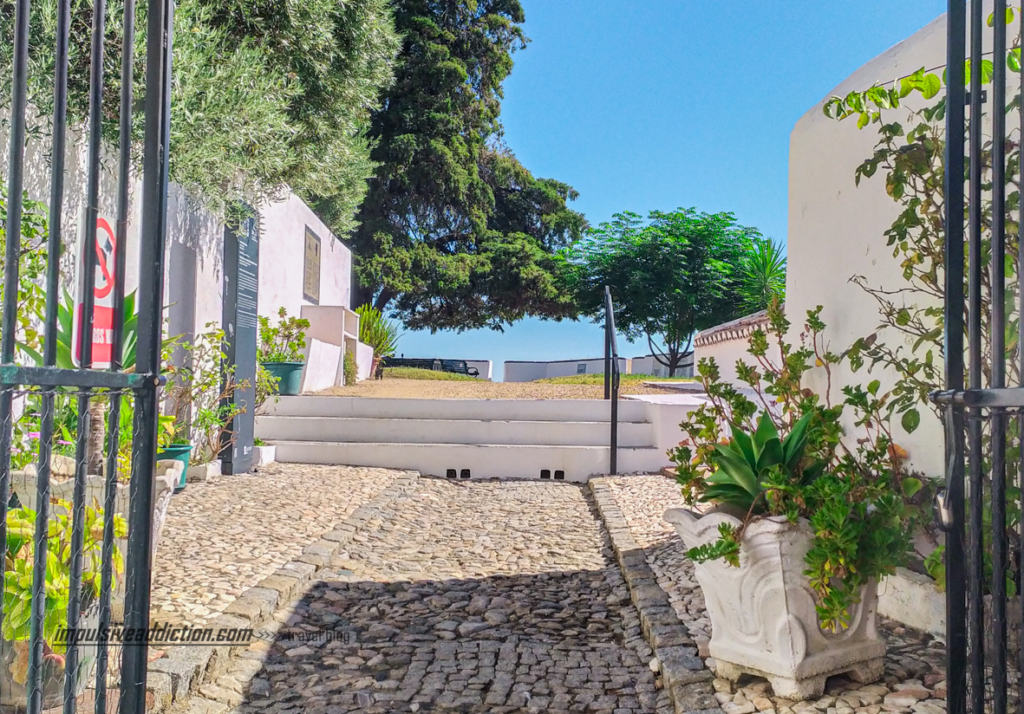
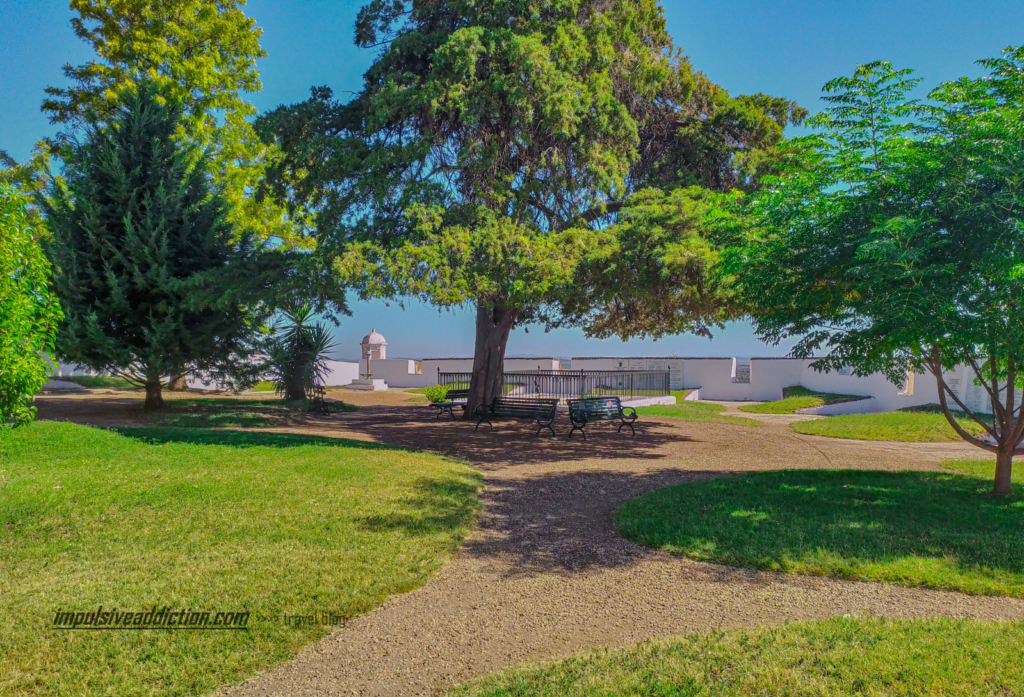
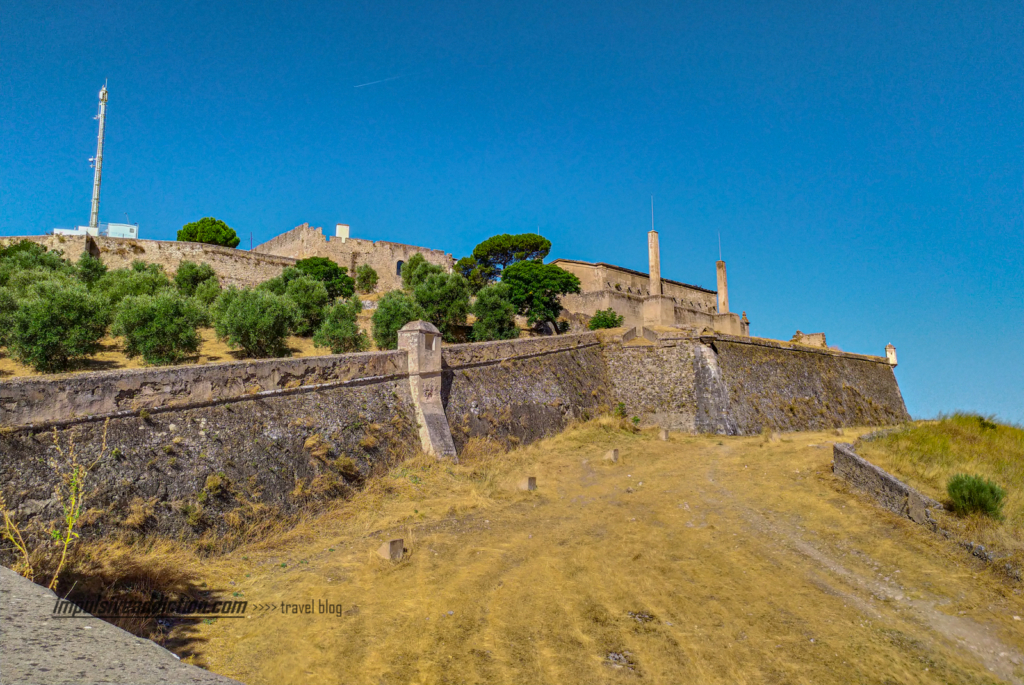
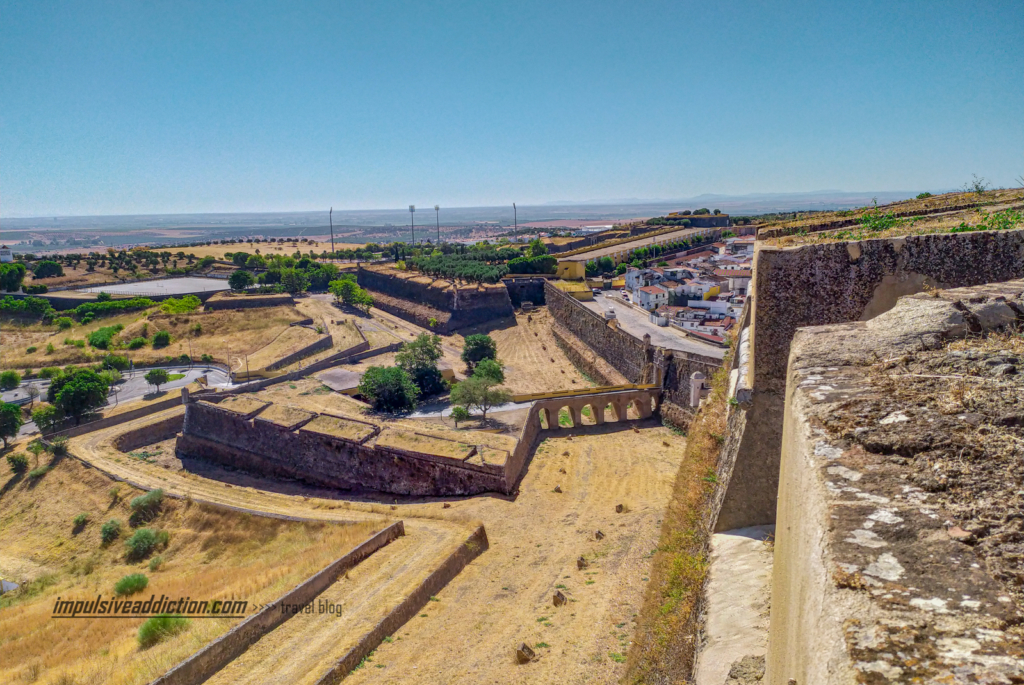
7. Plum Museum in Elvas
On the way back to Rua das Beatas, there is one other essential point to visit: the plum museum or factory. As this is Elvas’ most famous fruit, preserved in sugar, you can’t leave the city without tasting it or at least learning more about its history and traditional manufacturing process.
8. Rua das Beatas, the most beautiful in Elvas
Take your time, explore and photograph every nook and cranny of Rua das Beatas, and then head to Santa Clara Square, passing the Church of Santa Maria da Alcáçova on the way.
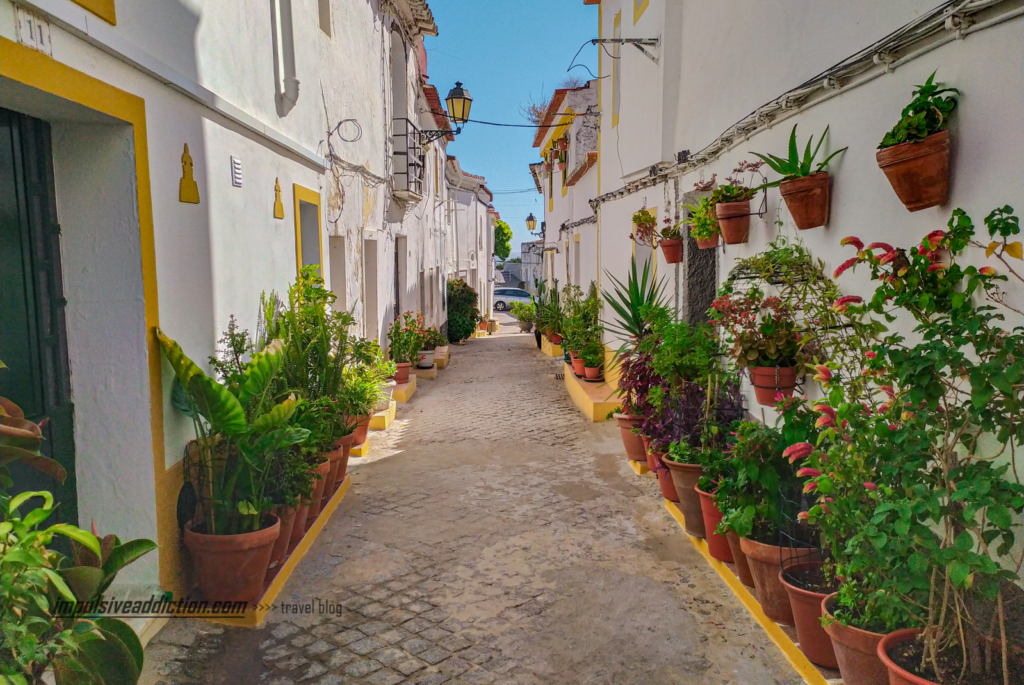
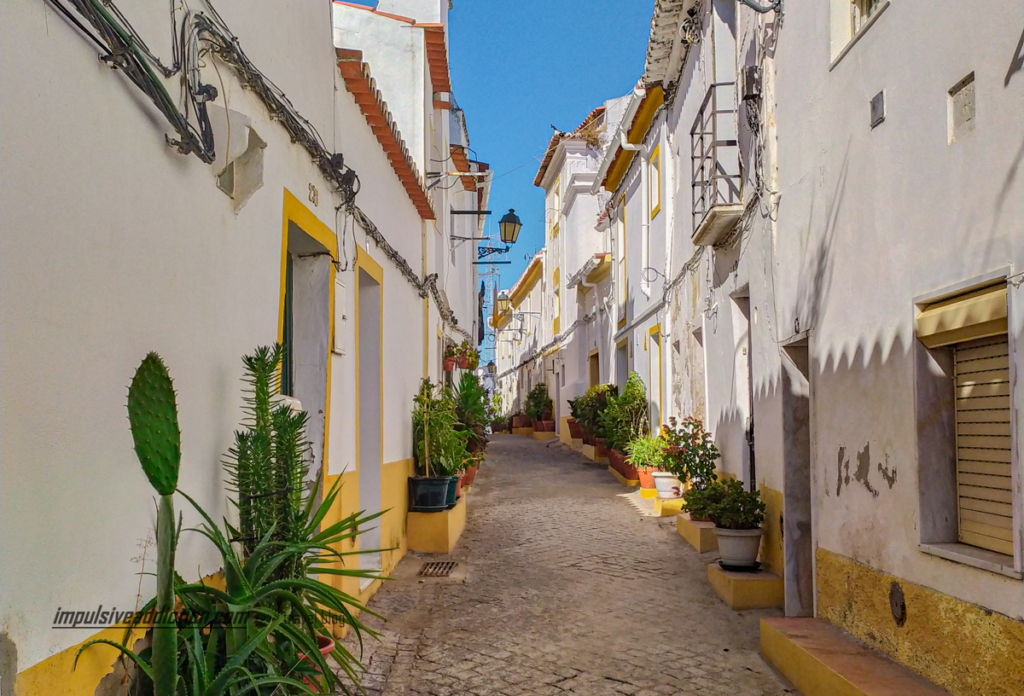
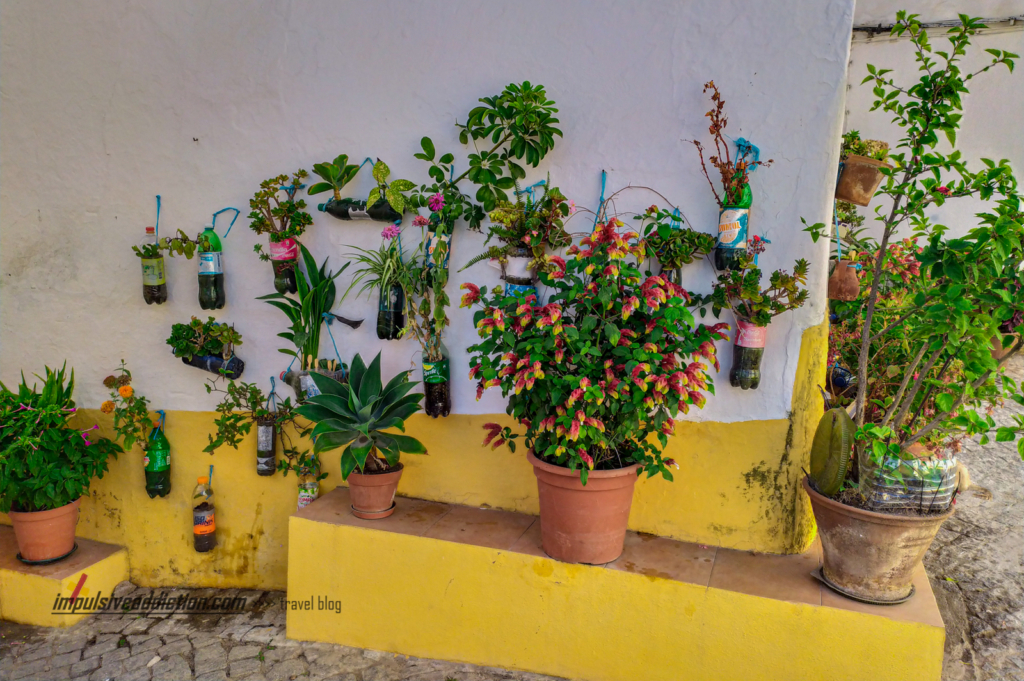
9. Santa Clara Square: pillory, arch and Dominicas Church
The Arch of Santa Clara, also known as Temple Gate, welcomes us to the square, and like the aforementioned Miradeiro Arch, it reminds us of the ancient first Islamic fence. As a detail from my second time visiting Elvas, two dogs were literally walking over the roofs near the top of the arch, and I’m still trying to figure out today how they got there.
The Pillory of Elvas was built in marble in the Manueline style in the 16th century, but was originally in Republic Square. Destroyed in the 19th century, it was rebuilt in this square in the 20th century and supposedly retains its original features: it is said to be a faithful replica.
Finally, the Church of Dominicas is undoubtedly the most fascinating tourist attraction in Santa Clara Square: from the outside it’s nothing interesting, and even goes unnoticed, but inside it’s the most beautiful church in the city. It dates back to the 16th century and was once part of a convent of nuns. Inside, it is completely covered in 17th century tiles. Don’t forget to climb the stairs to the church’s viewpoint.
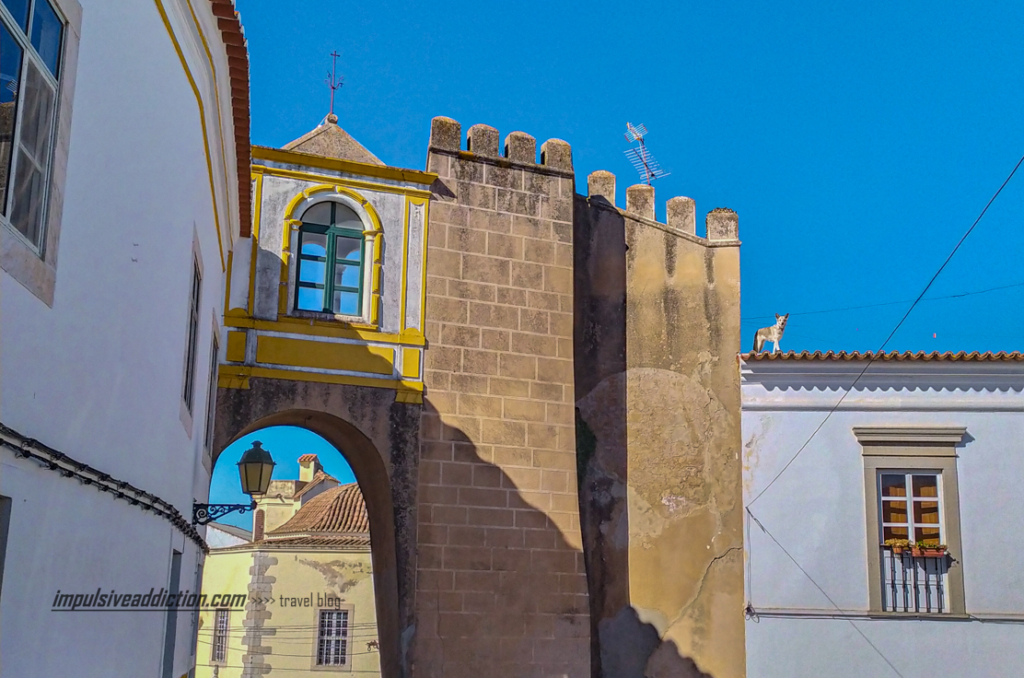
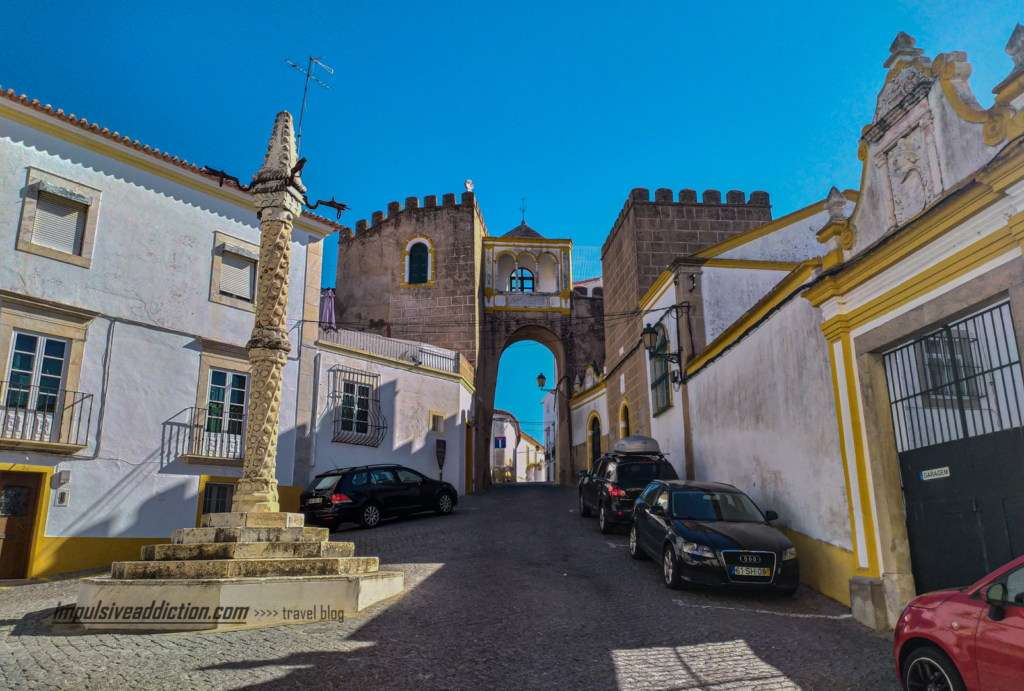
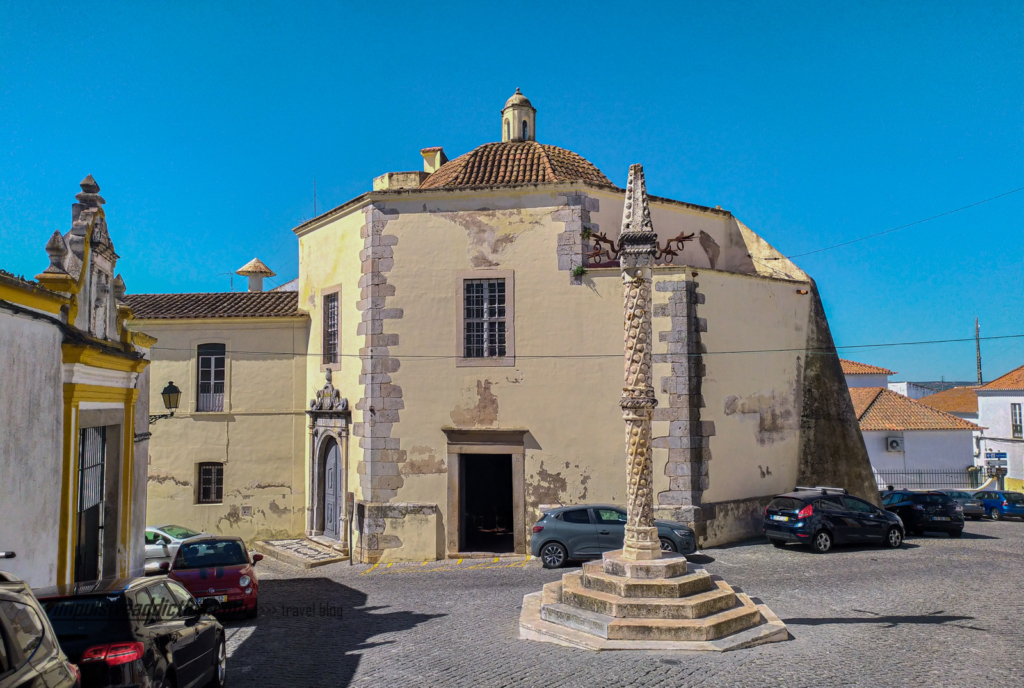
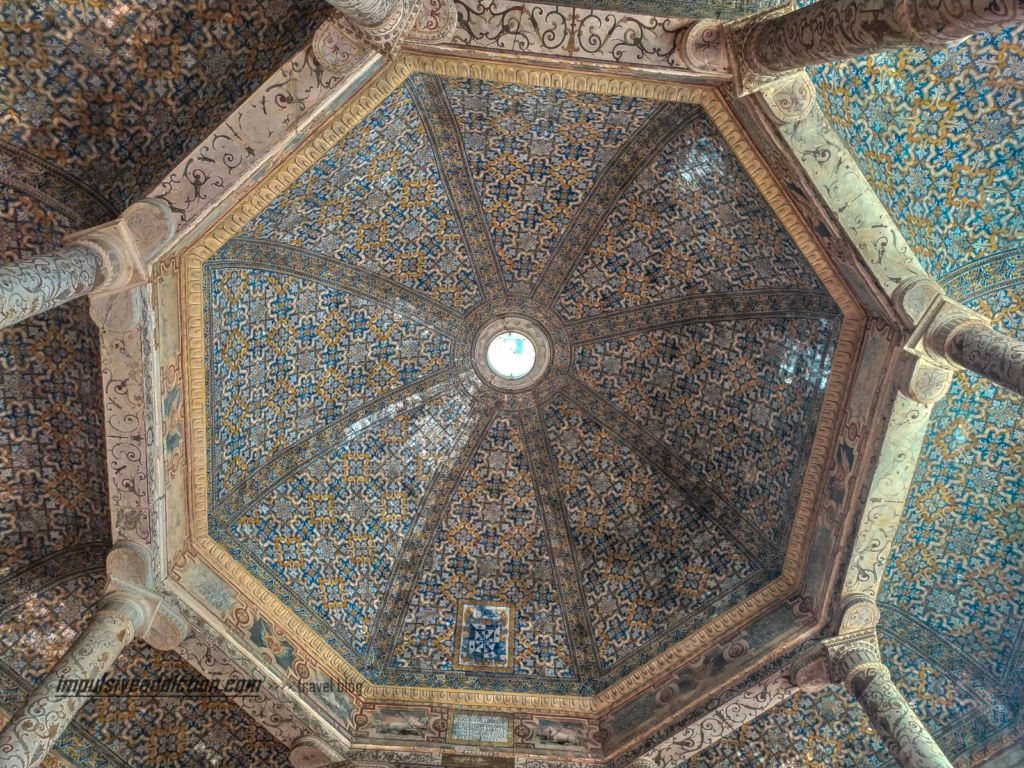
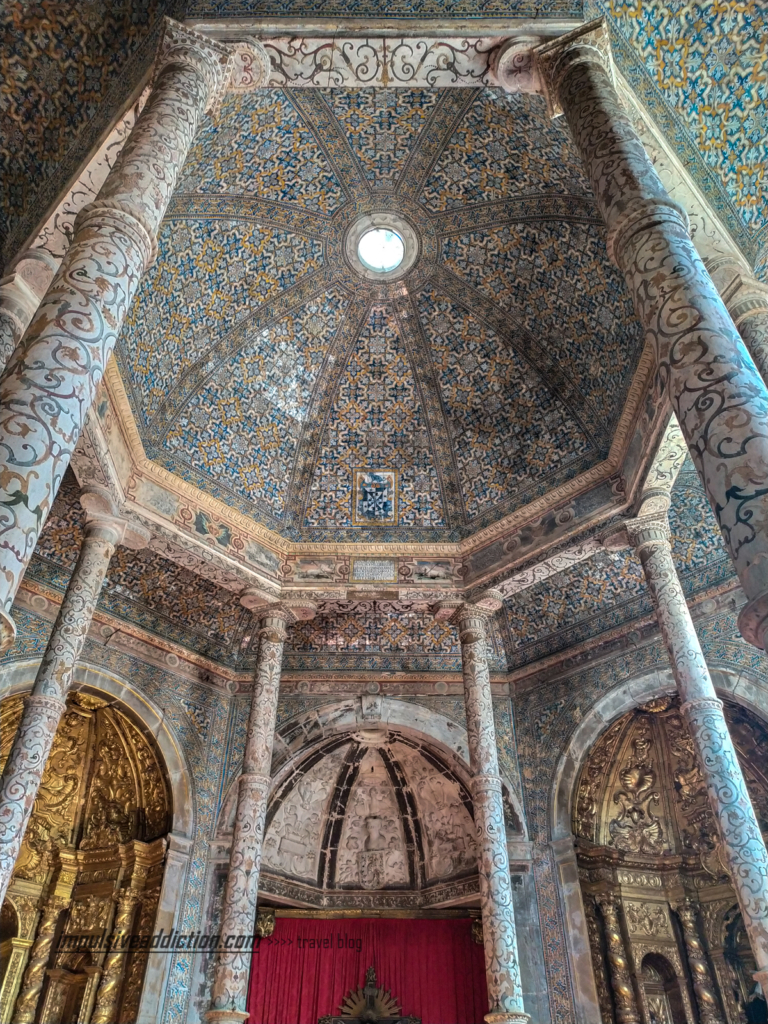
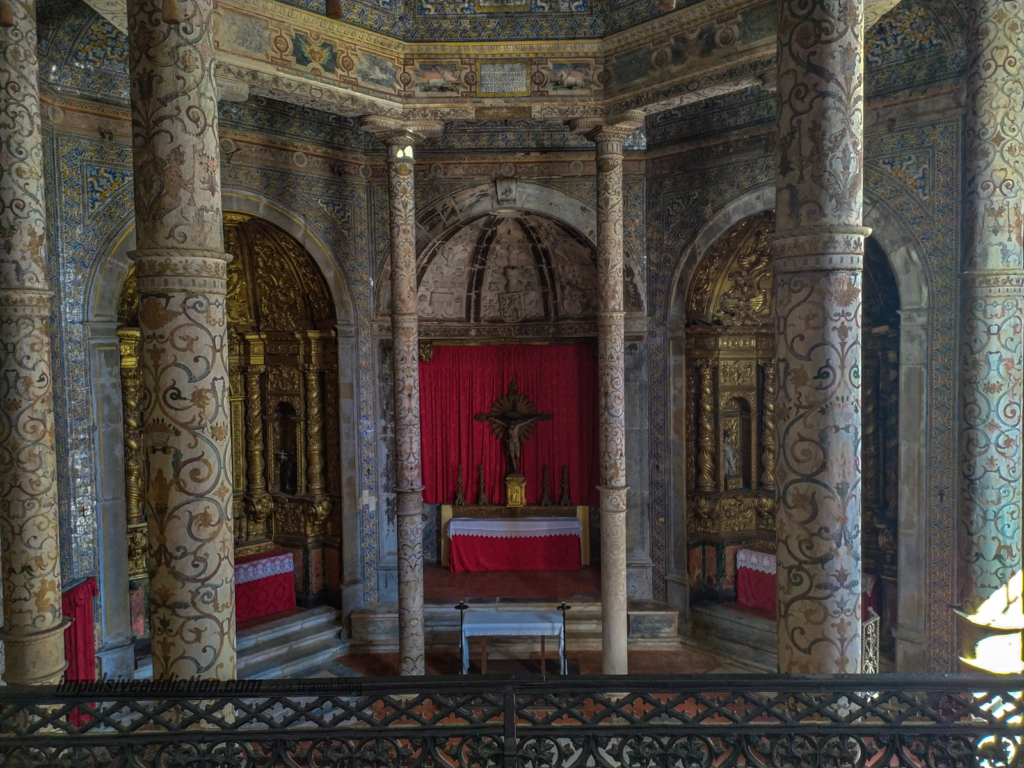
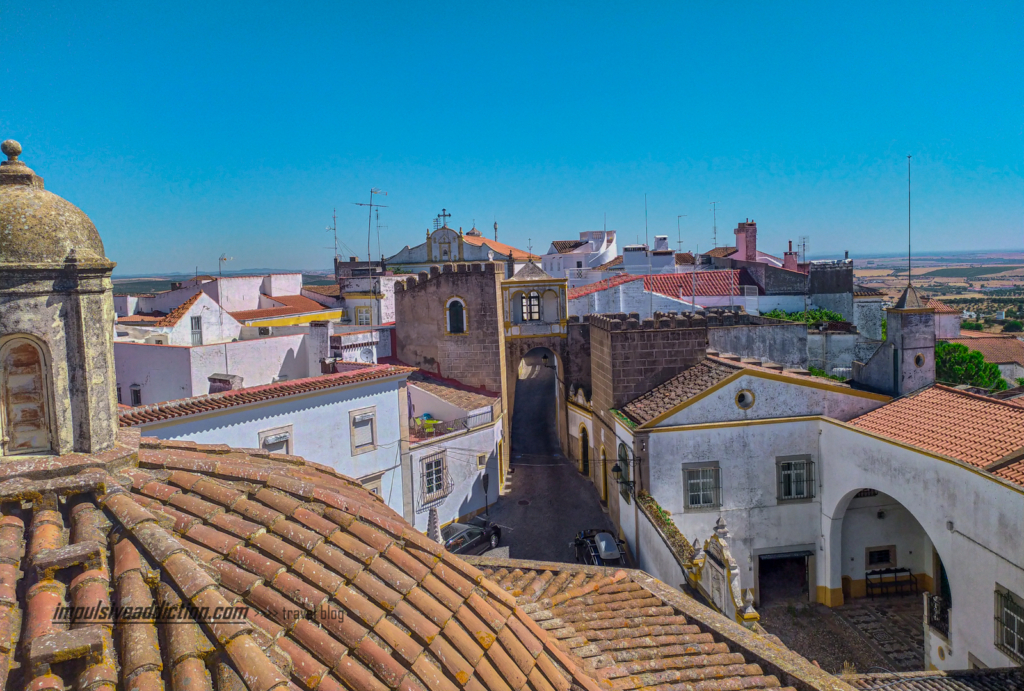
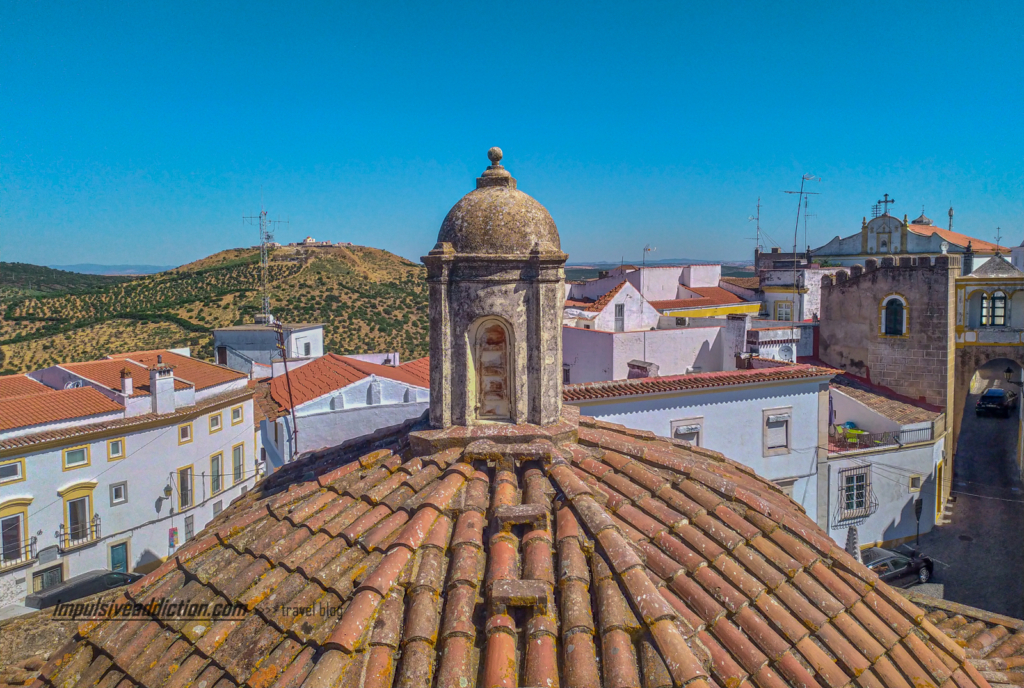
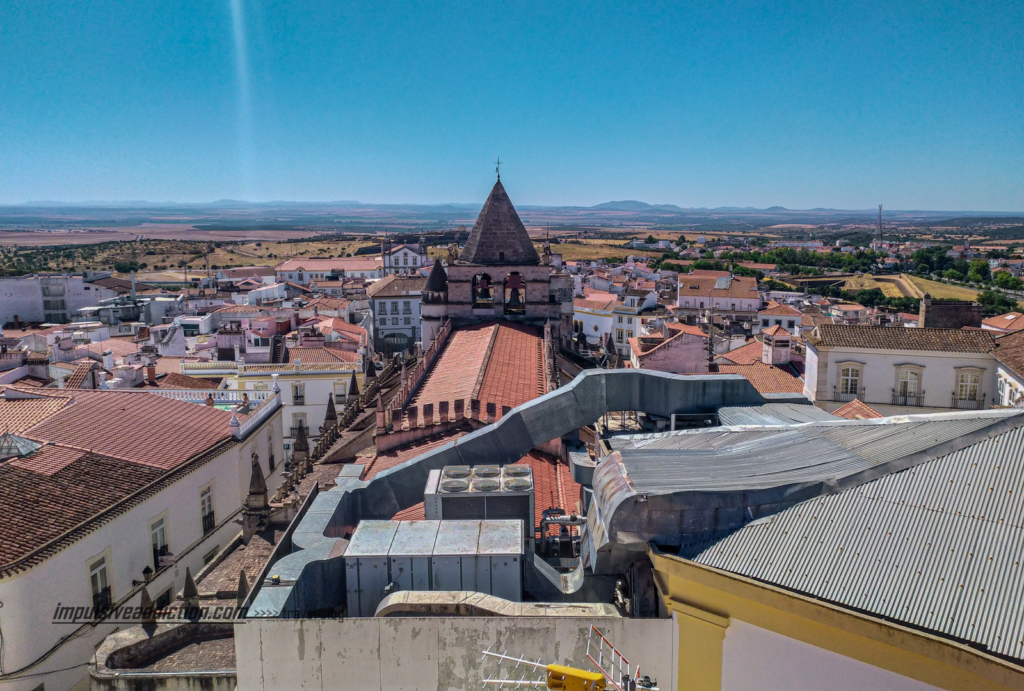
10. Elvas House of Jewish History
Before heading to the most beautiful and central square in Elvas, take a side street towards the House of Jewish History. It’s a museum that recreates the possible synagogue that stood on this exact spot in the past.
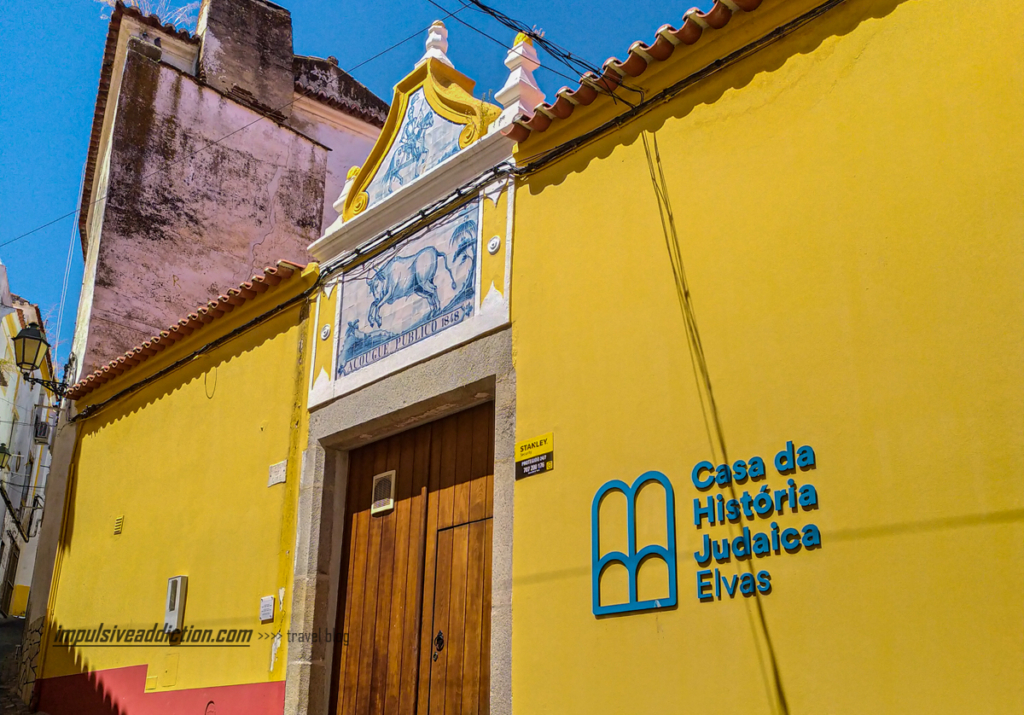
11. Republic Square of Elvas, Church of Nossa Senhora da Assunção and House of Culture
The next stage is the heart of Elvas, the Republic Square. For me, this square is among the most beautiful in Alentejo, although Vila Viçosa clearly wins this battle. The main façade of the Cathedral, the design of the sidewalk, the yellow of the buildings and the calm of the terraces stand out. There’s nothing hectic about Elvas, and that’s great!
The Church of Nossa Senhora da Assunção (Cathedral of Elvas), is the main attraction in the square, and is open to visit every day from 10am: be aware, however, of the long closing time for lunch, which in summer is 3 hours. The church dates from the 16th century, in Manueline style.
The House of Culture, on the other hand, is located in the old Town Hall building, which dates back to 1538. Inside, it houses several temporary exhibitions that you might want to visit, but even if you don’t, you should pay attention to its exterior façade: the Clock Tower, the balcony, Elvas coat of arms on the entrance porch, the arched passage to Rua da Cadeia, and the Manueline window. This building was built next to the Second Islamic Fence from the 12th century.
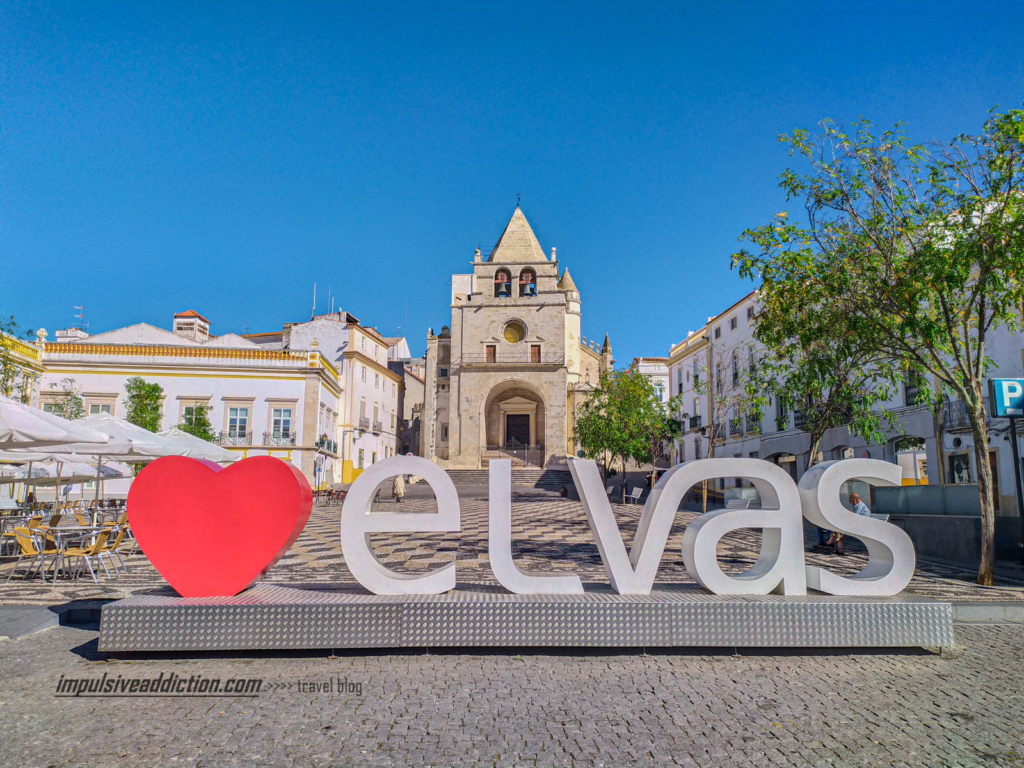
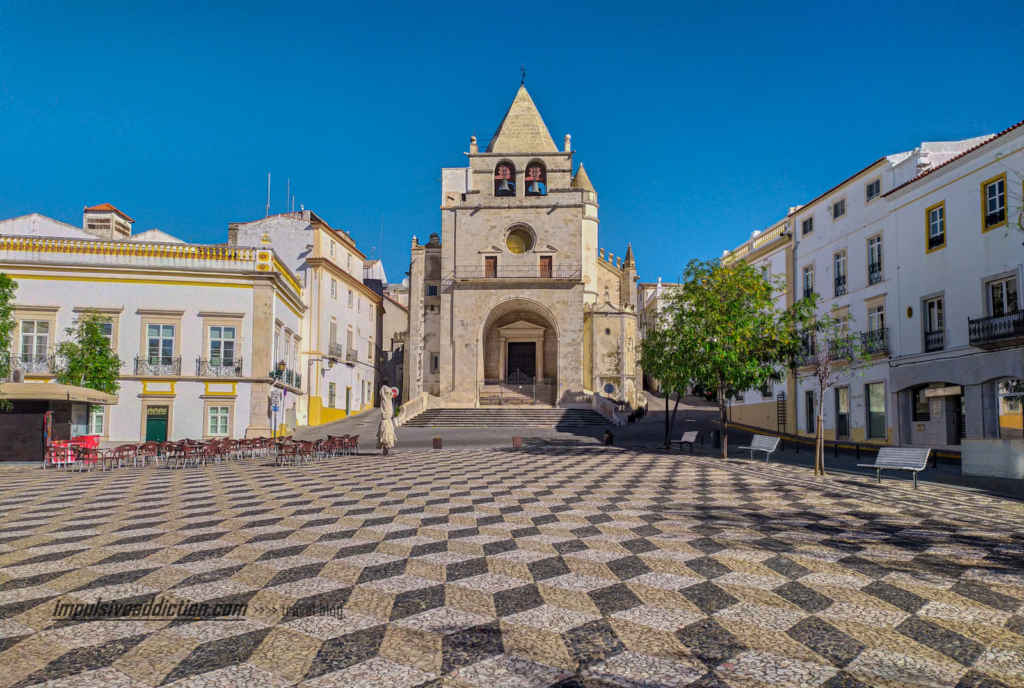
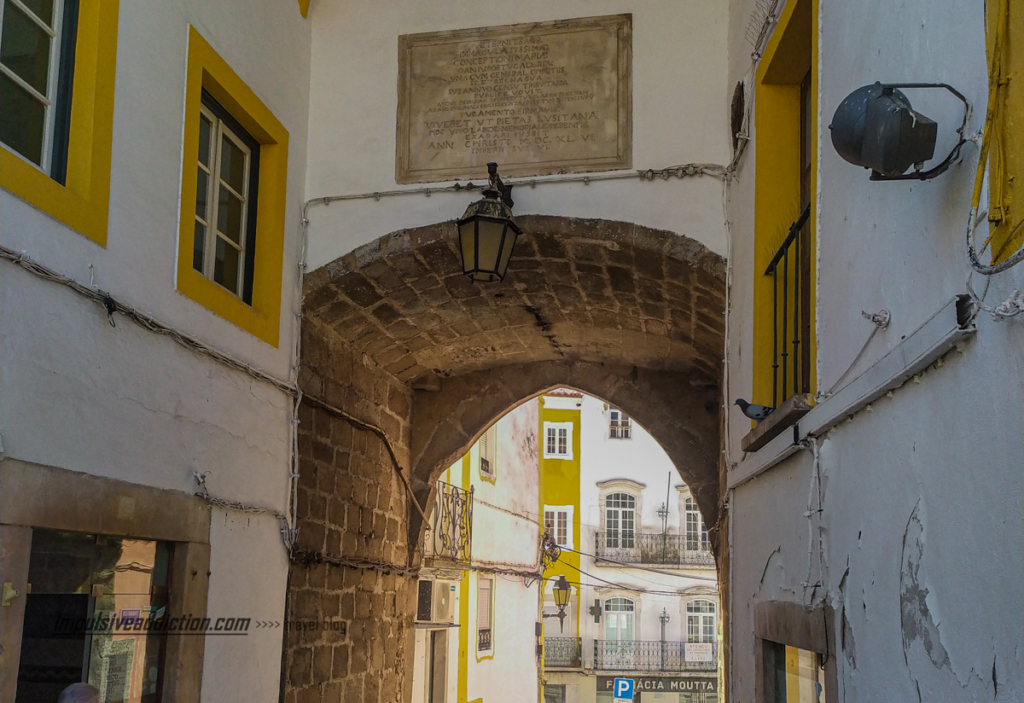
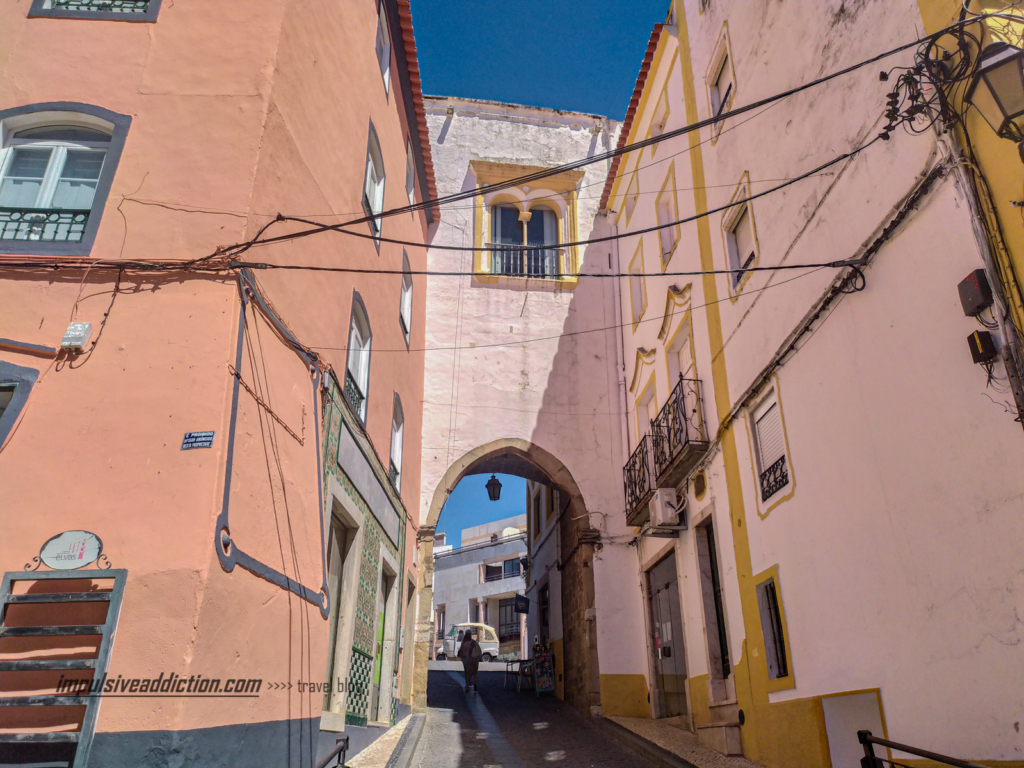
12. Fernandina Tower in Elvas
Fernandina Tower dates from the 14th century and was built next to the second Islamic fence, in Rua da Cadeia. It has a small museum inside.
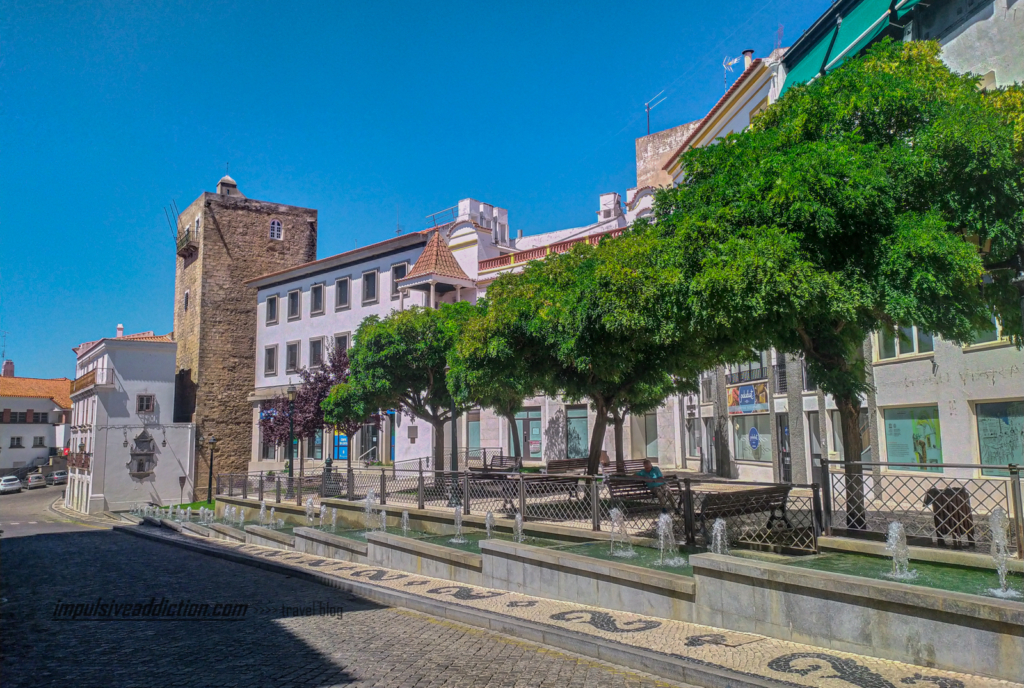
13. Elvas Military Museum
The next big tourist attraction when visiting Elvas is the military museum, and you’ll need at least 2 or 3 hours to visit it completely! So start heading there, not forgetting the following places along the way:
- The monumental Fountain of São Lourenço. It has 3 spouts and 4 columns with statues from Greco-Roman mythology.
- The Arch of Nossa Senhora da Encarnação, also a vestige of the second Islamic fence of Elvas.
- The Church and Convent of São Domingos (you’ll have access to the cloister when you visit the military museum).
- The municipal photography museum, which I haven’t visited.
- Elvas Municipal Library and Largo do Colégio.
- A section of the 14th-century Fernandina wall. It can be accessed through the military museum.
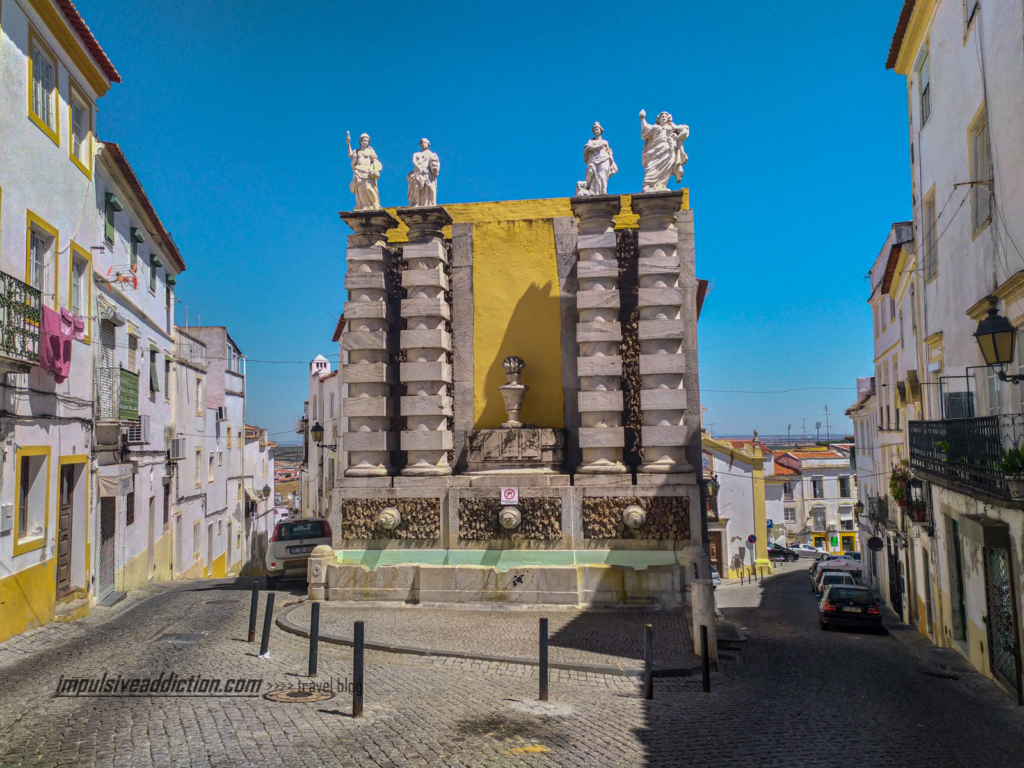
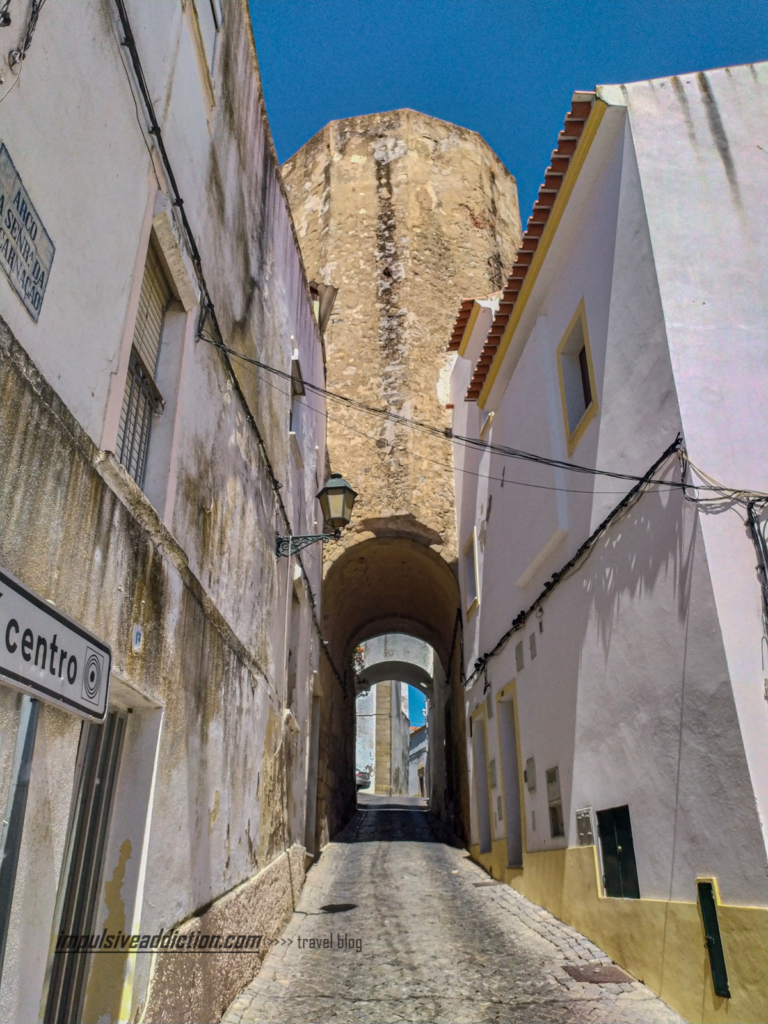
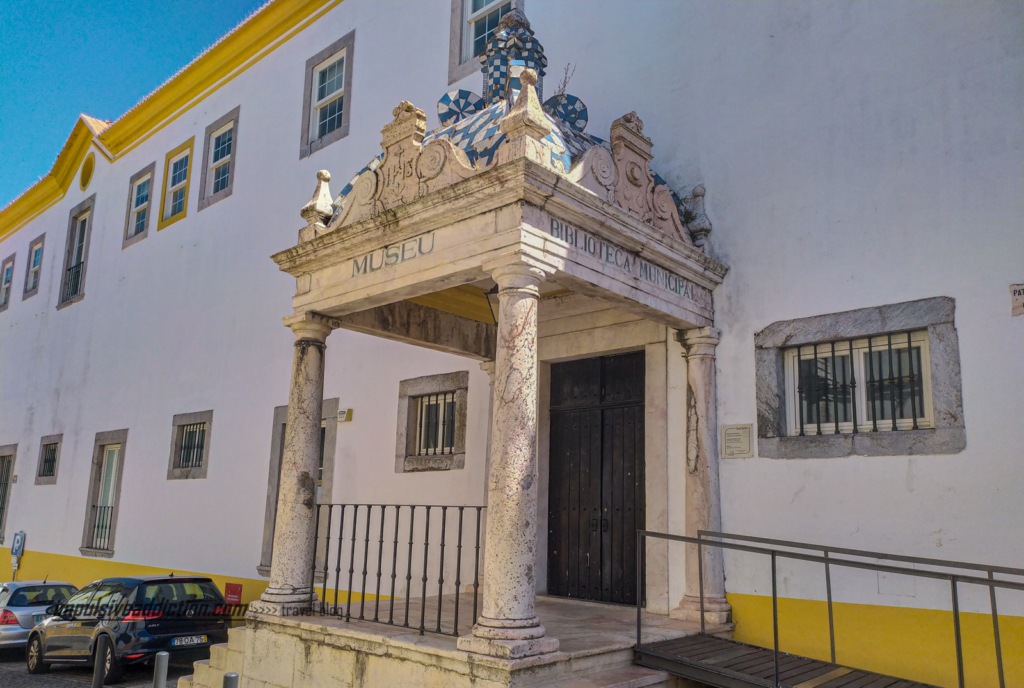
The Military Museum was created in 2006, as a result of the extinction of Infantry Regiment Nr. 8. It is absolutely brilliant, one of the largest in the country, and is very well organized. Inside you have access to a variety of exhibitions on army utensils and military life, and there’s even a vehicle area with various models, including war tanks!
Opening hours are from Tuesday to Sunday, with considerable lunch breaks. Ideally, you should aim to visit from 2.30pm and stay as long as possible in the afternoon. The museum has free parking for visitors.
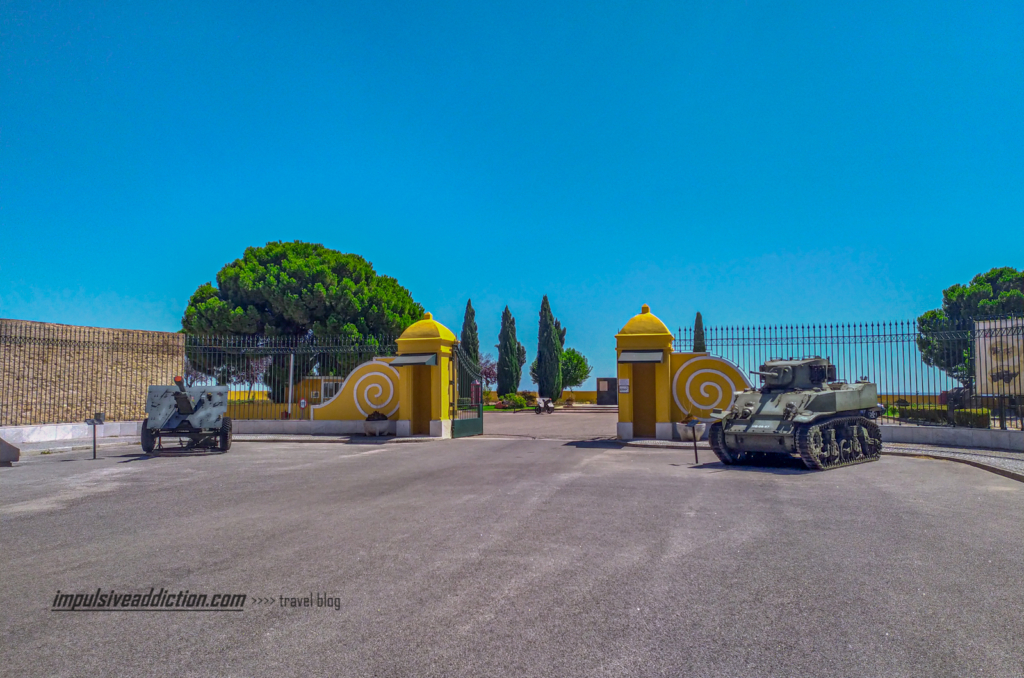
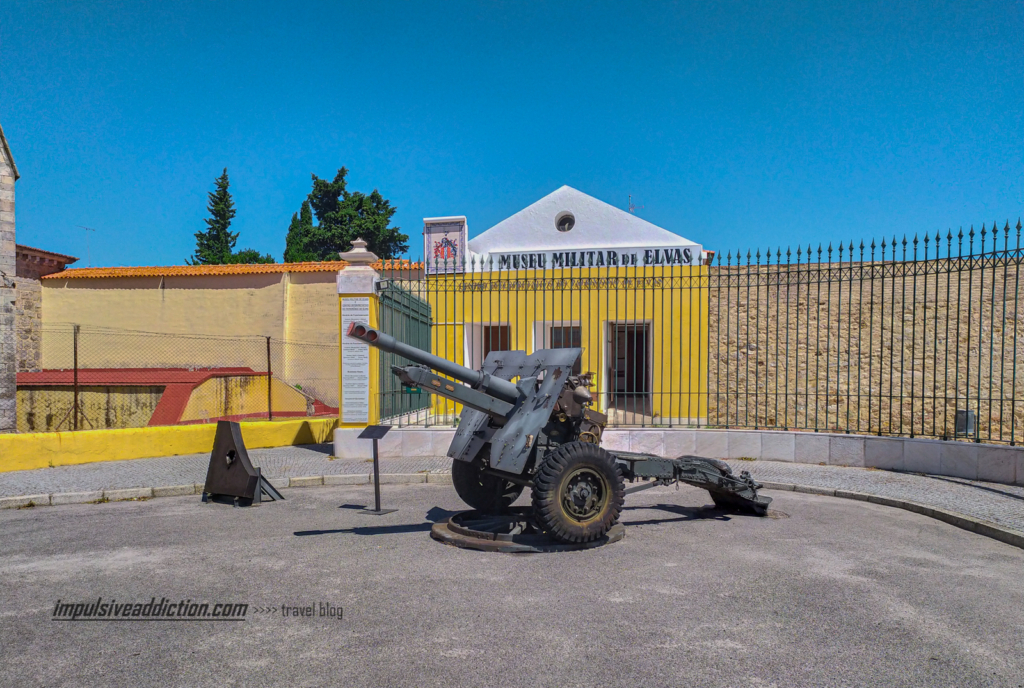
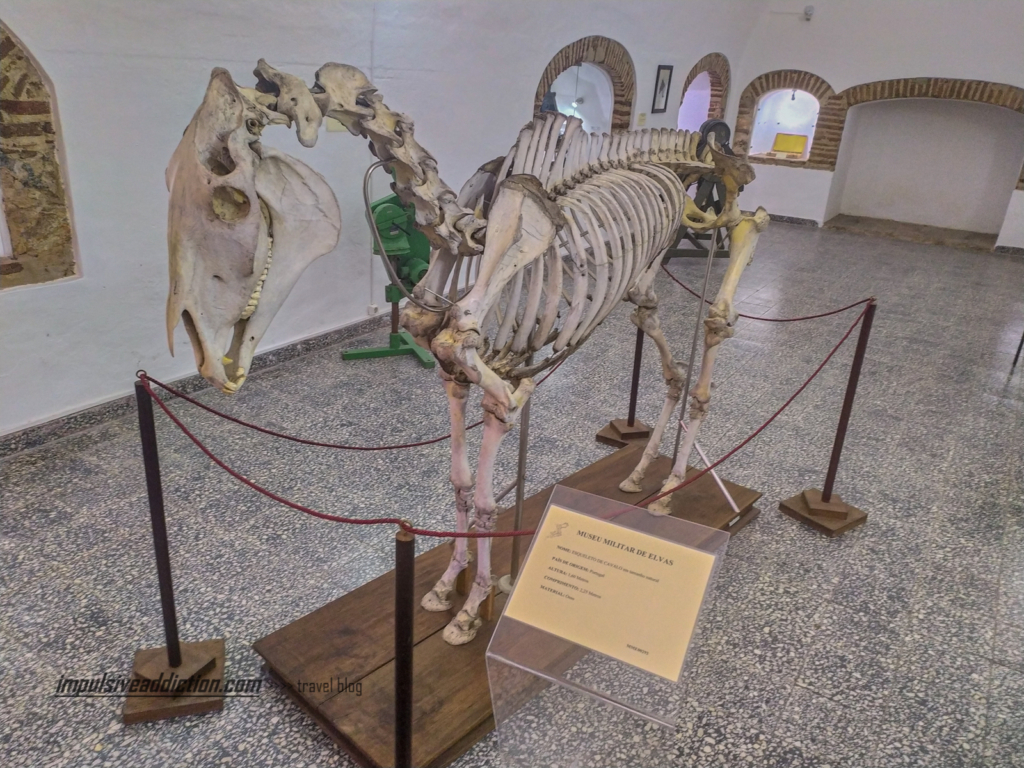
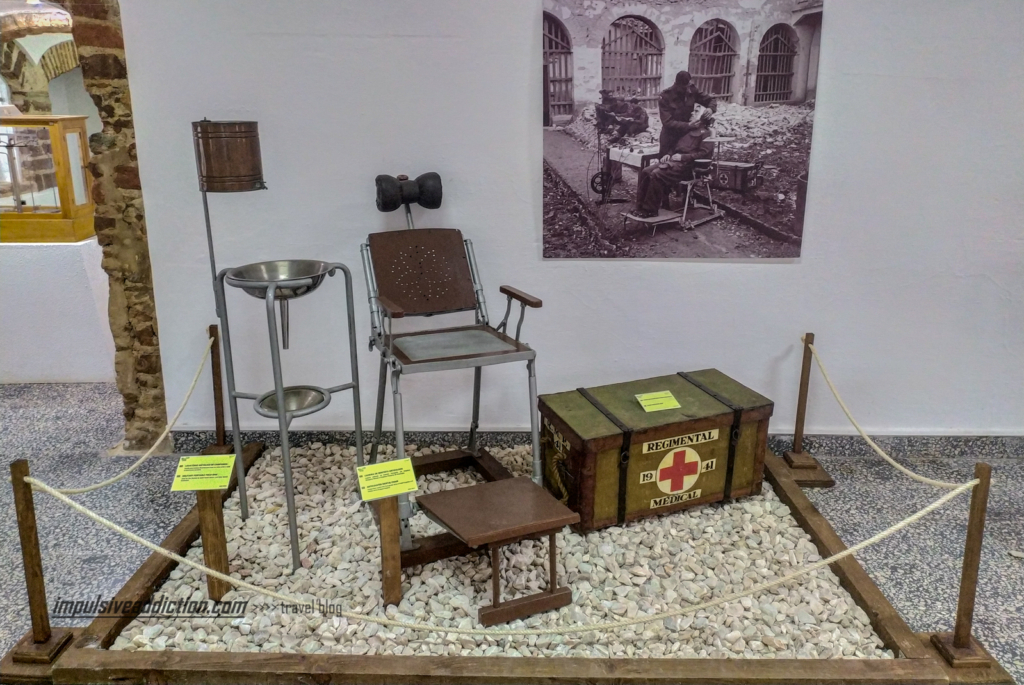
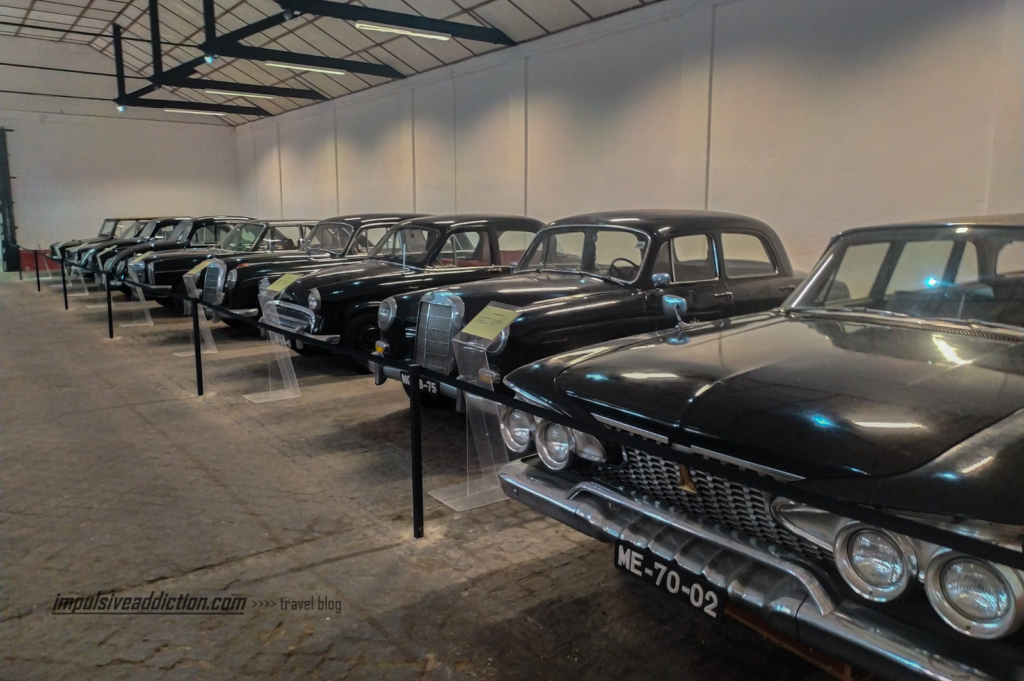
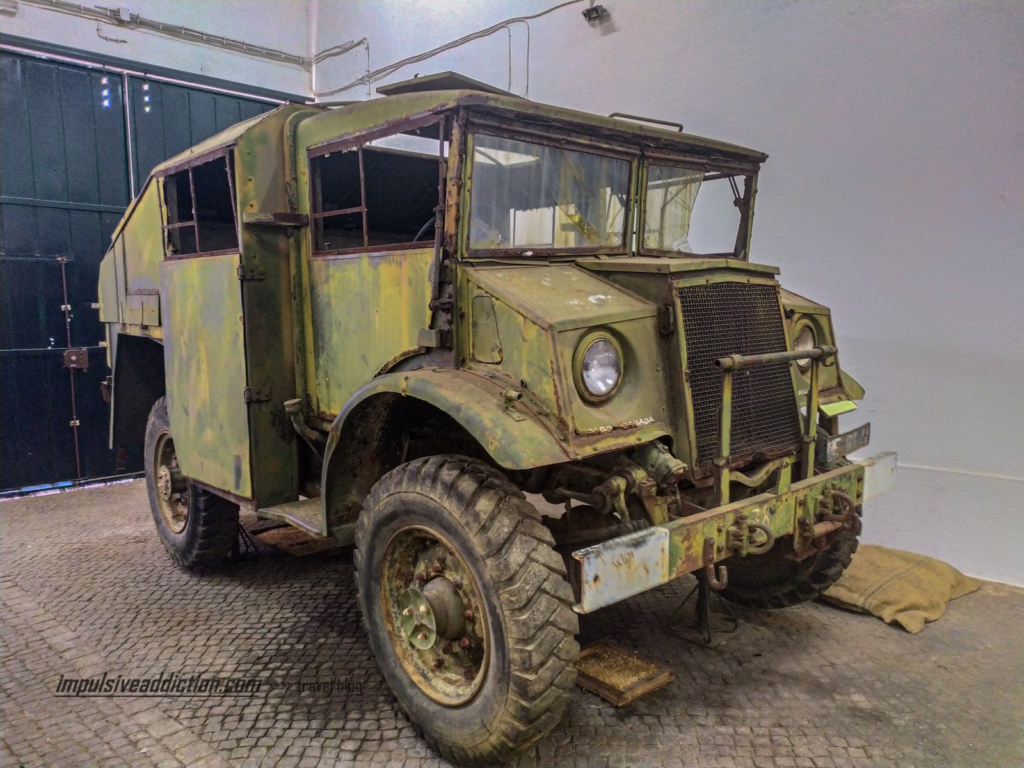
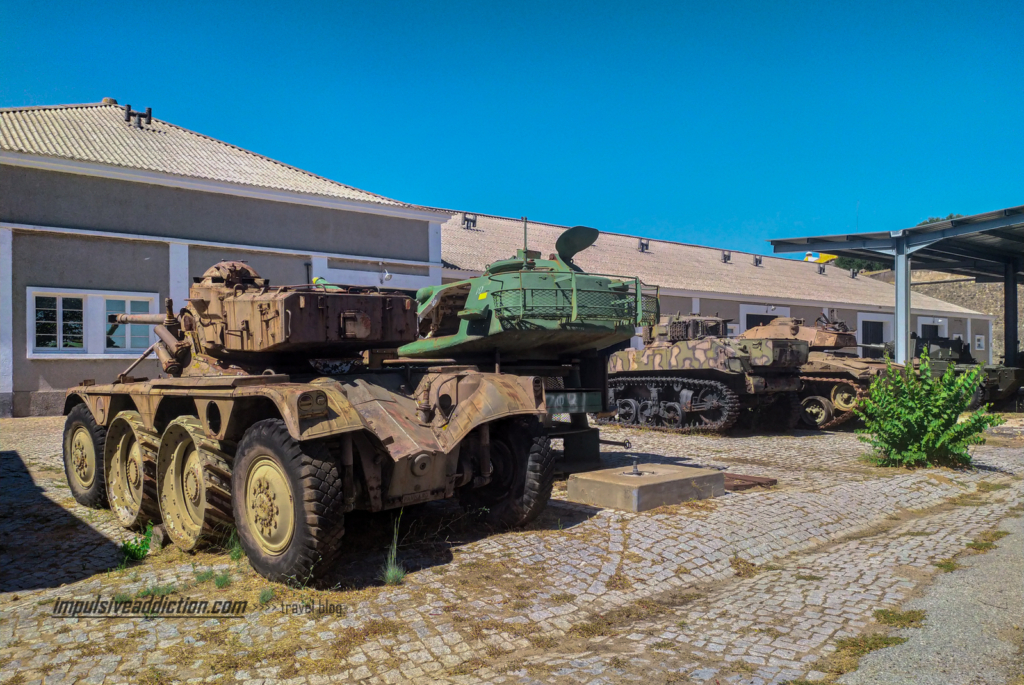
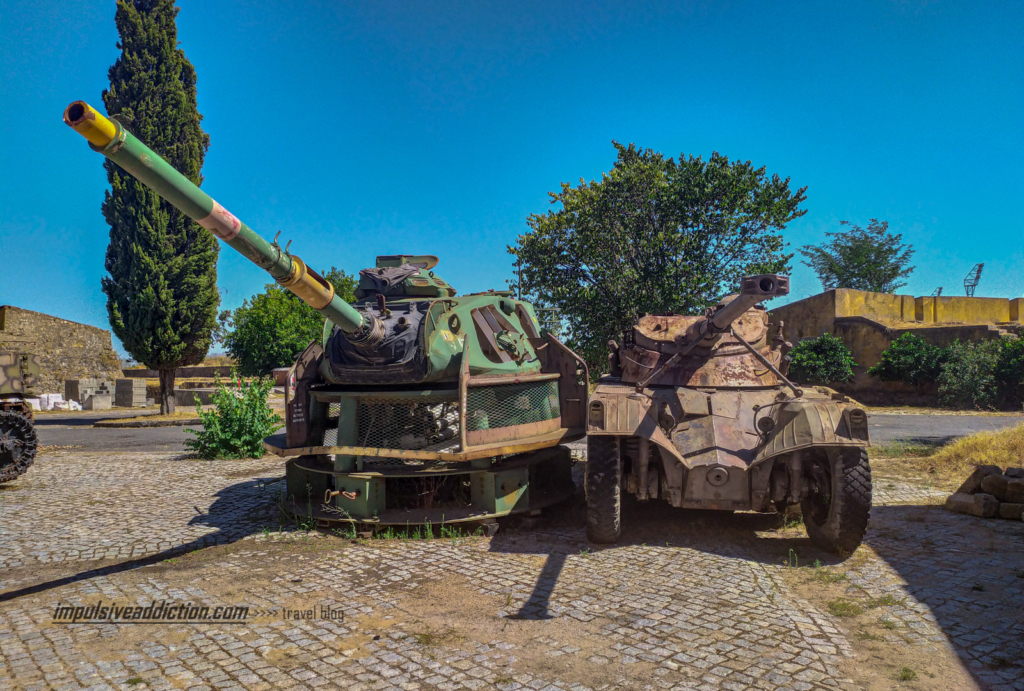
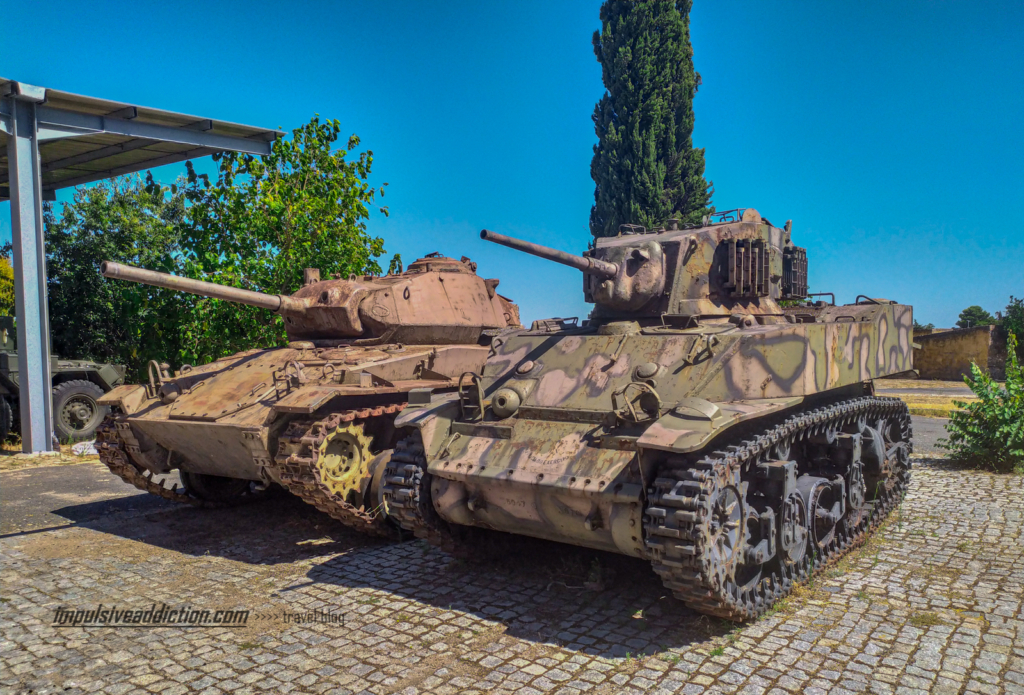
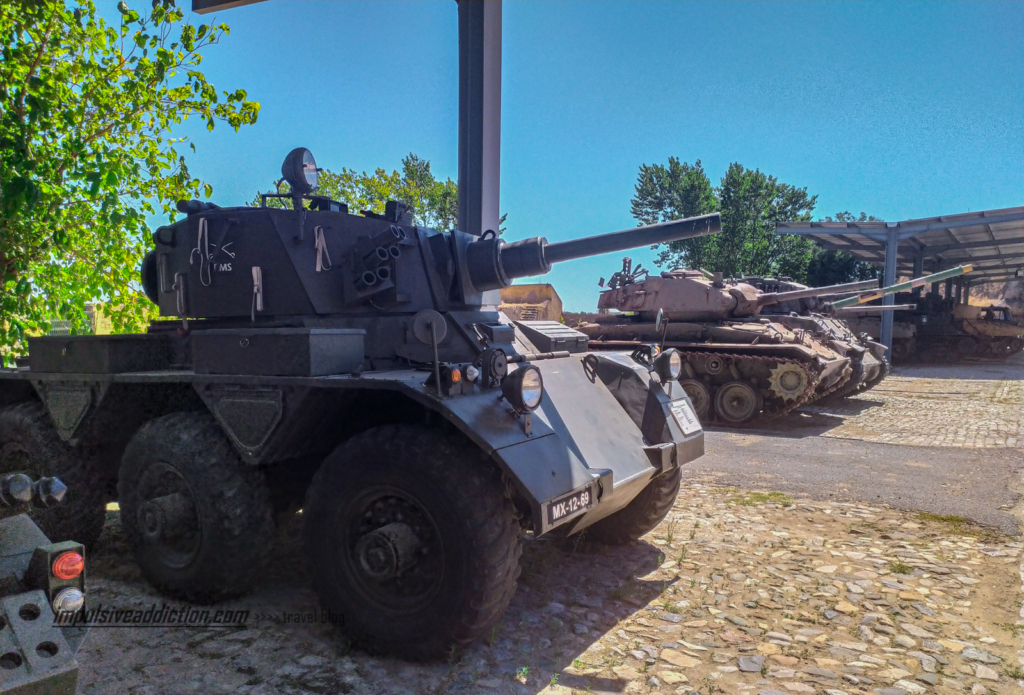
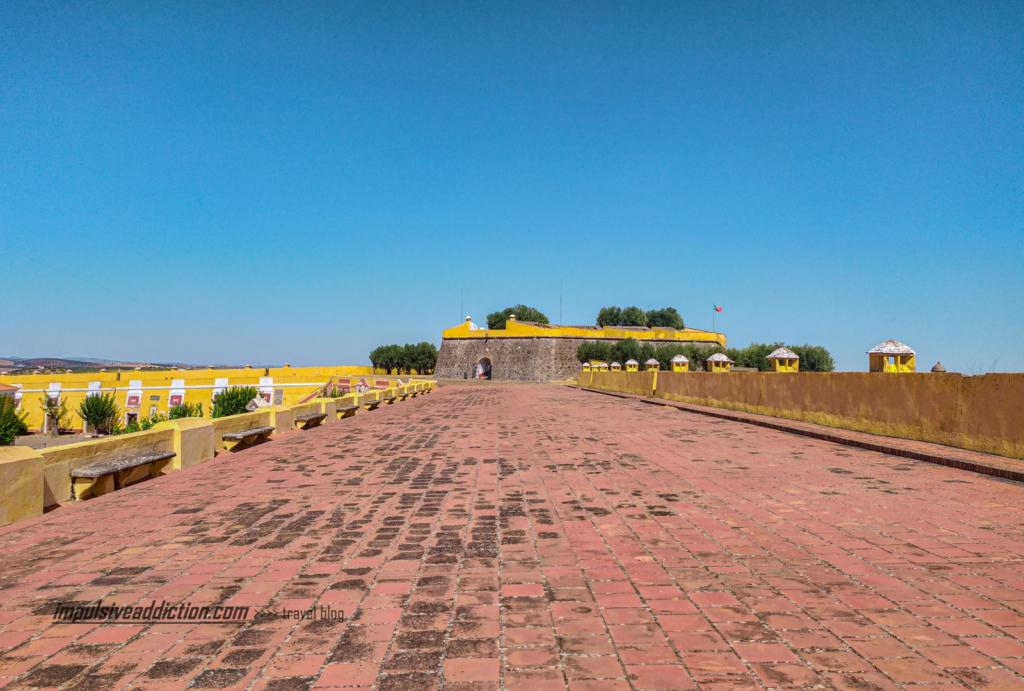
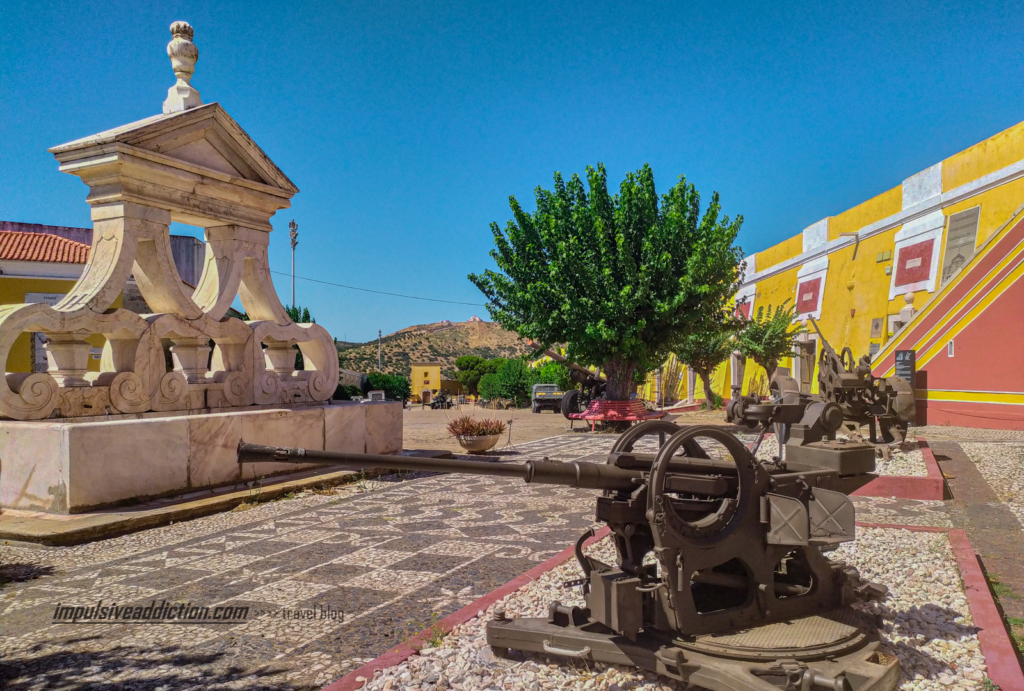
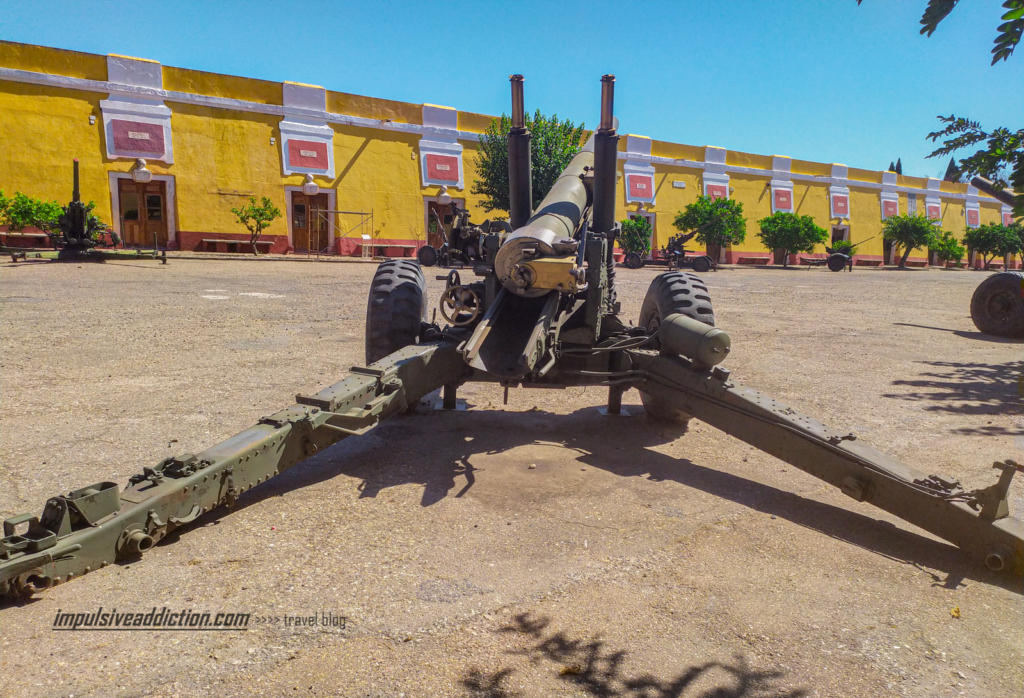
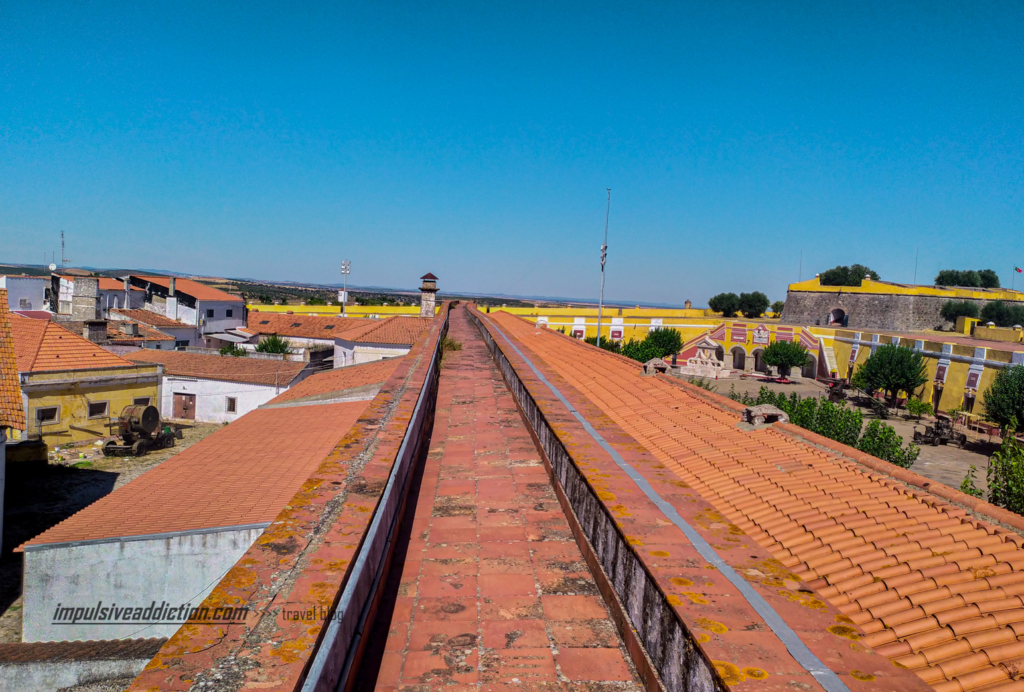
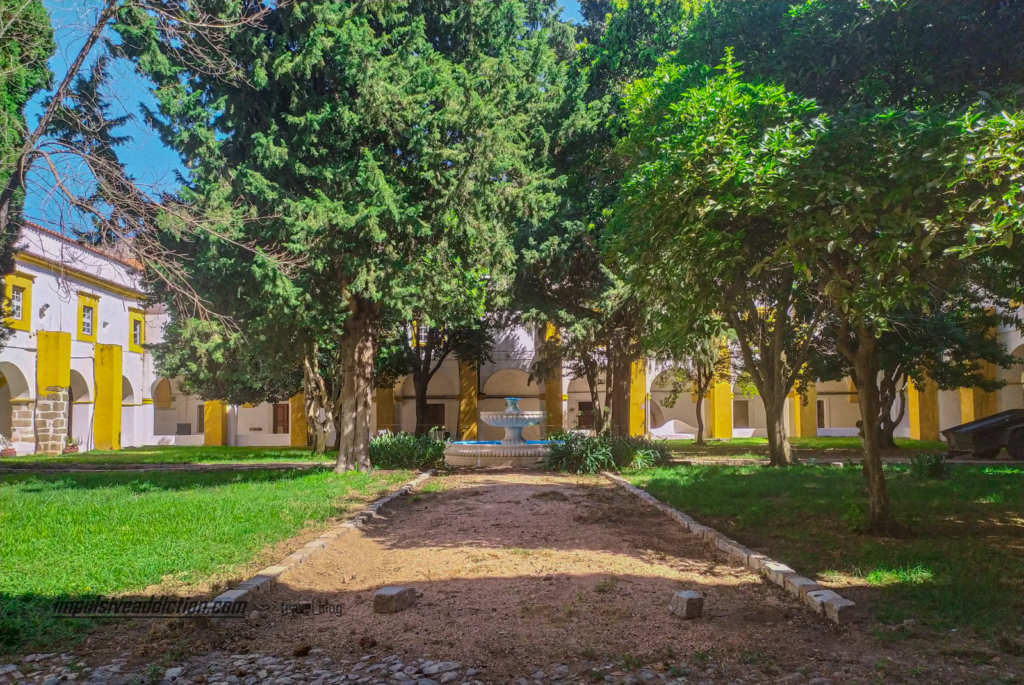
14. Olivença Double Doors, in Elvas
The Olivença Gates are the next stop when visiting Elvas. In addition to these and the aforementioned Corner Gates (Portas da Esquina), you can also visit the Double Doors of São Vicente, which are on the opposite side of the city. Personally, I haven’t visited them, but if you have time, go and discover that part of the city too.
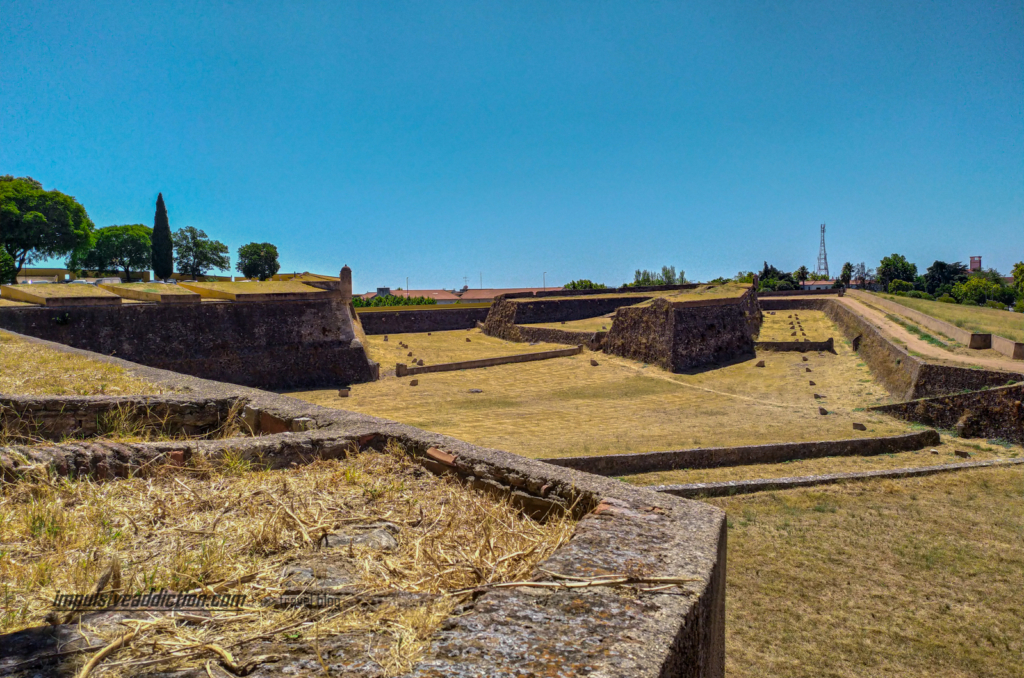
15. Misericórdia and Santa Mónica Fountains
Visit also the Misericórdia and Santa Mónica fountains. The first fountain is historic not only because it dates back to the 16th century, but also because it was there that the first water from the Amoreira Aqueduct flowed. Santa Mónica Fountain, on the other hand, is next to the entrance to Laranjeiras Garden. This garden is a green leisure area full of orange trees.
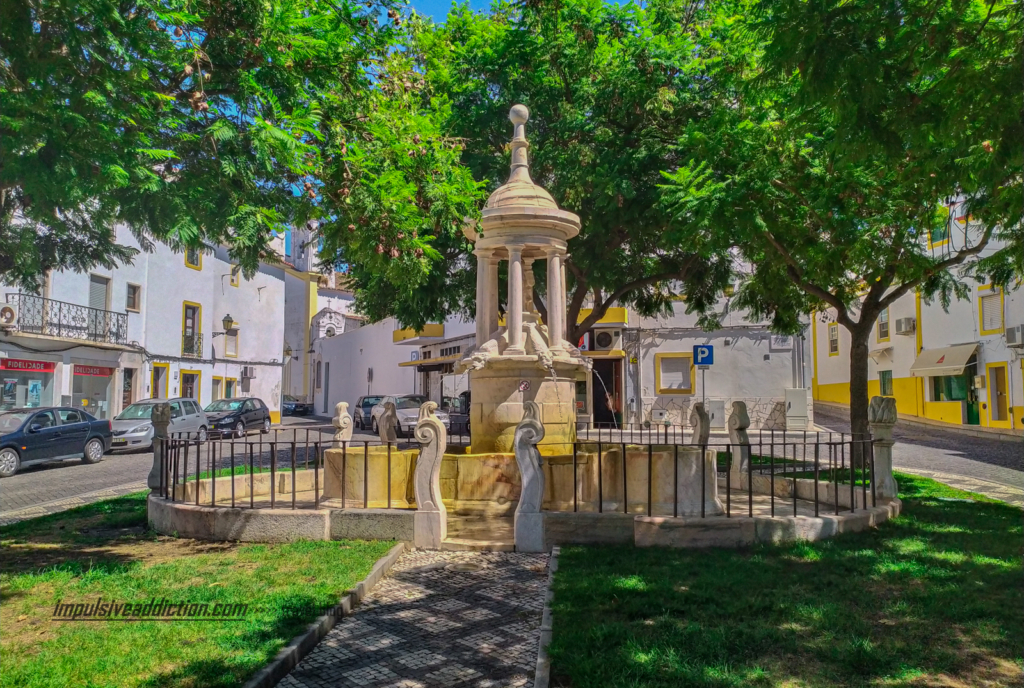
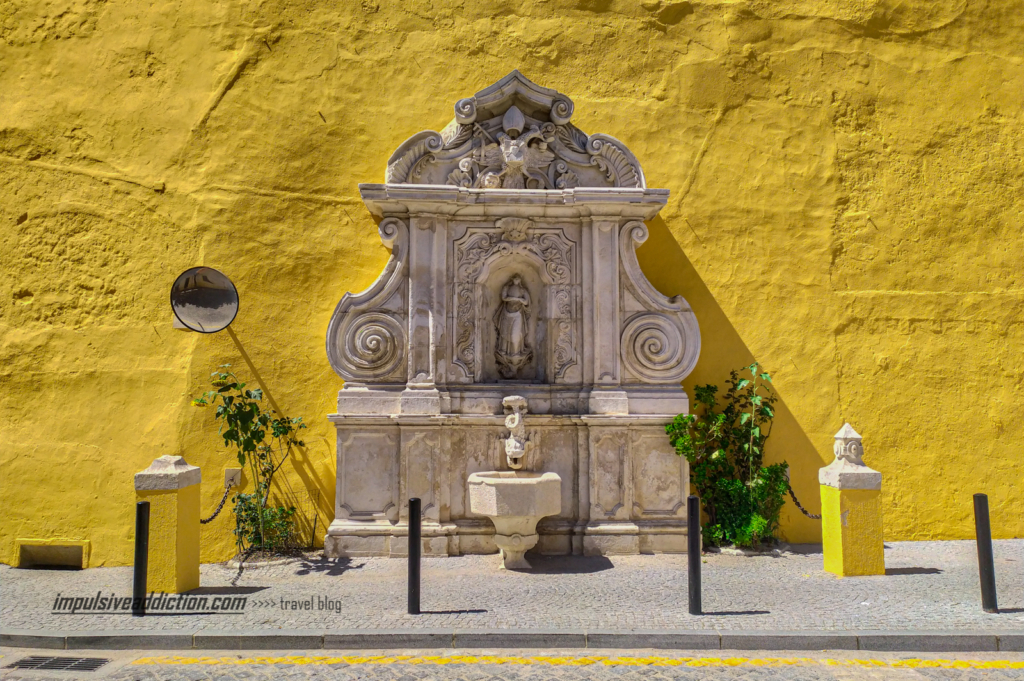
16. Misericórdia Church
Finish the historic center of Elvas discovering optional locations in the city, such as the statue of King Manuel I, Misericórdia Church or Elvas Museum of Contemporary Art.
Visit Elvas Forts and surroundings
In this second stage, I recommend that you go explore the outskirts of the walled city of Elvas, with the Fort of Nossa Senhora da Graça being an absolute highlight. There are two amazing sunset spots to visit: Graça Fort or Ajuda bridge by the River Guadiana. Choose one of them.
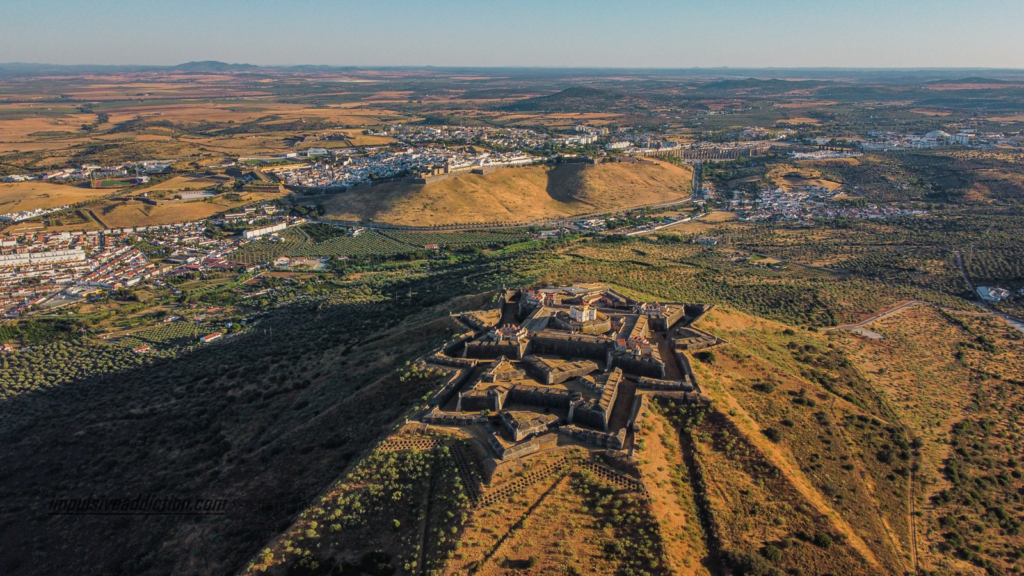
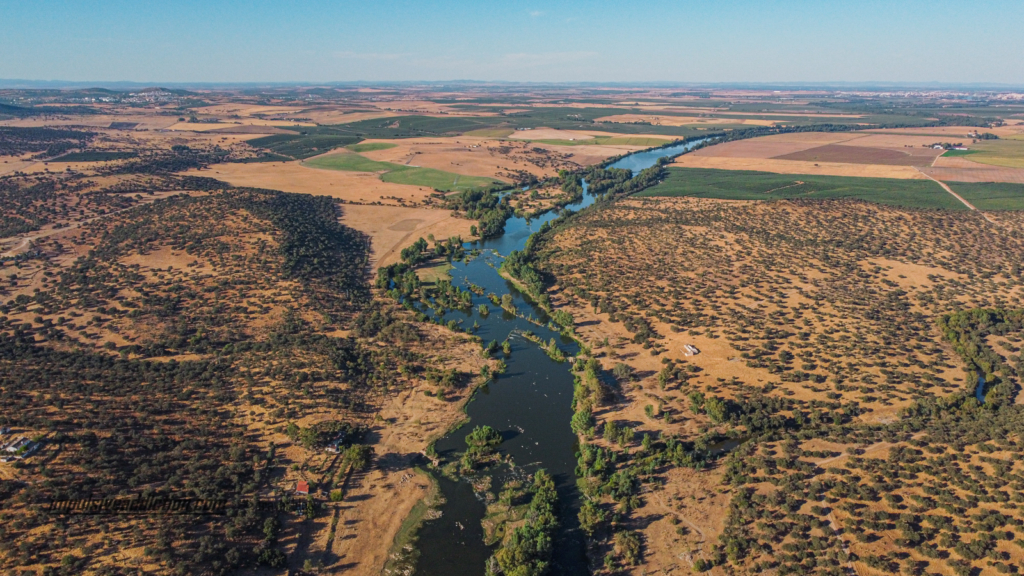
1. Small forts in Elvas: Fortim de São Domingos, Fortim de São Mamede and Fortim de São Pedro
These are three Luso-British constructions from the time of the Peninsular Wars. They were all in important positions for the defense of the Amoreira Aqueduct, the city of Elvas or Santa Luzia Fort. These were places that should never be strategically dominated by the enemy in order to win the war, hence the need to protect and fortify them.
Fortim de São Pedro is the oldest of the three, dating back to the 17th century. However, it was all rebuilt in the 19th century at the same time the others were finally built.
2. Convent of São Francisco and Sanctuary of Senhor Jesus da Piedade
The Convent of São Francisco is located close to the Amoreira Aqueduct and offers excellent views of it from another perspective. Its origins date back to the 16th century, and today it serves as the municipal archive.
The Sanctuary of Senhor Jesus da Piedade, on the other hand, is surrounded by the Piedade Park, where the annual São Mateus Fair is held, which I’ve already mentioned in this article. It dates back to the 18th century and I would definitely highlight its fountains.
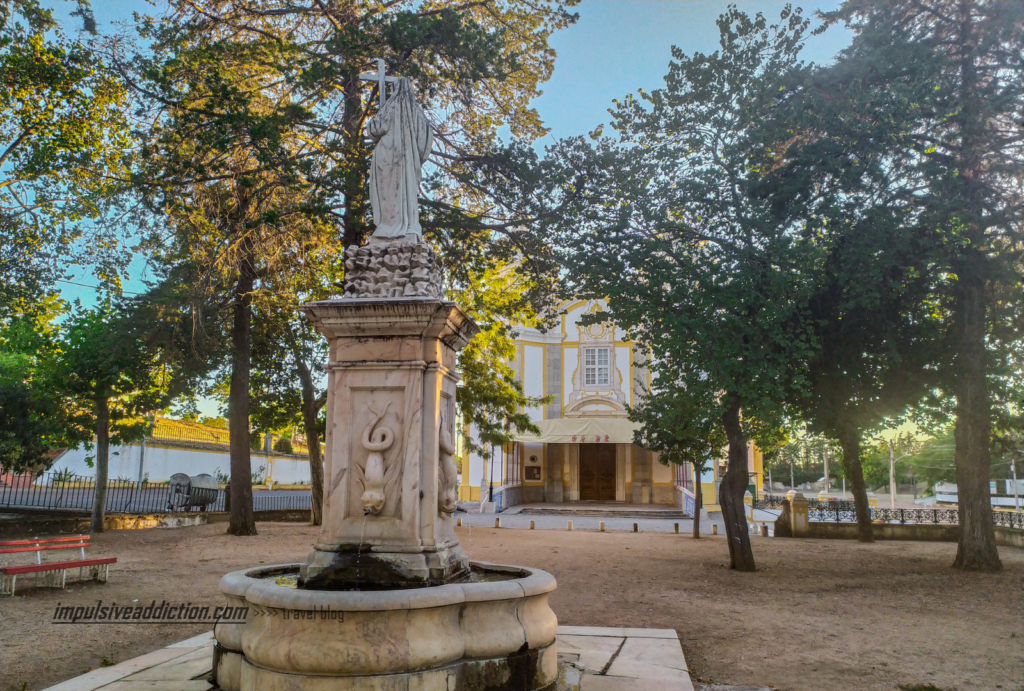
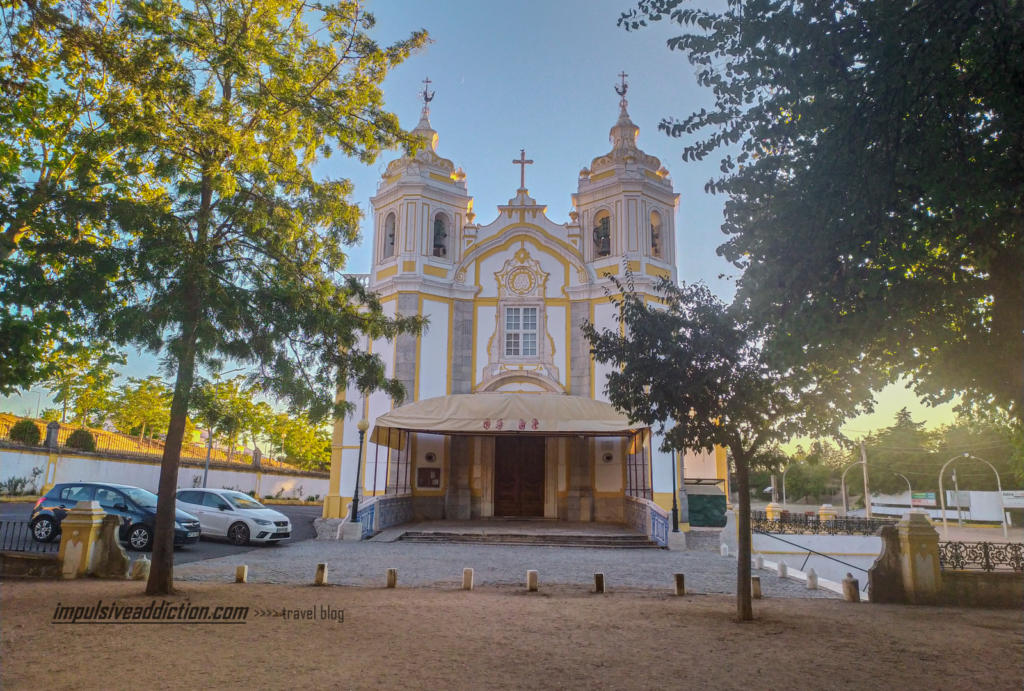
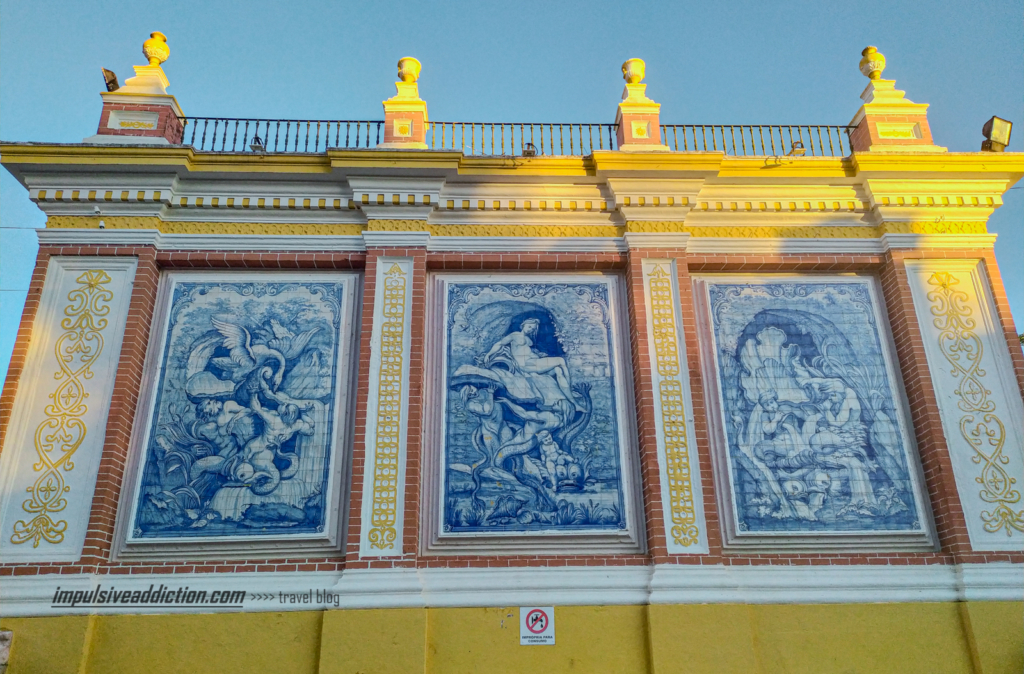
3. Fort of Santa Luzia
And now for the main forts to see when visiting Elvas: the first is the Fort of Santa Luzia.
Its construction dates back to the 17th century, following the restoration of independence. It is a bastioned fort, of which I would highlight the underground tunnels, used to connect to the city of Elvas to supply and replenish troops. Even though most of them have been destroyed, today it is possible to walk through more than 100 meters of tunnel, which is incredible and gives us some insight into what they were really like.
Santa Luzia Fort was part of the first line of defense and played a very important role in several battles.
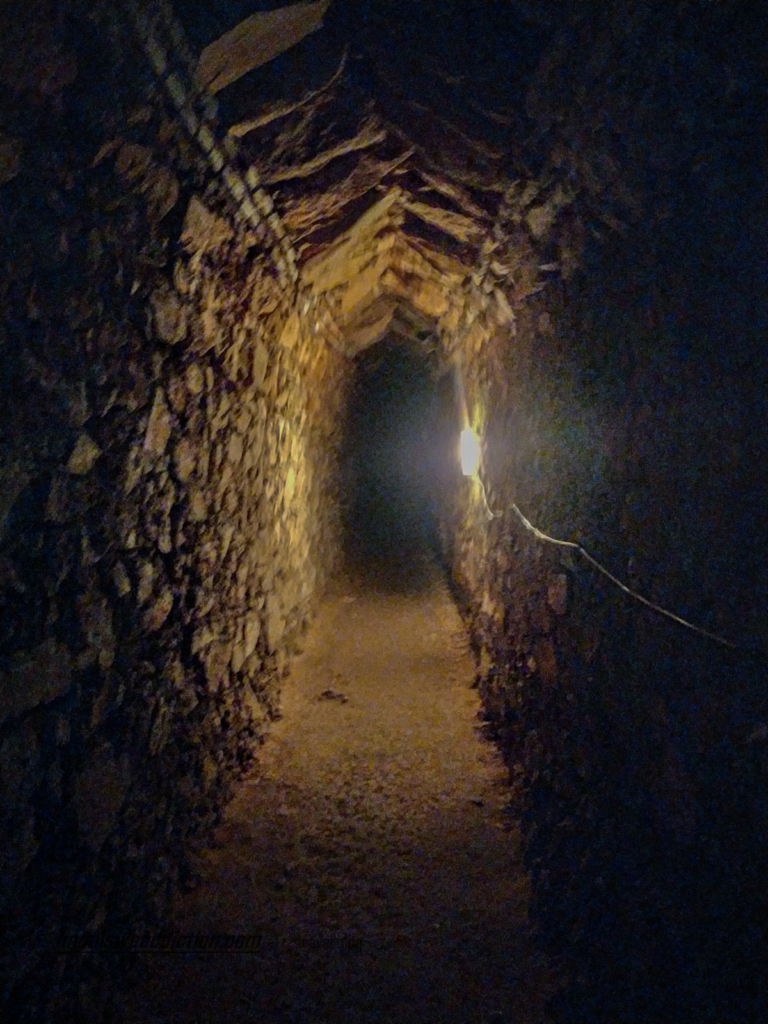
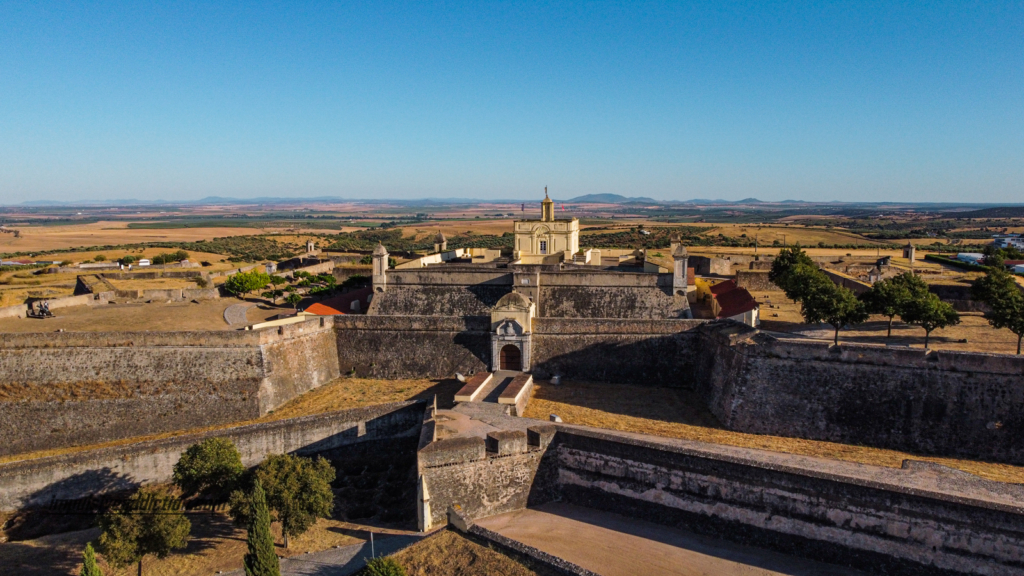
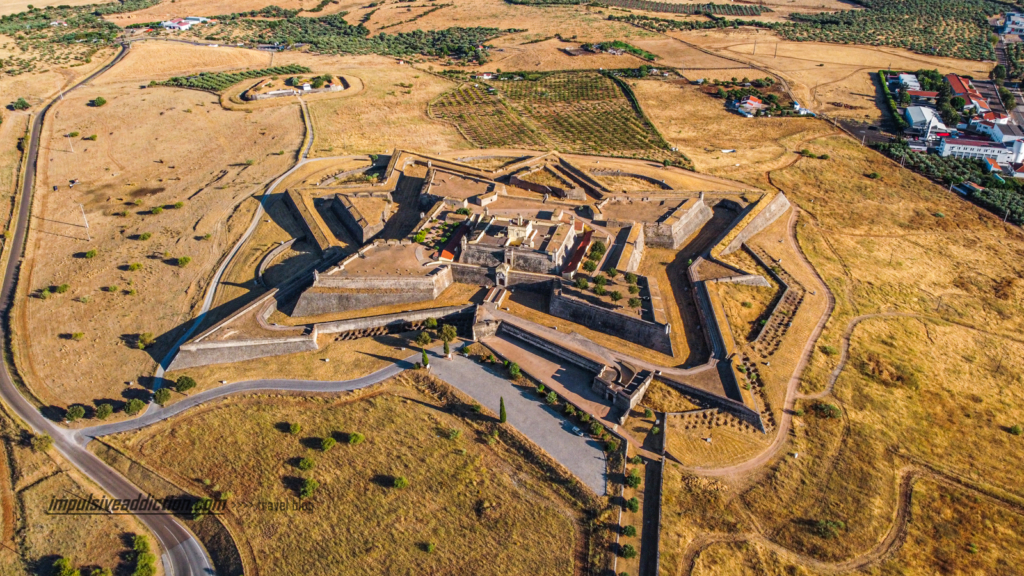
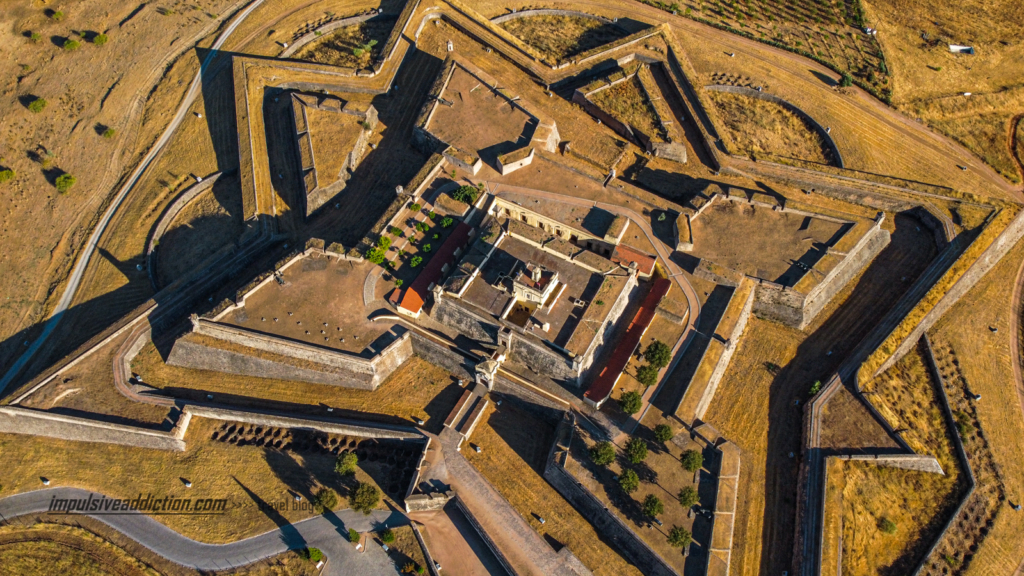
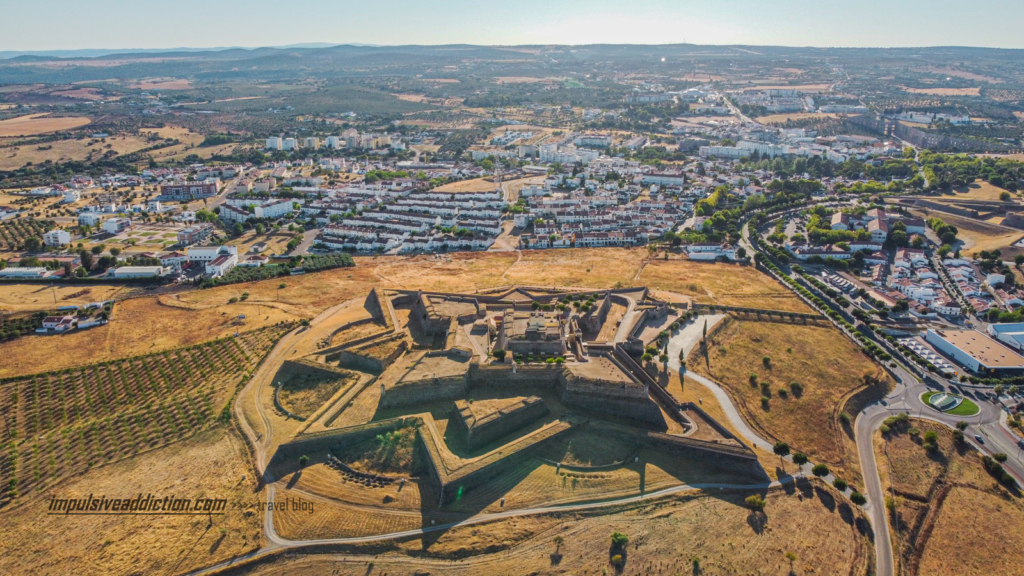
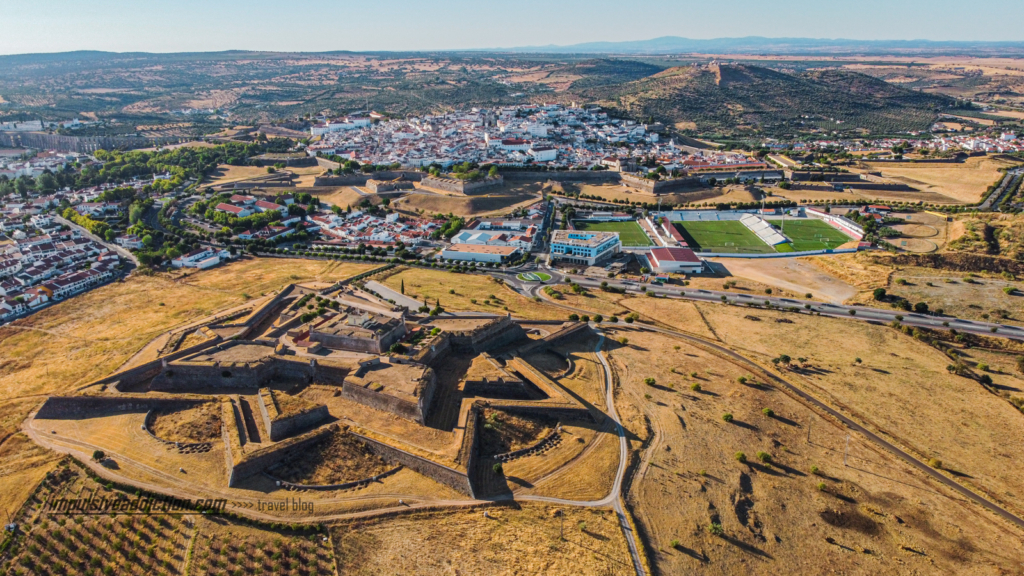
4. Graça Fort
Graça Fort is the other fort you can’t miss when visiting Elvas. If you don’t have much time in this region of High Alentejo, forget everything else and focus on visiting Graça Fort!
Much like the Fort of Santa Luzia, this one was built so that from inside you could see the enemy without blind spots, perfectly, guaranteeing successful defense against all possible attacks. You’d be able to see the enemy, but the enemy wouldn’t be able to see you inside, nor would they be able to see the real size and defensive structure of the fortress from the outside. It’s a fact: on the outside it looks insignificant, on the inside it’s anything but!
It was built in the 18th century and underwent intensive restoration in 2015. Today it’s a magnificent place to spend a whole afternoon, at a very affordable price: €5 per person. I recommend, however, that you take a guided tour for an extra €3. It must be fabulous to hear about its history while learning more about its secrets.
Given its size, there is no shortage of things to see at Graça Fort. I recommend that you don’t just focus on its central part: give its ramparts a go too, and walk along or over its long corridors. Of course, the Governor’s House is magnificent, especially now that it has been restored: and the view you get from the top floor is the best you’ll find in this region, an absolutely incredible vantage point for the entire walled city of Elvas and its surroundings, for many kilometers to the horizon.
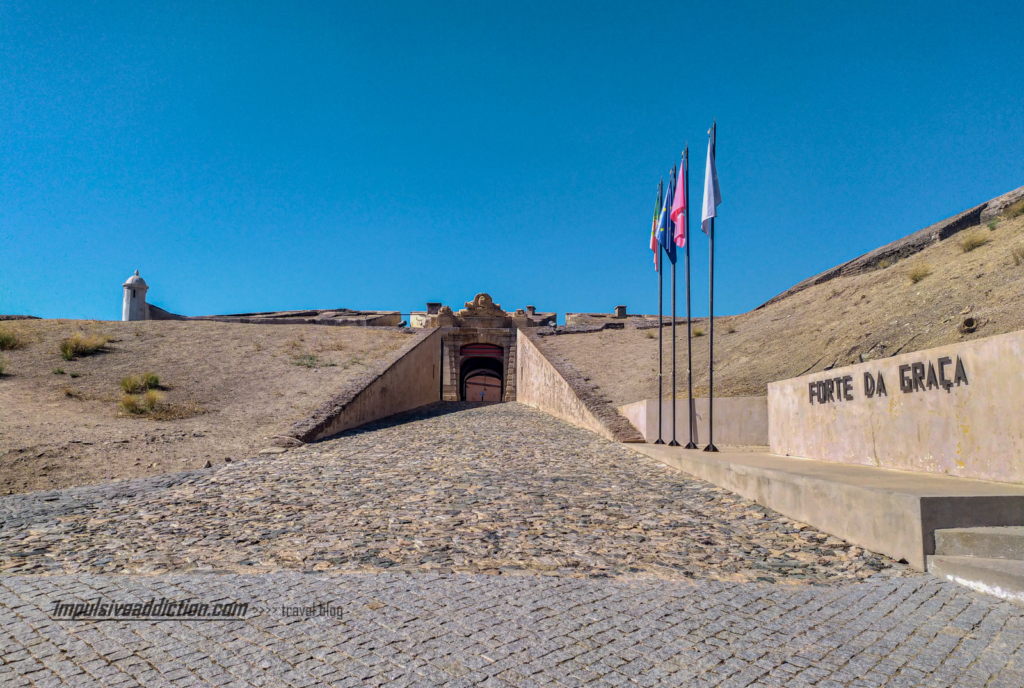
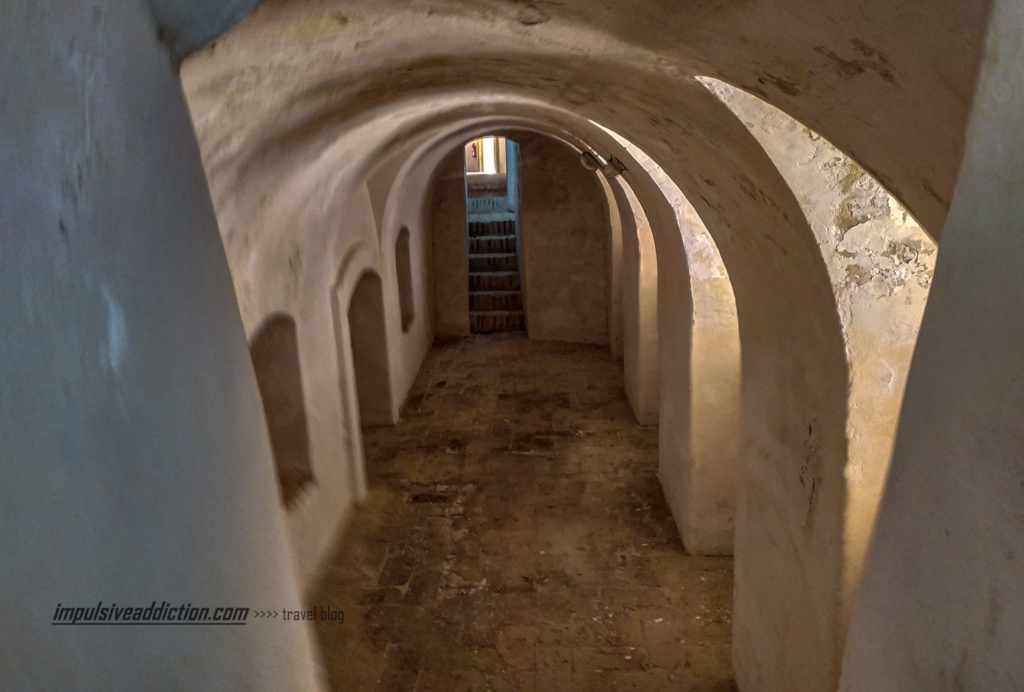
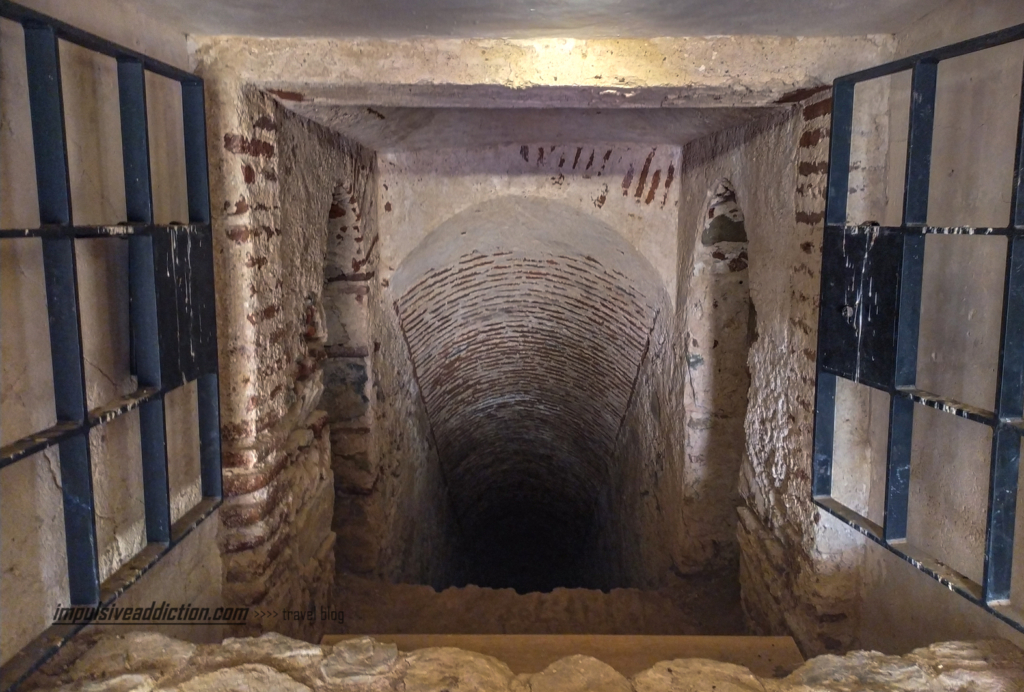
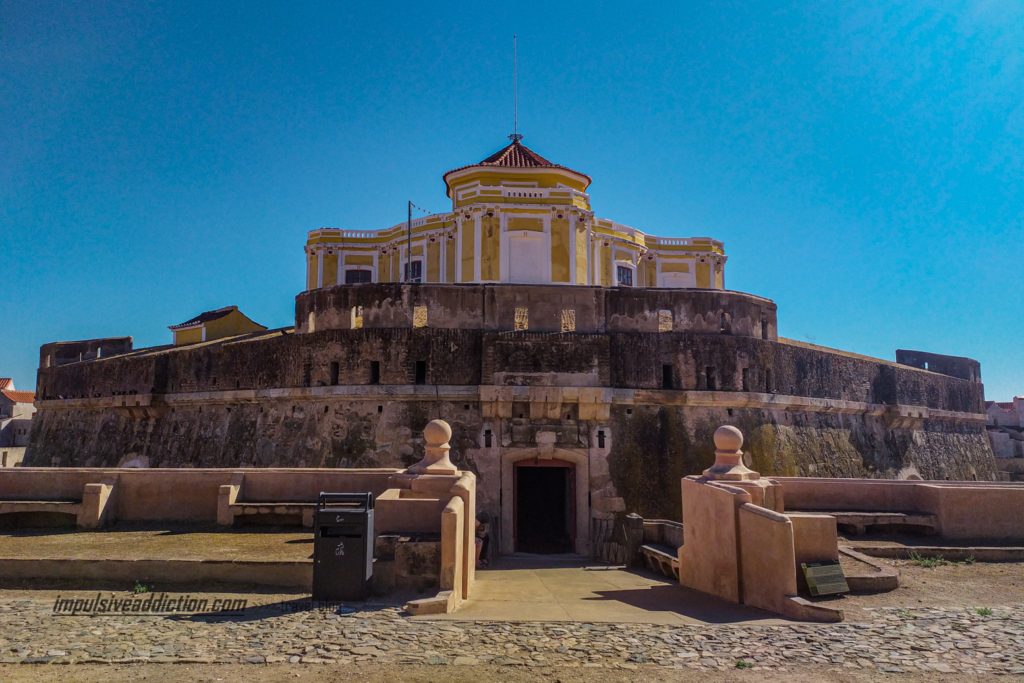
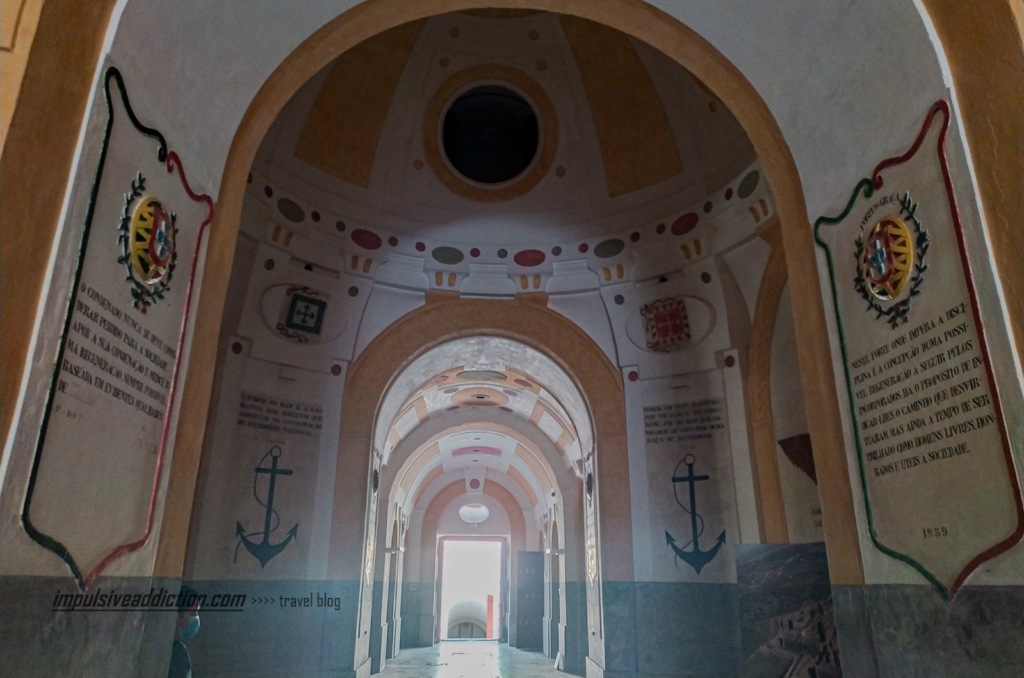
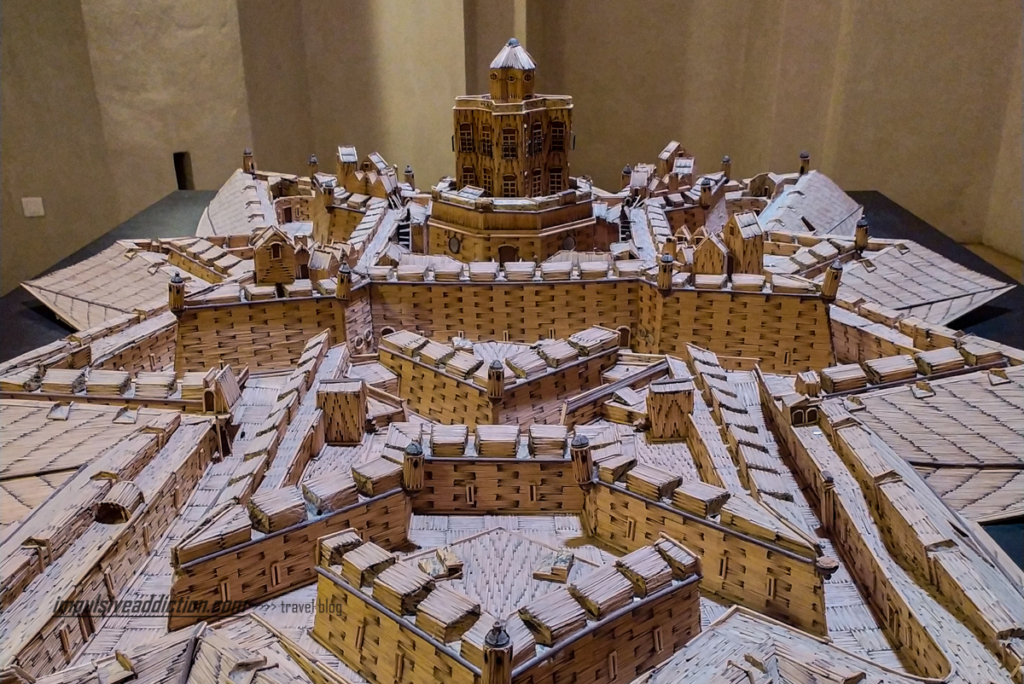
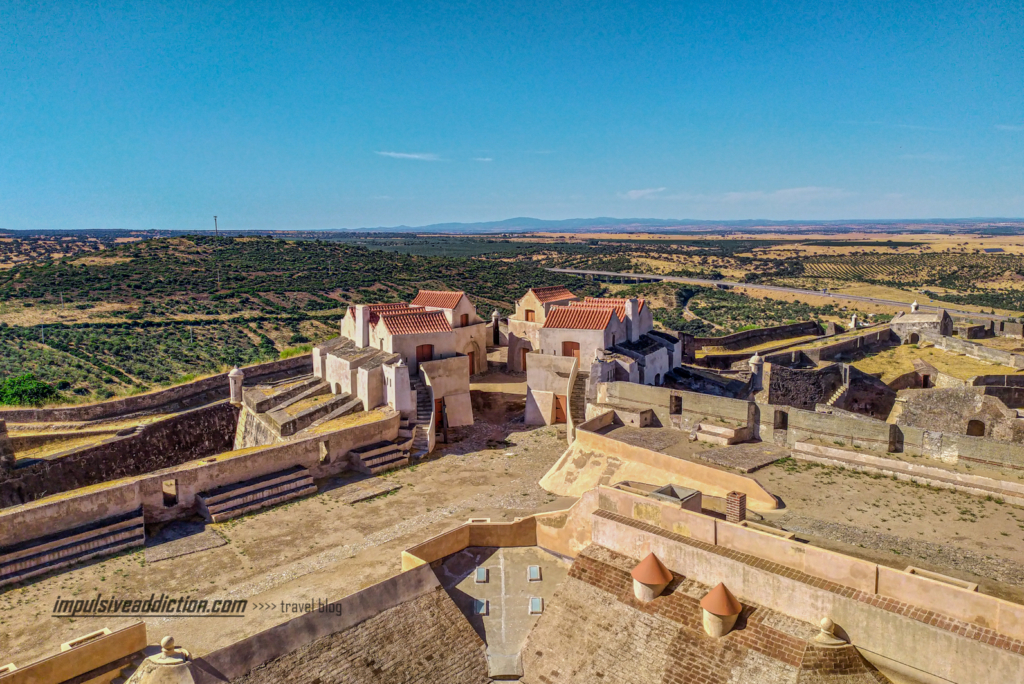
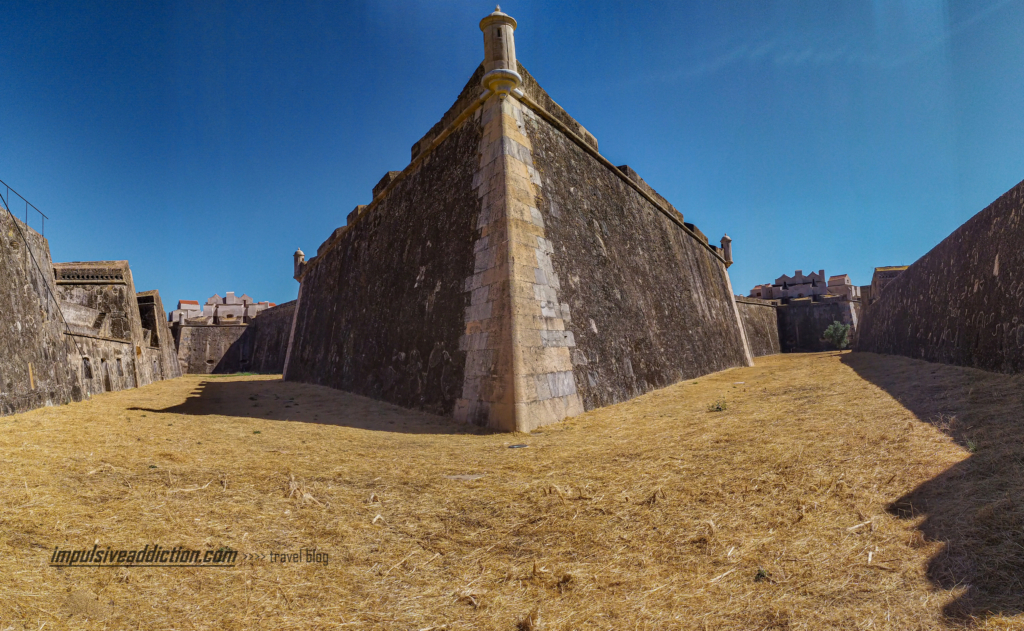
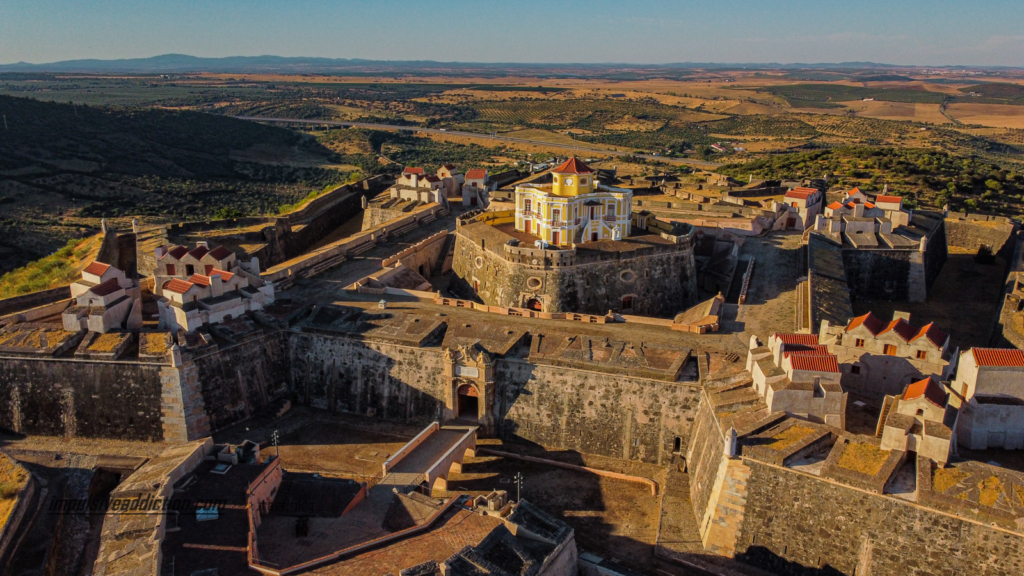
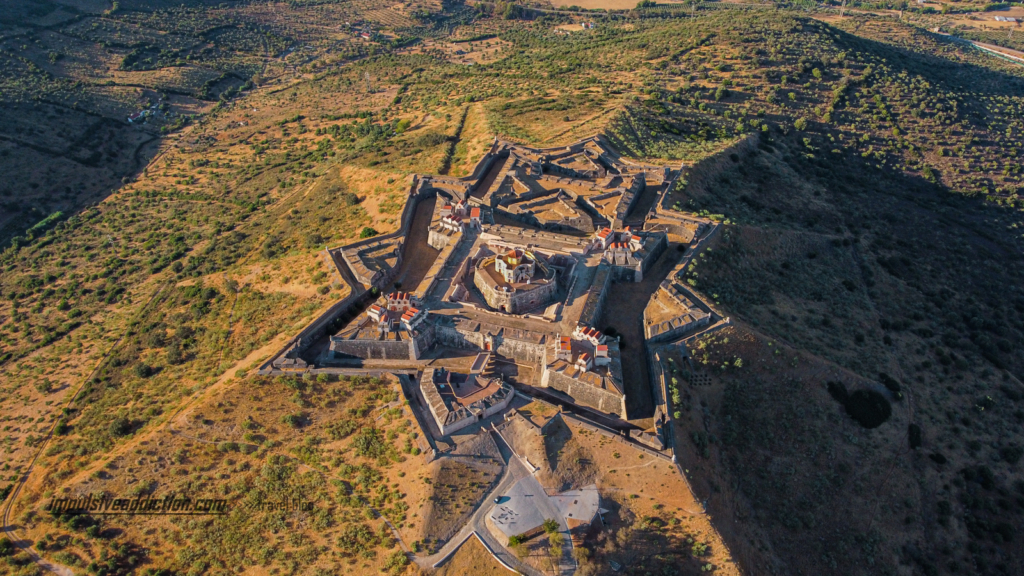
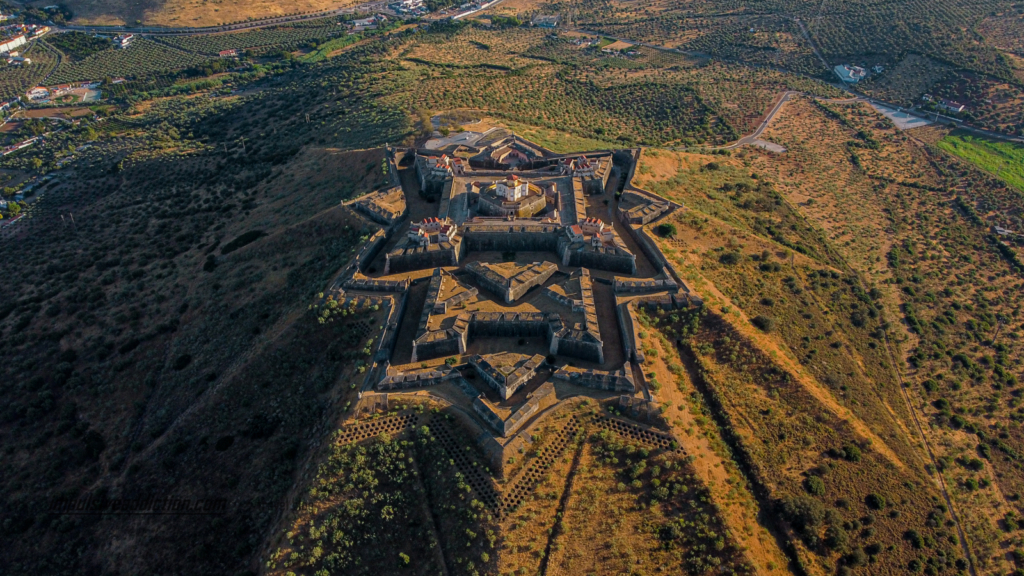
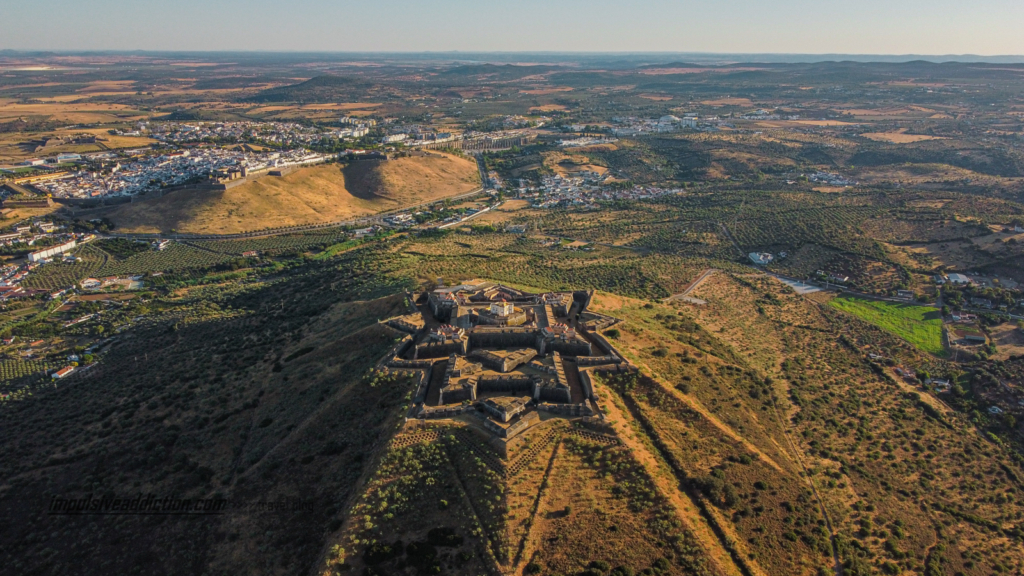
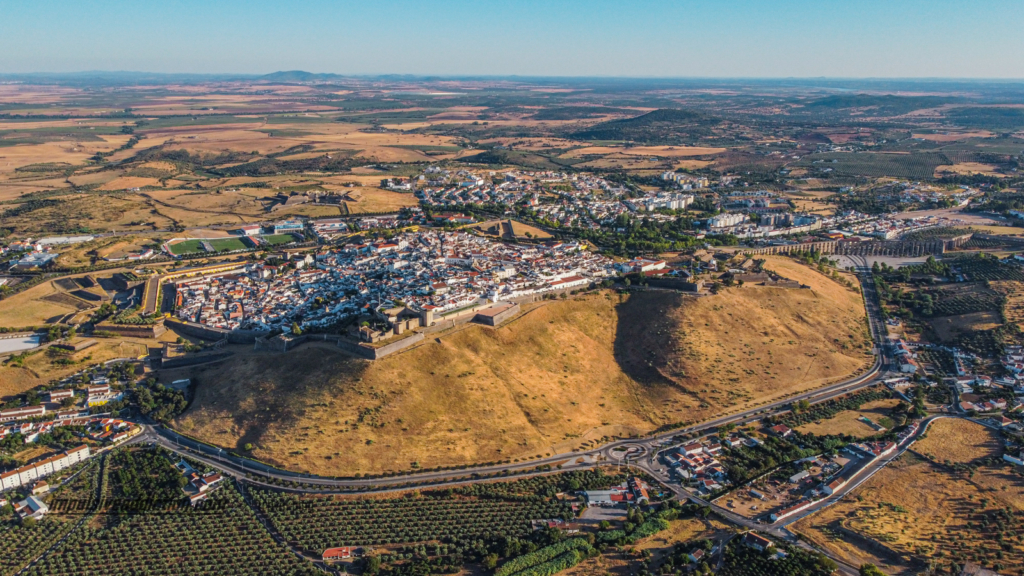
5. Ajuda Bridge
Ajuda Bridge is not far from Elvas, but it is currently in ruins and cannot be crossed either by car or on foot. It dates back to the 16th century and its destruction is mainly due to Spanish attacks during the war. The bridge was originally built for communication and movement between Elvas and Olivença, which was once part of Portuguese territory.
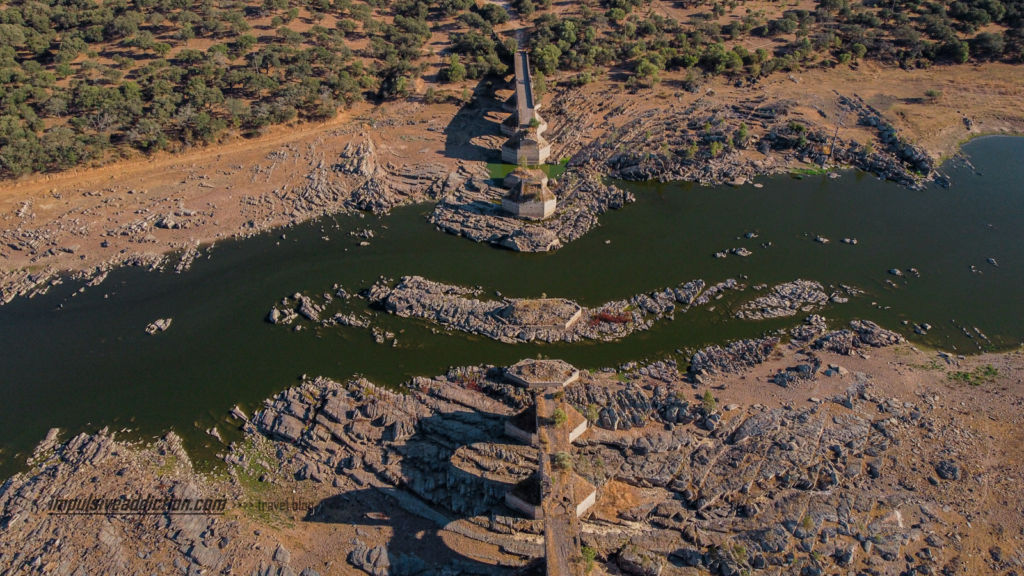
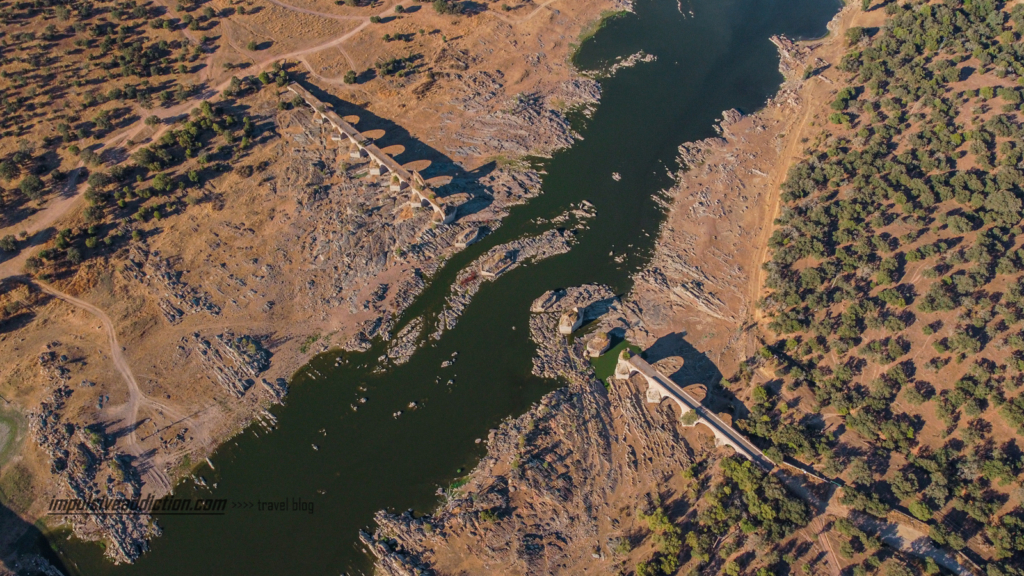
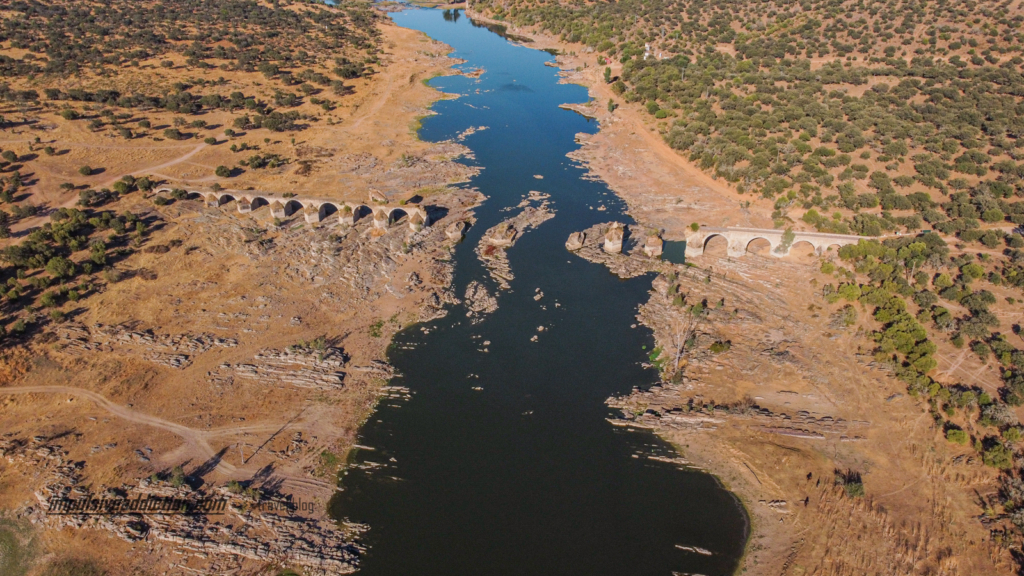
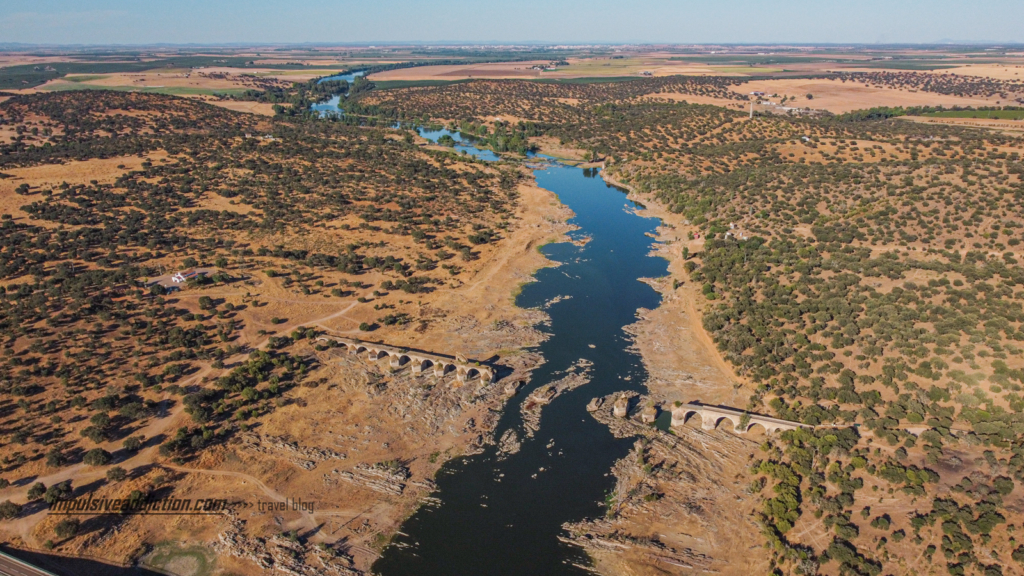
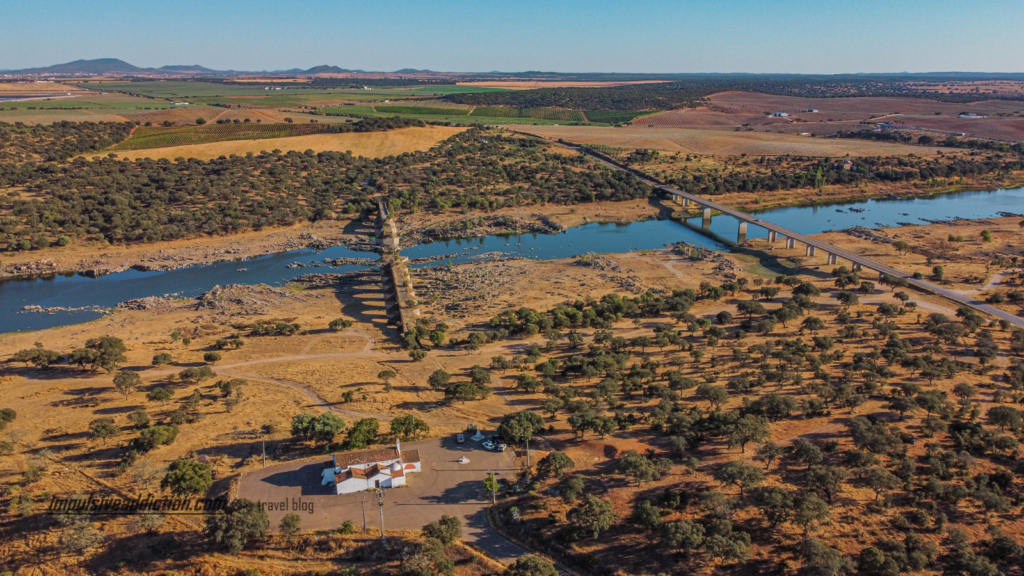
Optional extra: Visit Juromenha Fortress
Although it is already part of the municipality of Alandroal, in Évora, I cannot fail to mention the Juromenha Fortress in this article. It was in ruins when I visited, but restoration work was about to begin.
There are references to this place as far back as the 9th century, but it was only conquered from the Moors definitively in the 13th century. It was rebuilt during the reign of King Dinis, and then adapted to the bastioned style after the restoration of independence.
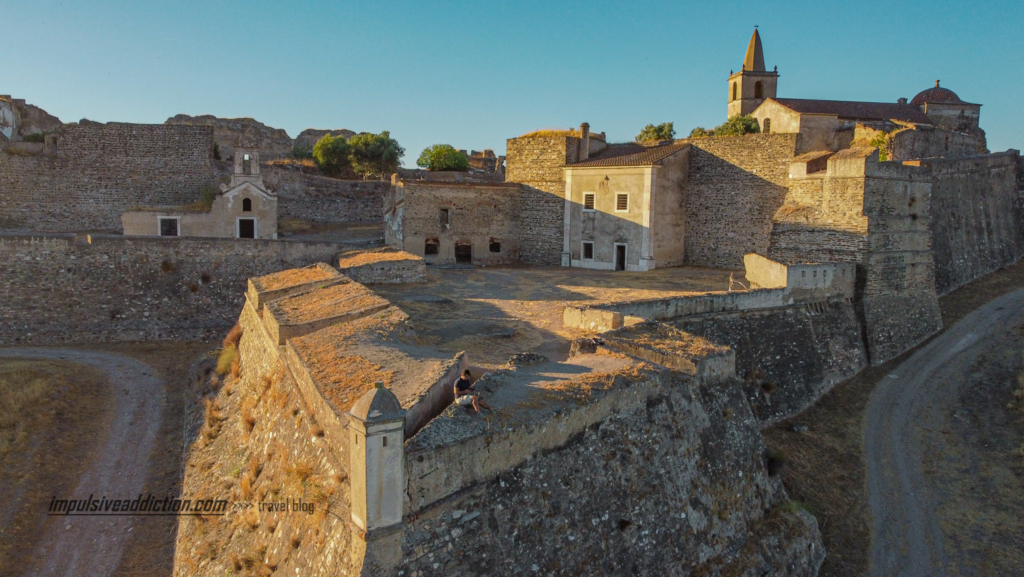
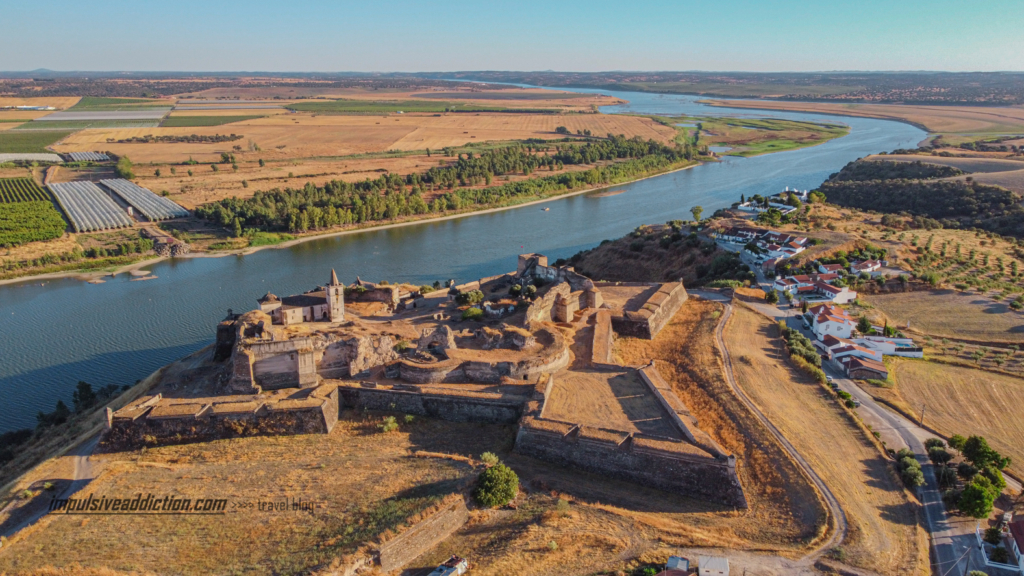
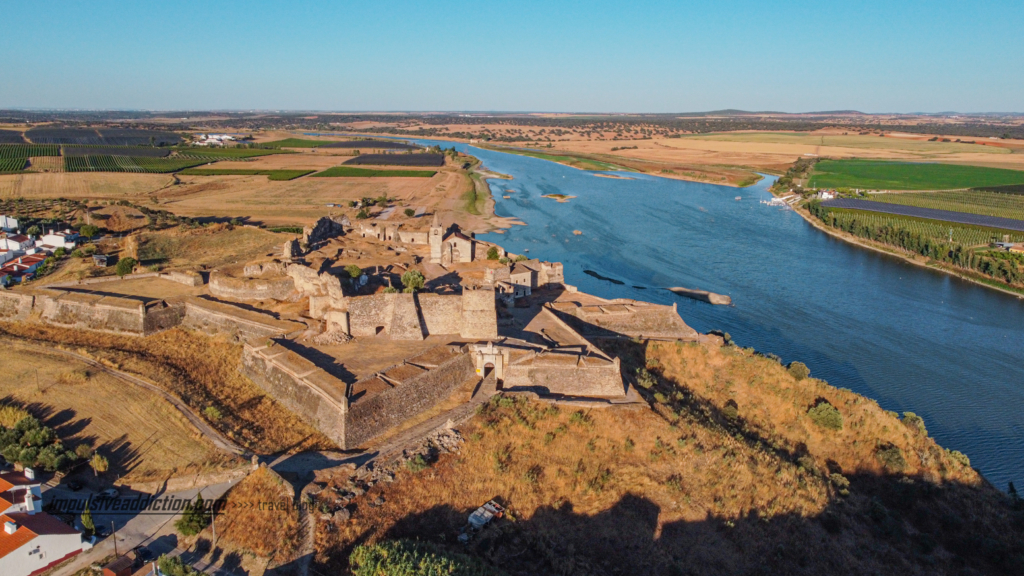
Other Itineraries and Travel Guides in Portugal
- N2 Portugal Road Trip Itinerary
- Madeira Itinerary and Travel Guide
- São Miguel Itinerary and Travel Guide (Azores)
- Terceira Itinerary and Travel Guide (Azores)
- Pico Itinerary in Azores
- Faial Itinerary in Azores
- Minho | Northern Portugal Itinerary
- Porto Itinerary and Travel Guide
- Things to do In Braga (Minho)
- Things to do in Guimarães (Minho)
- Things to do in Viana do Castelo (Minho)
- Peneda Gerês National Park Itinerary
- Douro Valley Itinerary
- Trás-os-Montes Itinerary
- Things to do in Bragança
- Montesinho Natural Park Itinerary
- Douro International Natural Park Itinerary
- Things to do in Aveiro
- Things to do in Coimbra
- Things to do in Leiria
- Things to do in Fatima
- Things to do in Nazaré
- Things to do in Peniche
- Things to do in Évora (Alentejo)
- Things to do in Beja (Alentejo)
- Algarve Road Trip Itinerary
- Things to do in Lagos (Algarve)
- Things to do in Portimão (Algarve)
- Things to do in Faro (Algarve)
- Things to do in Tavira (Algarve)
I hope you enjoyed this article with things to do in Elvas. Have a nice time in my country! 😉
